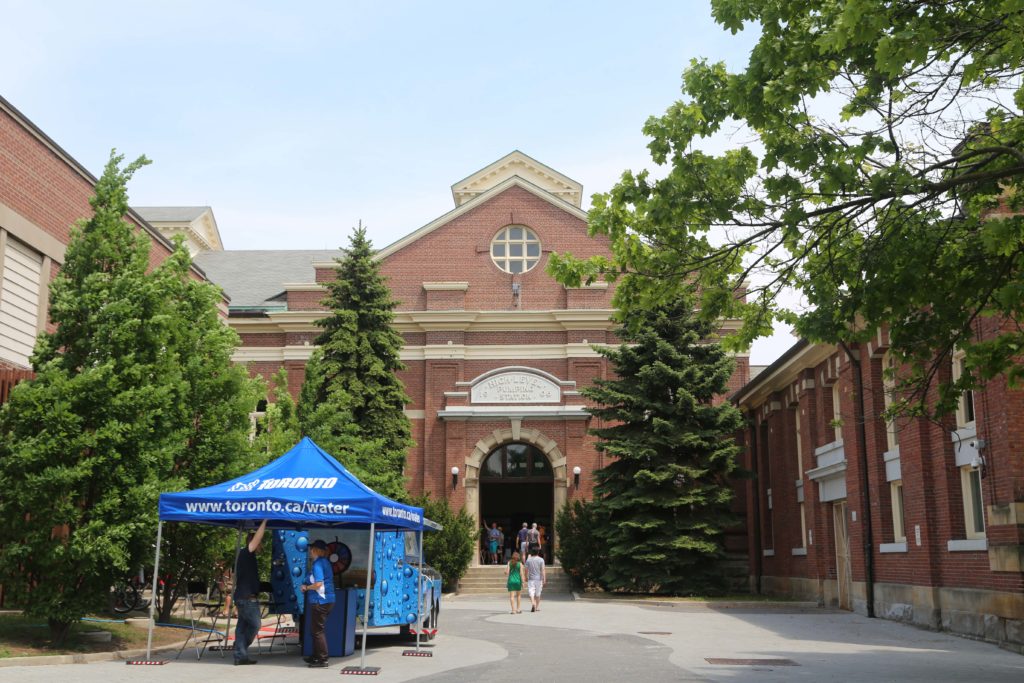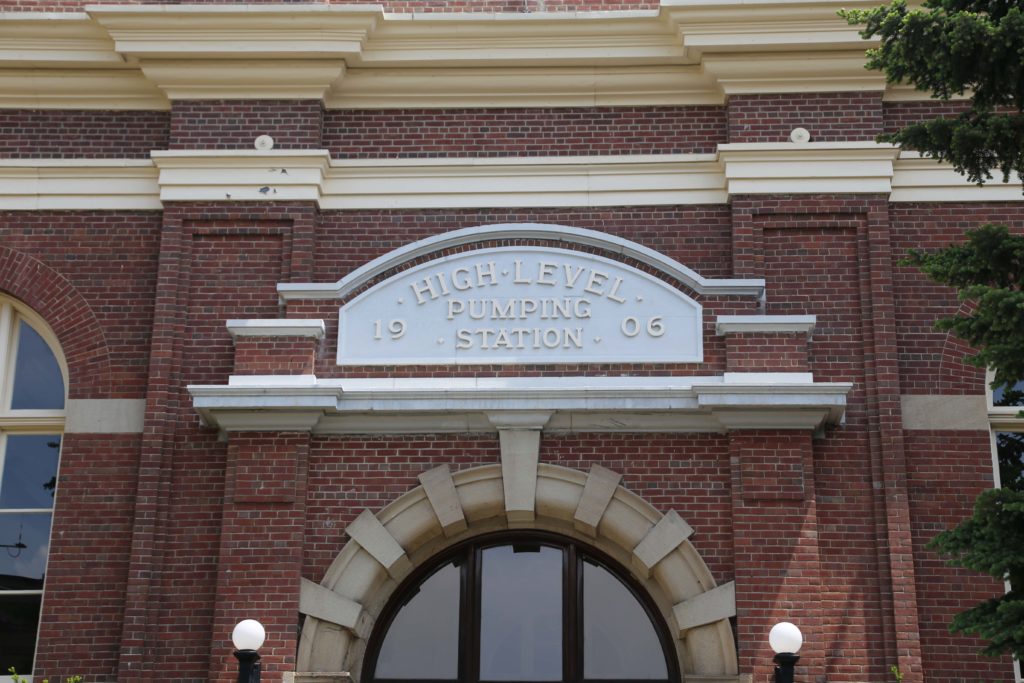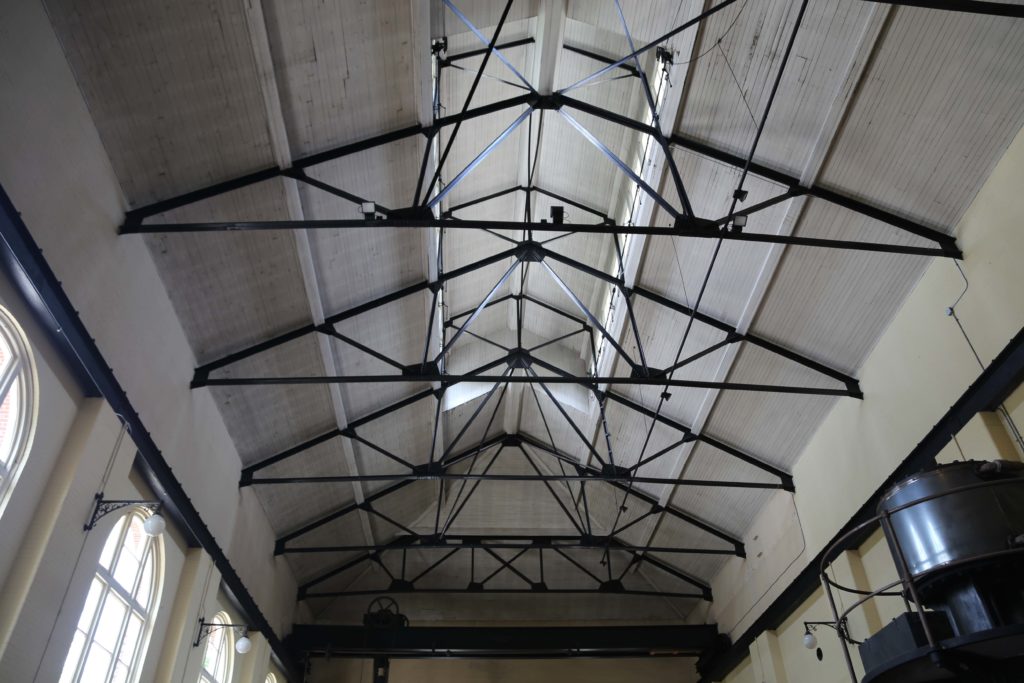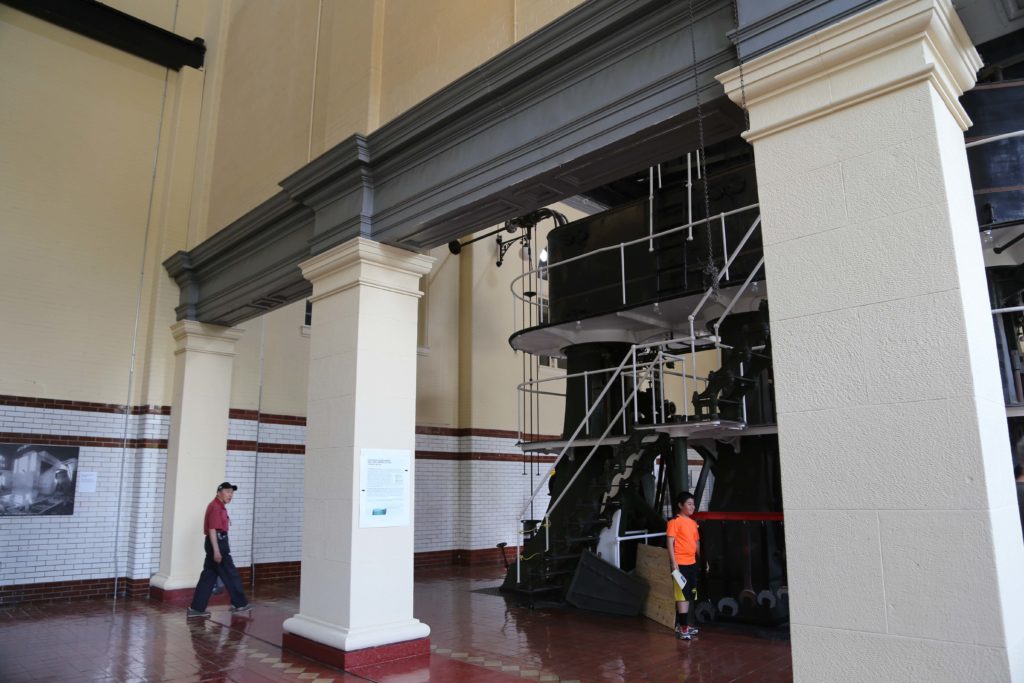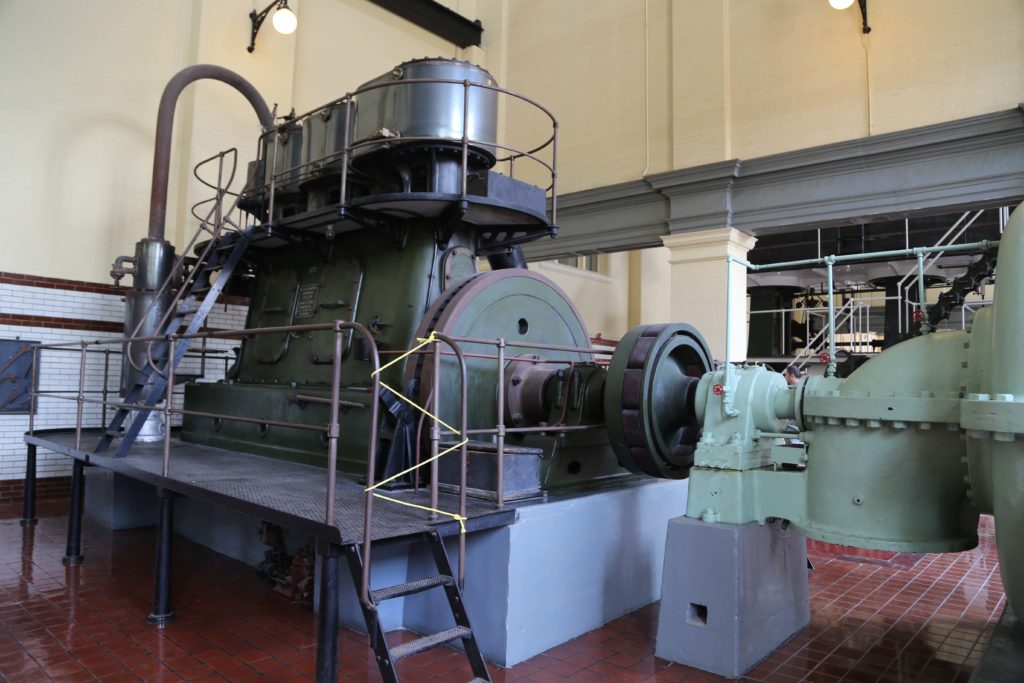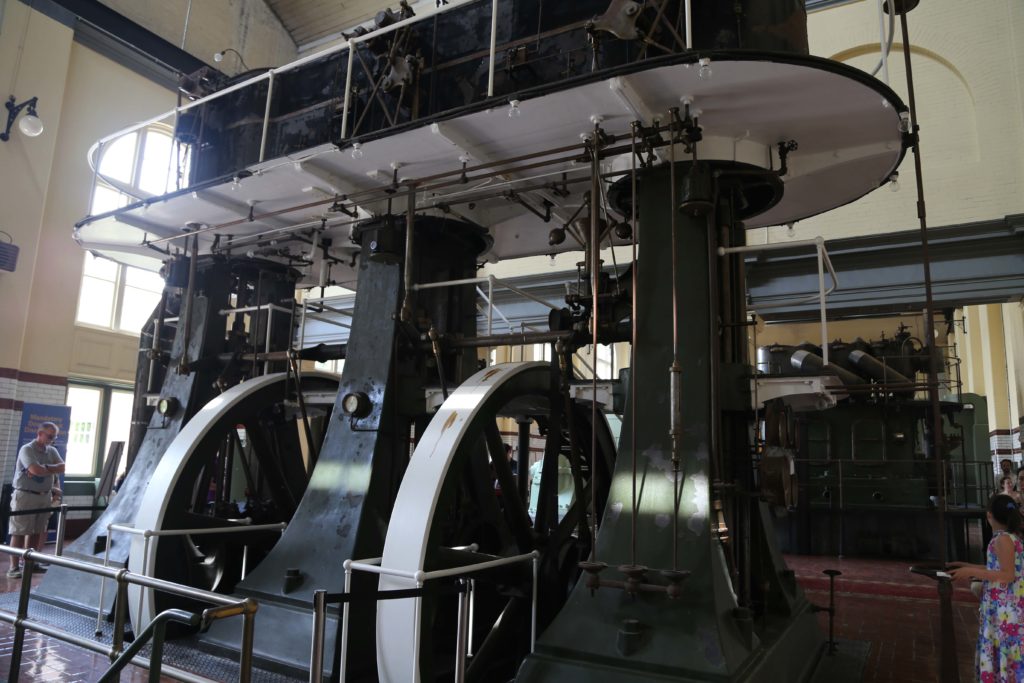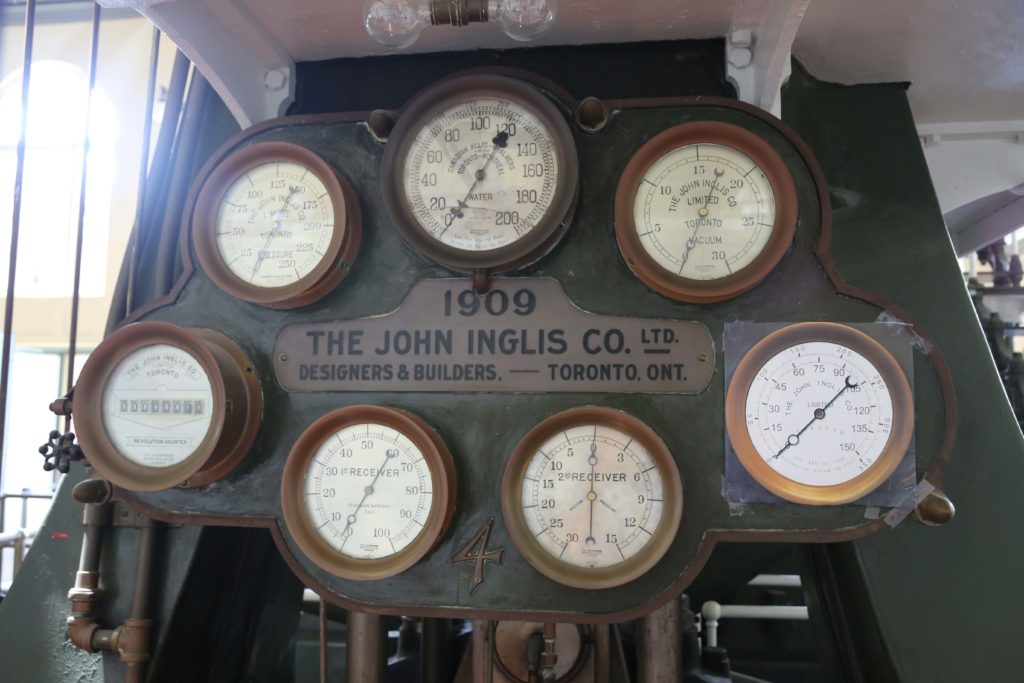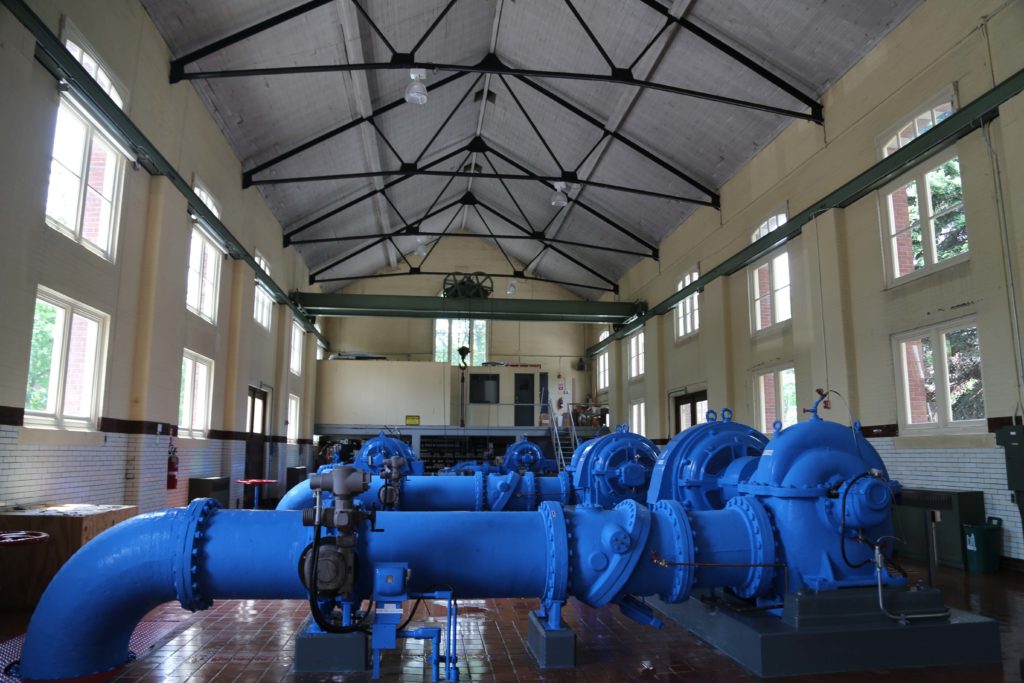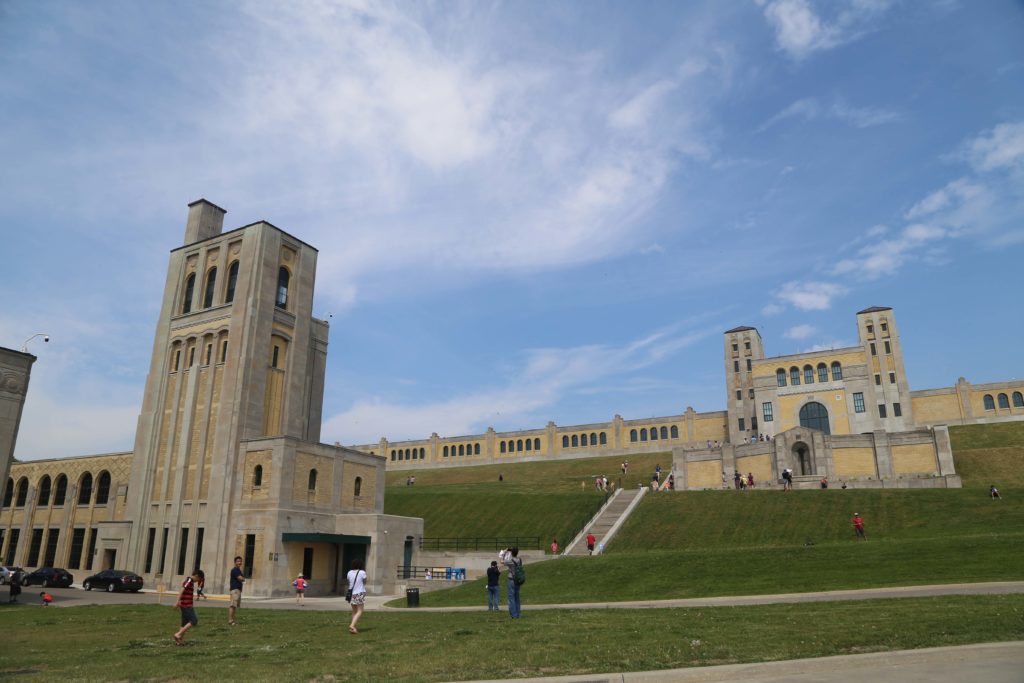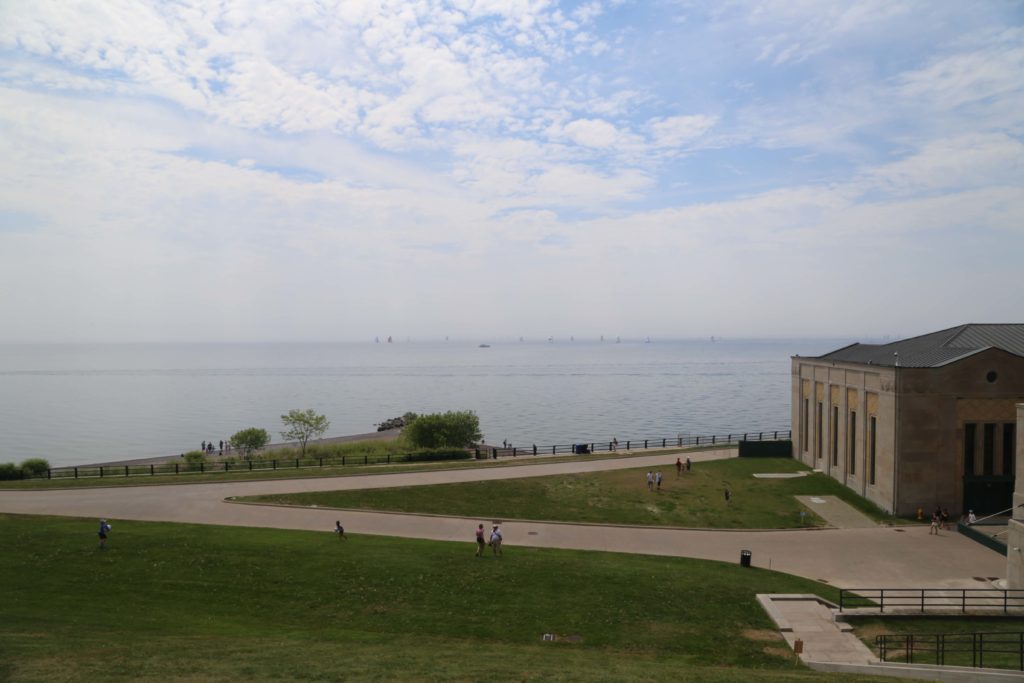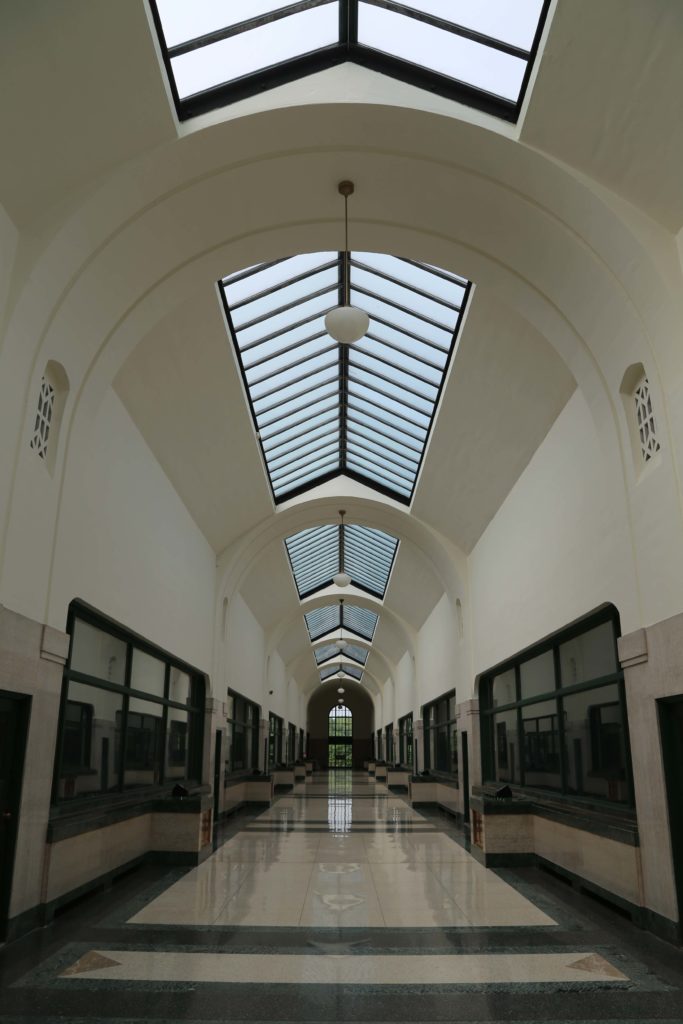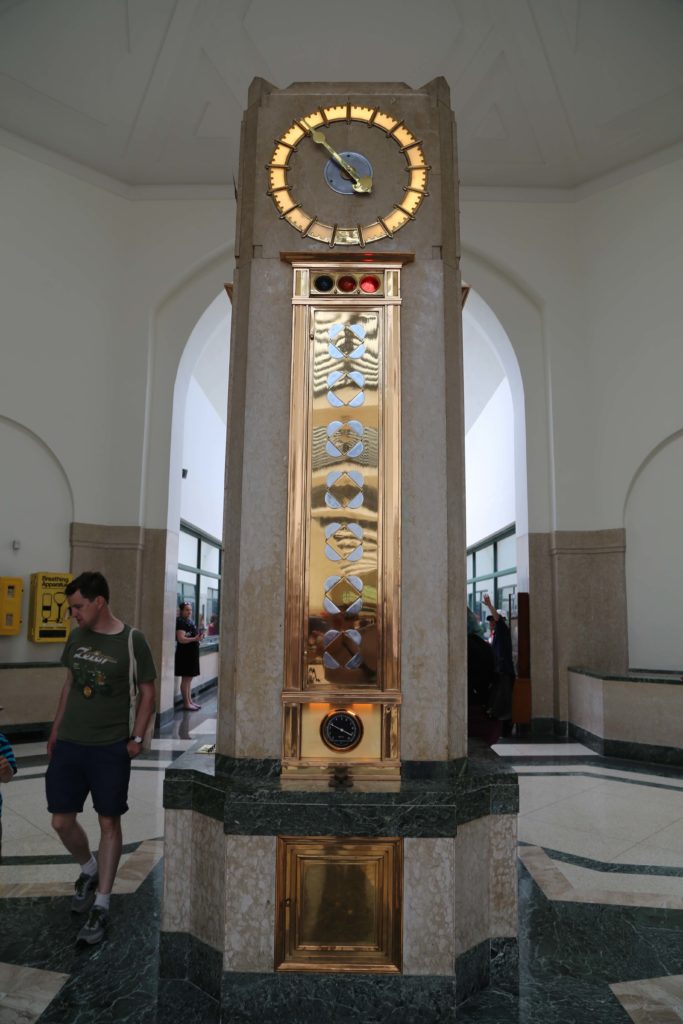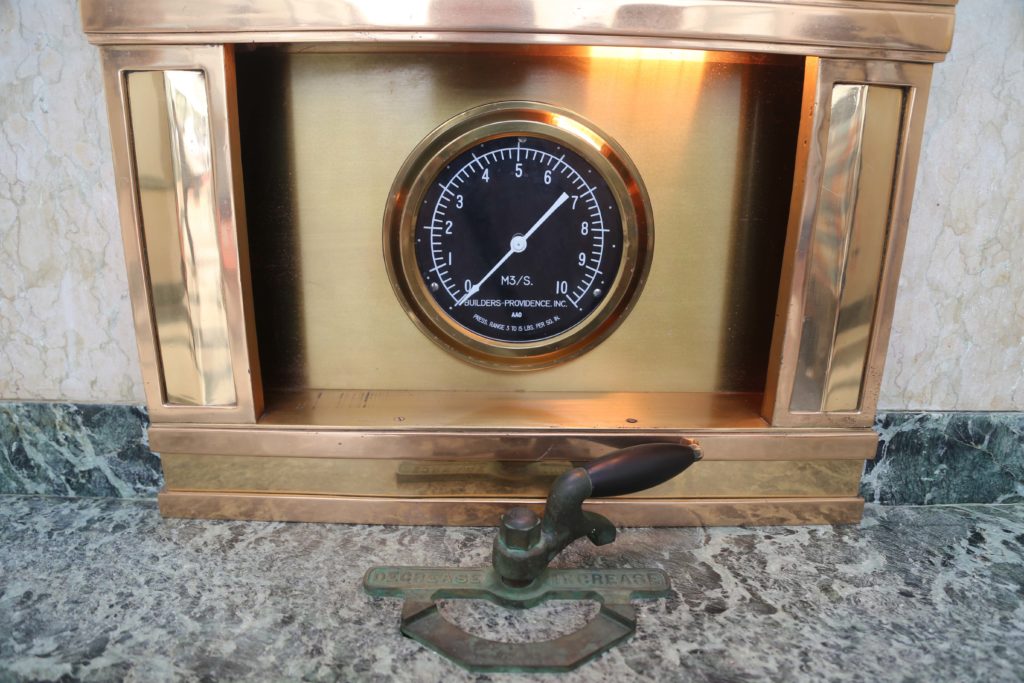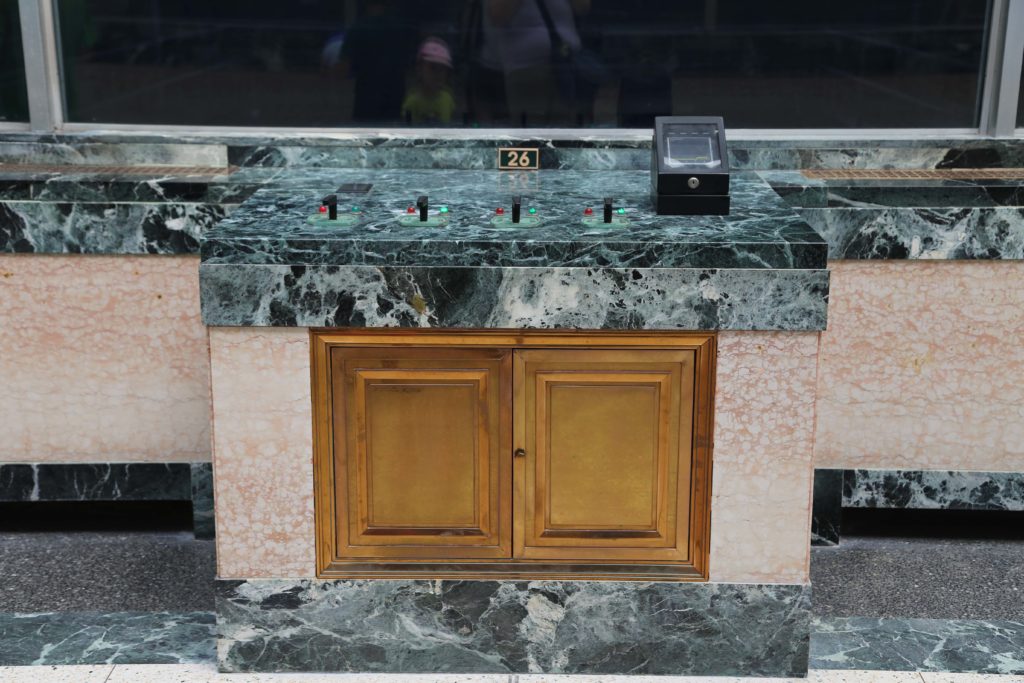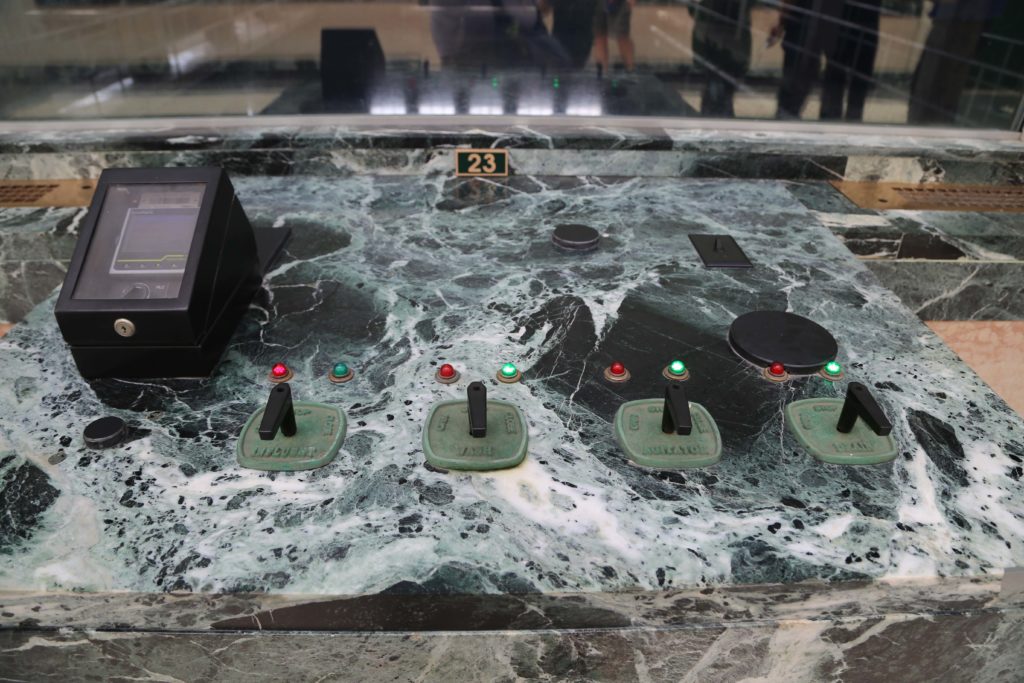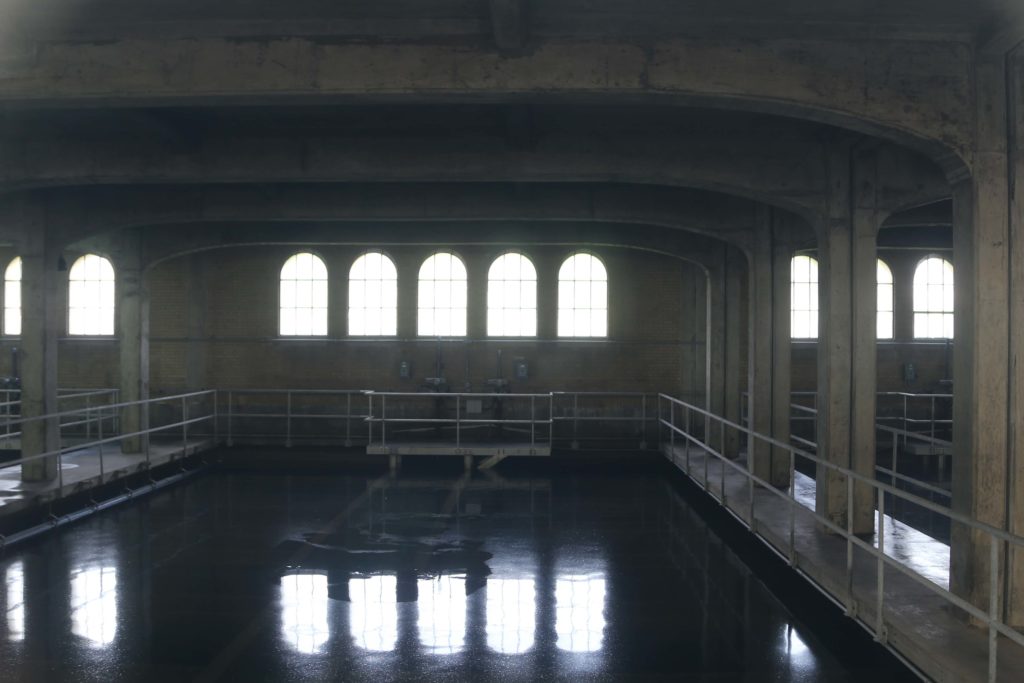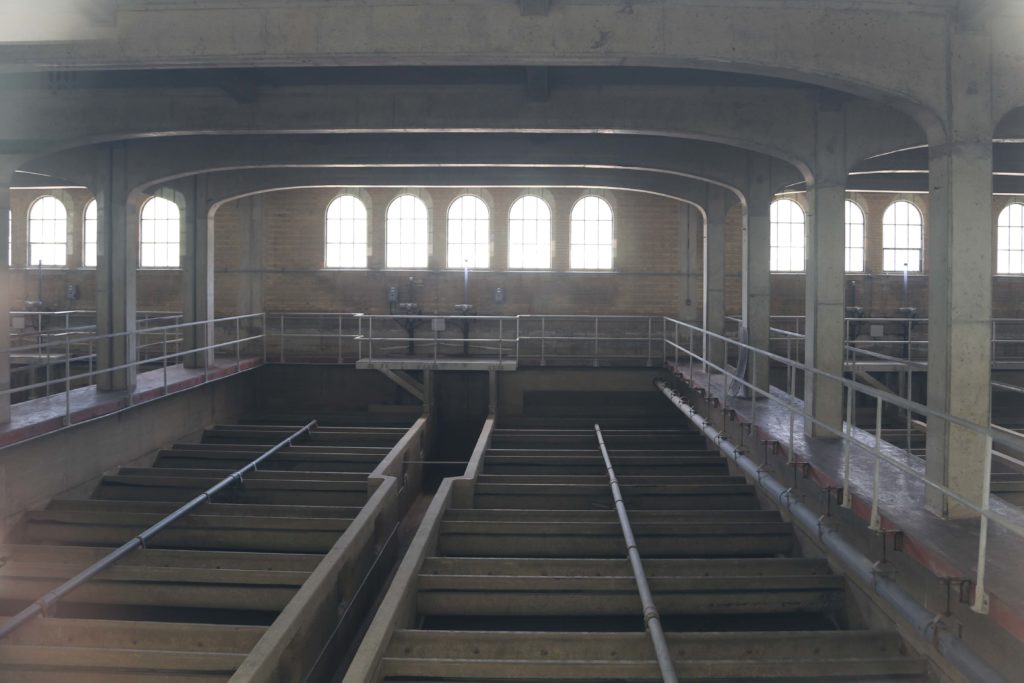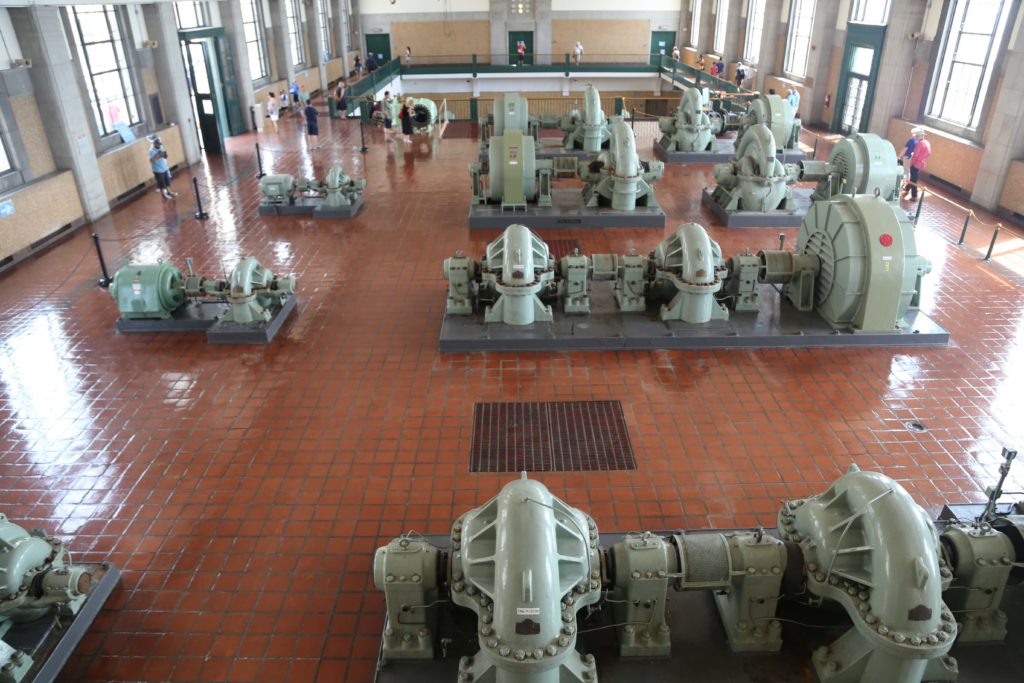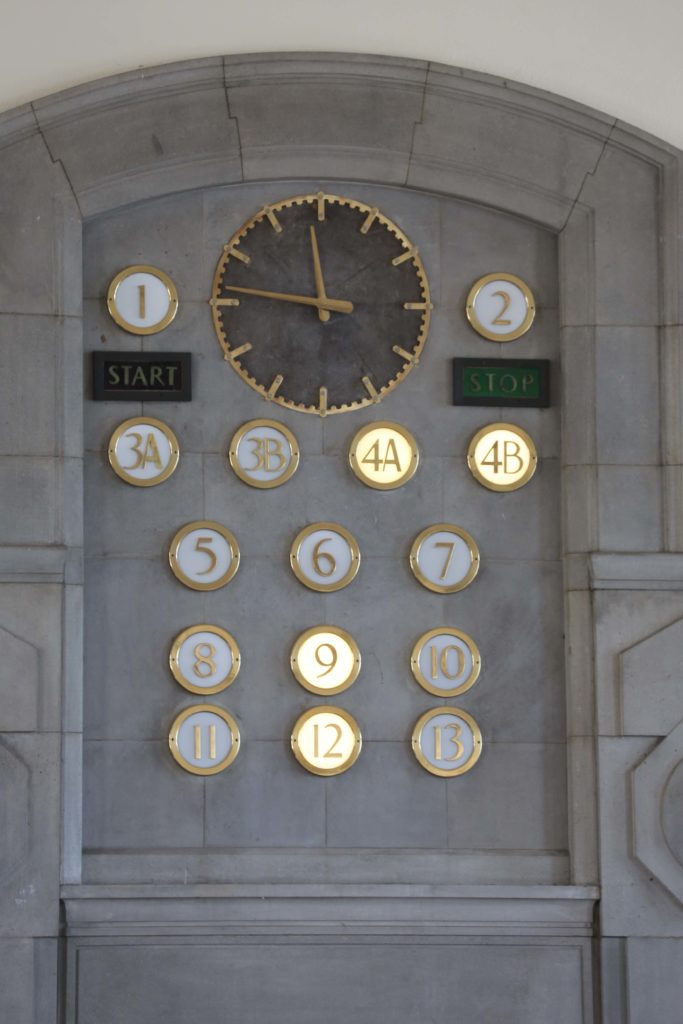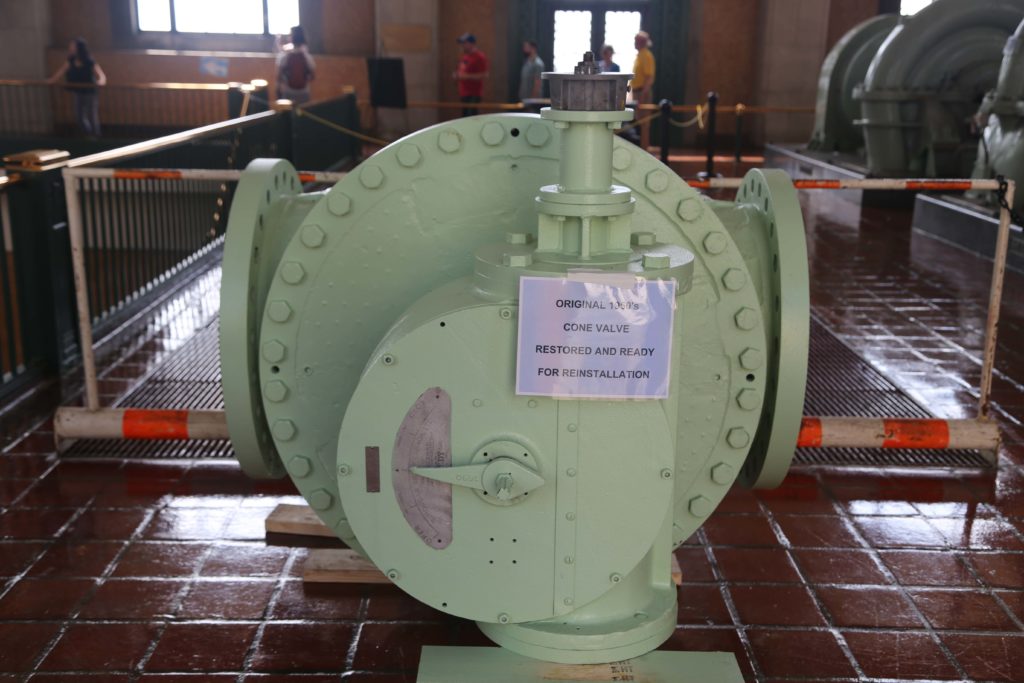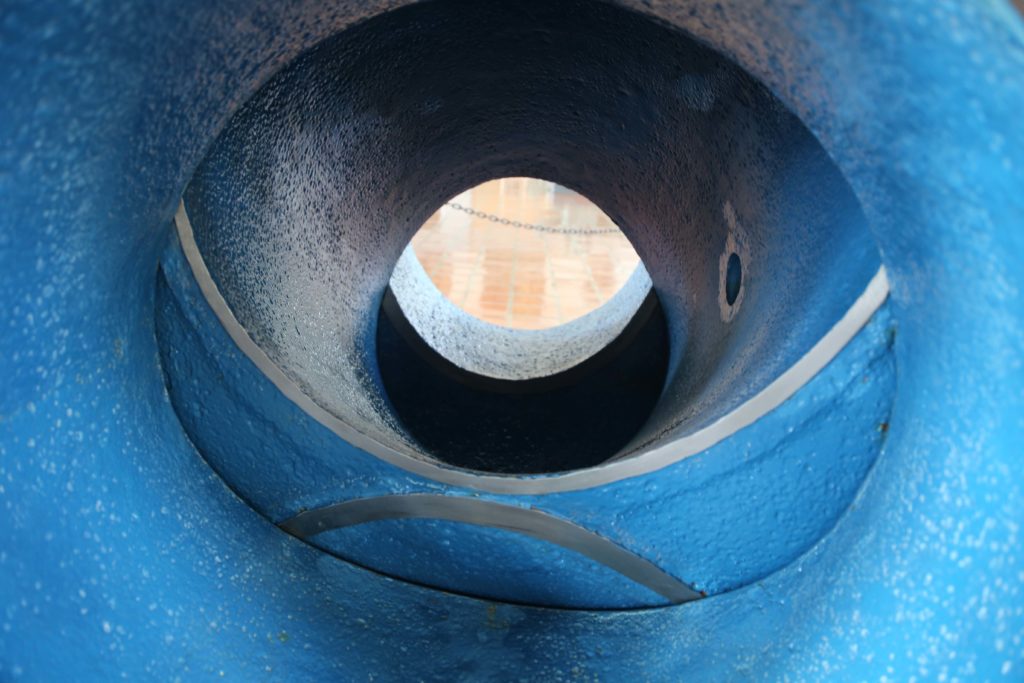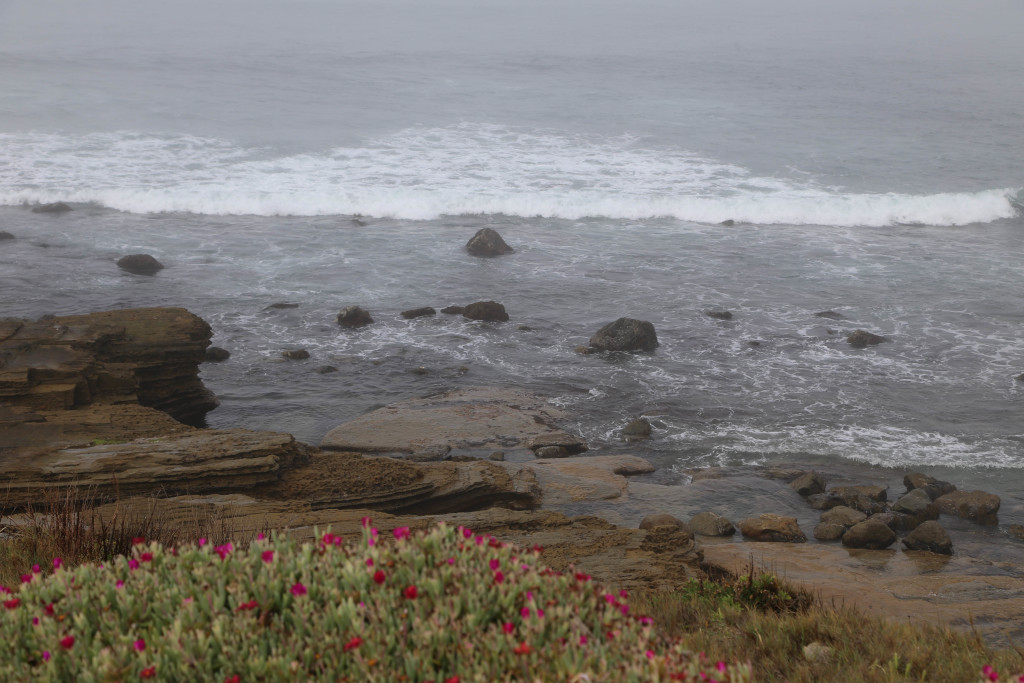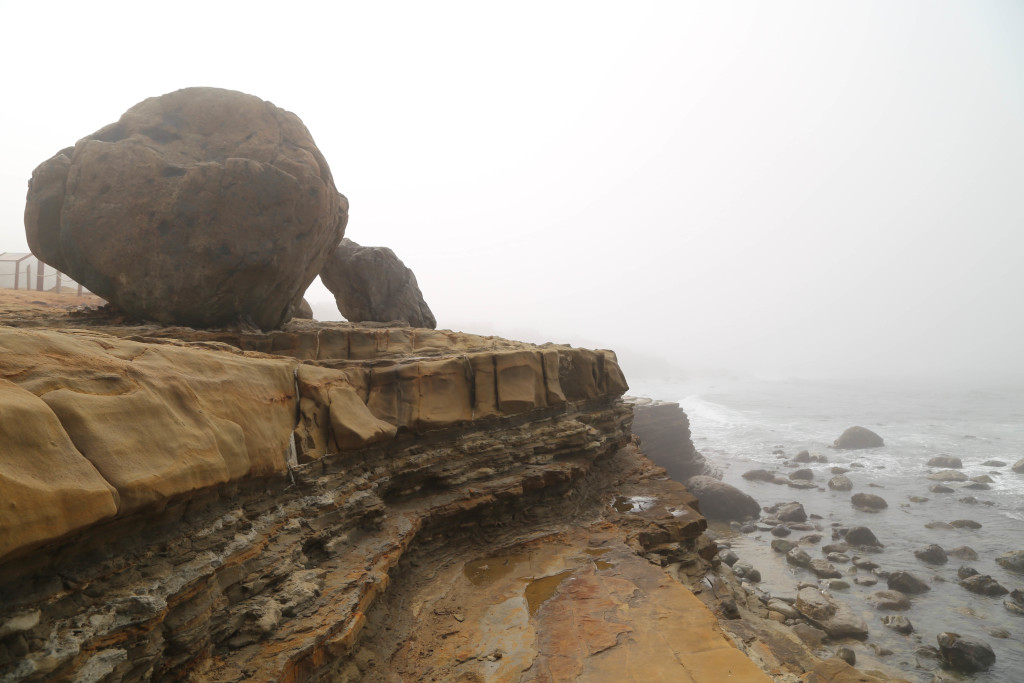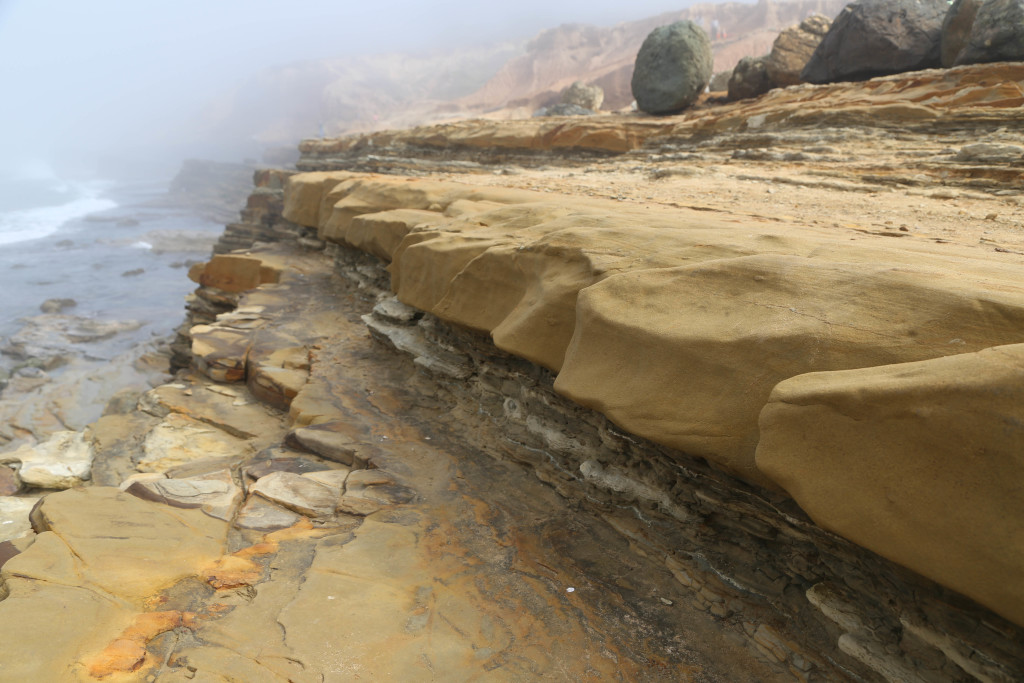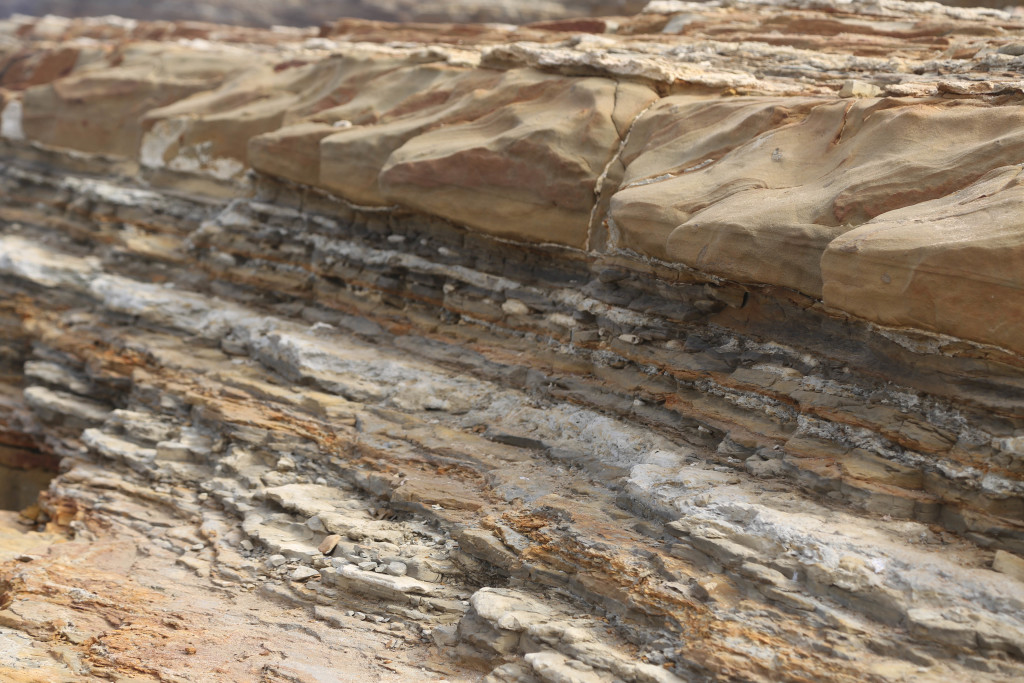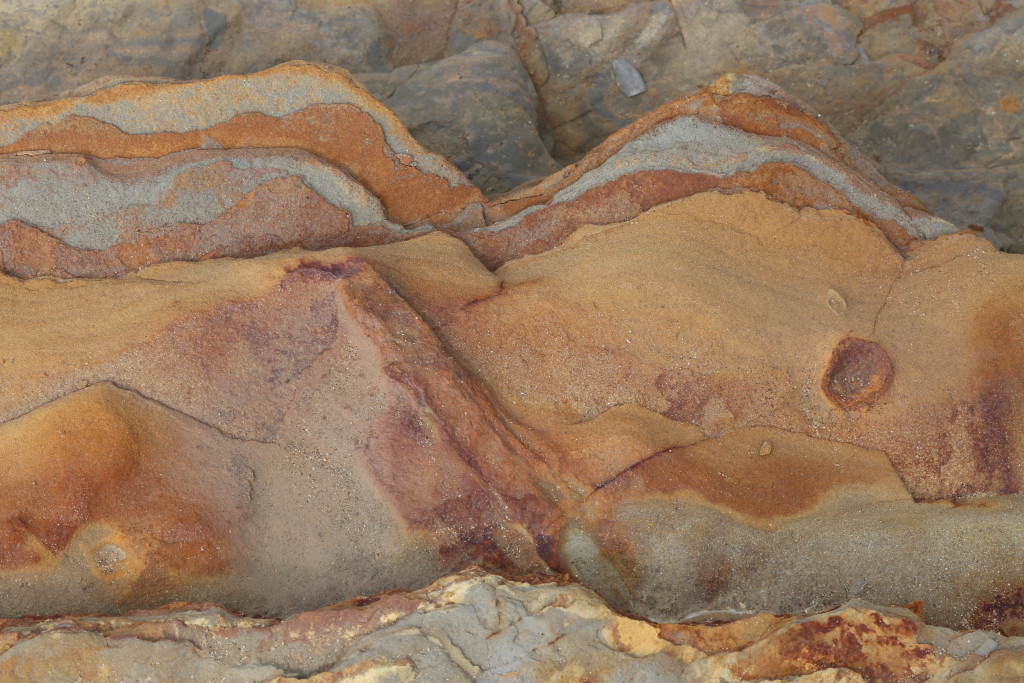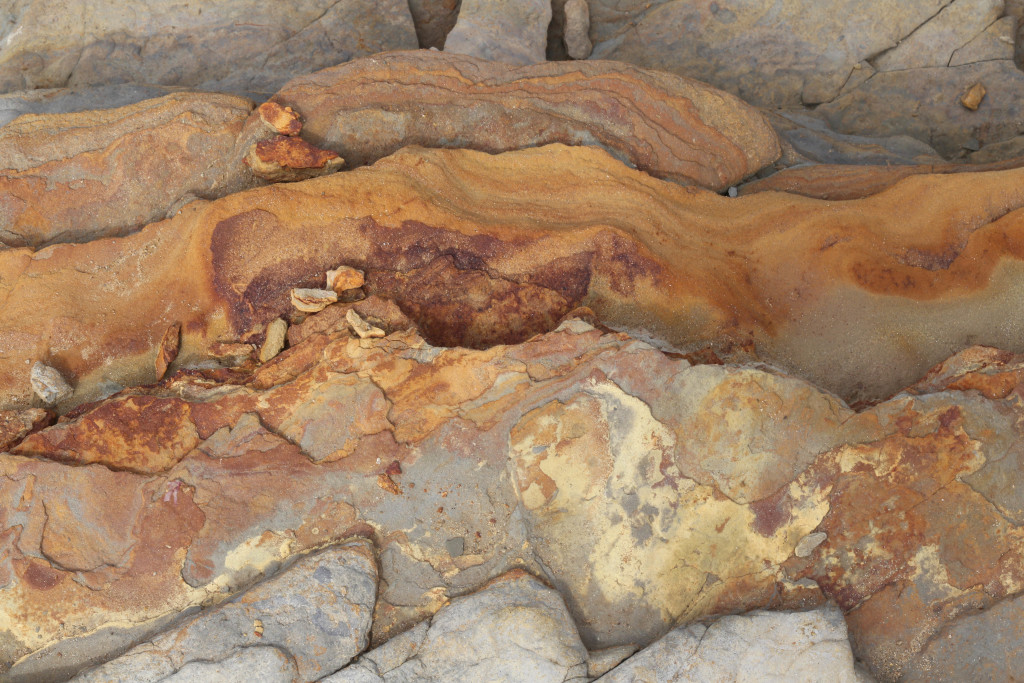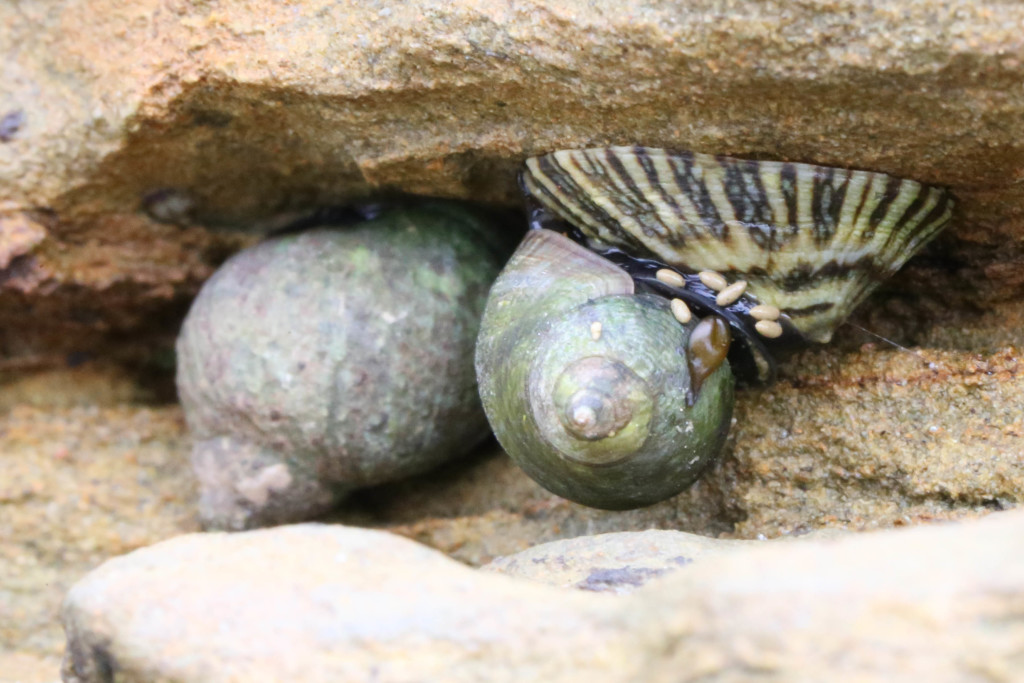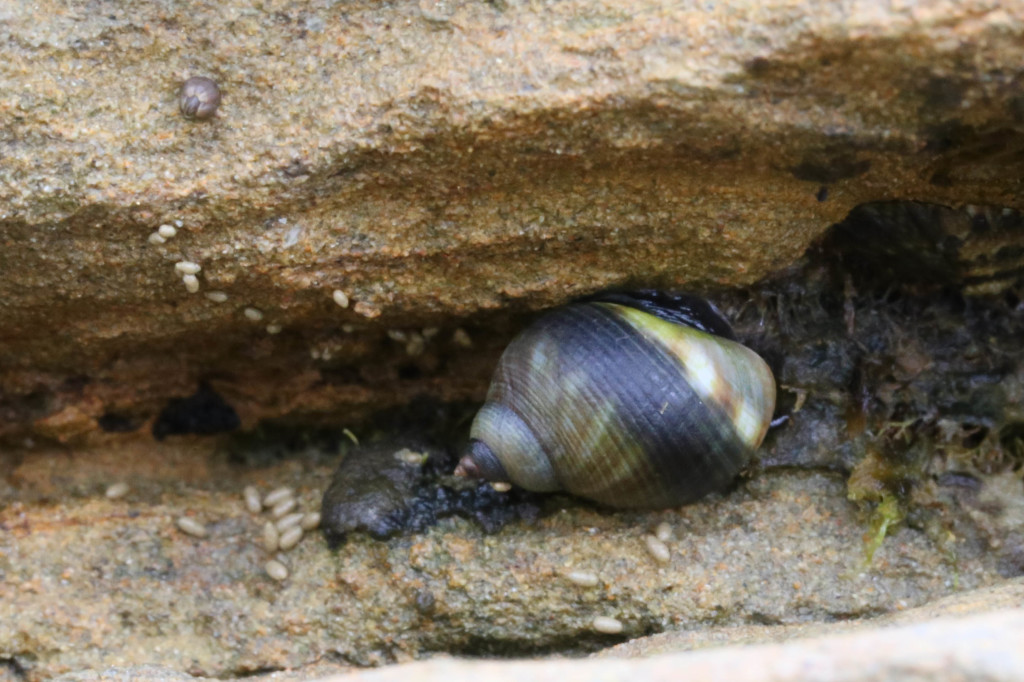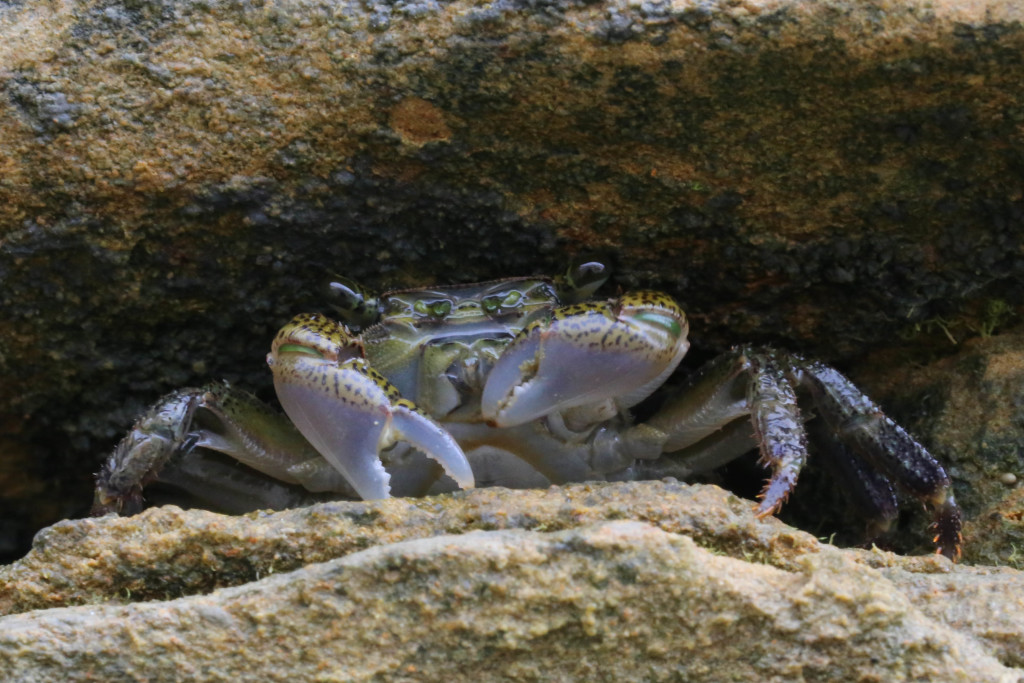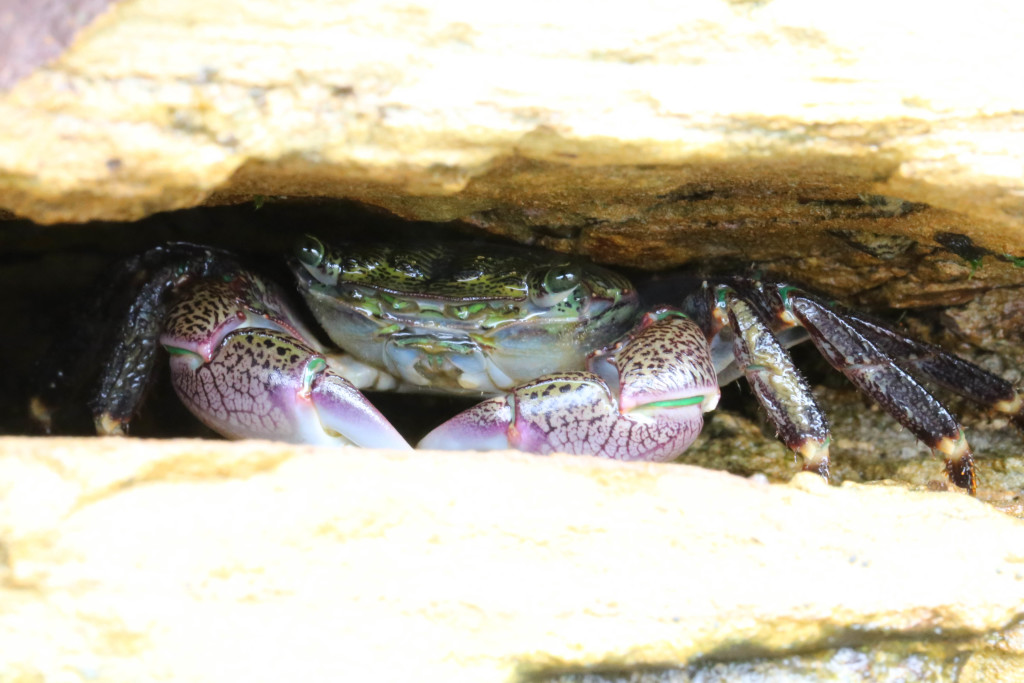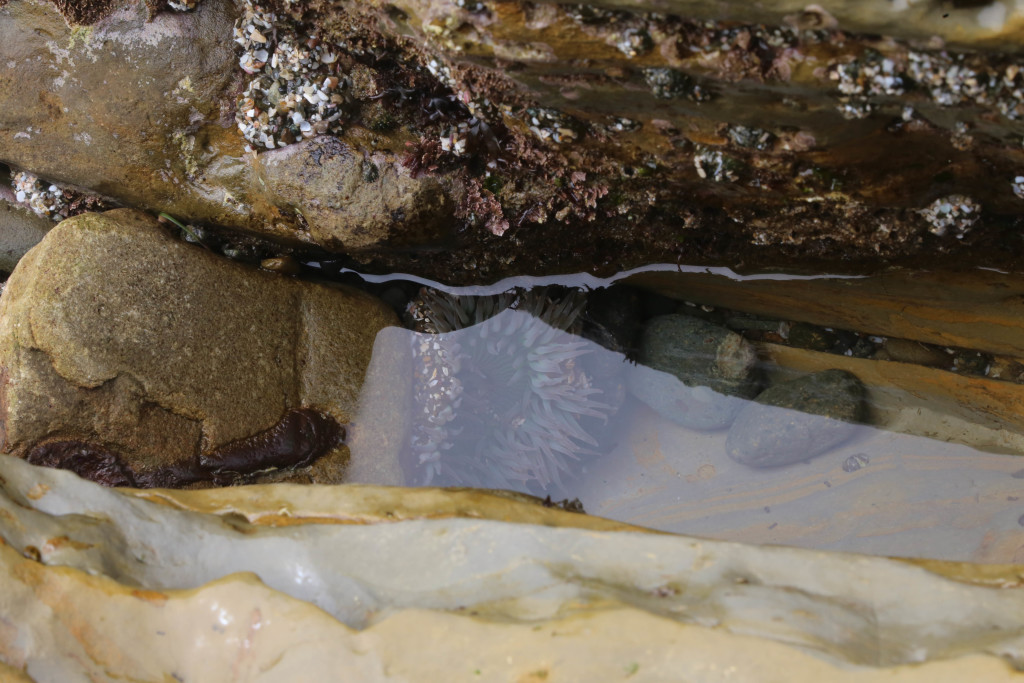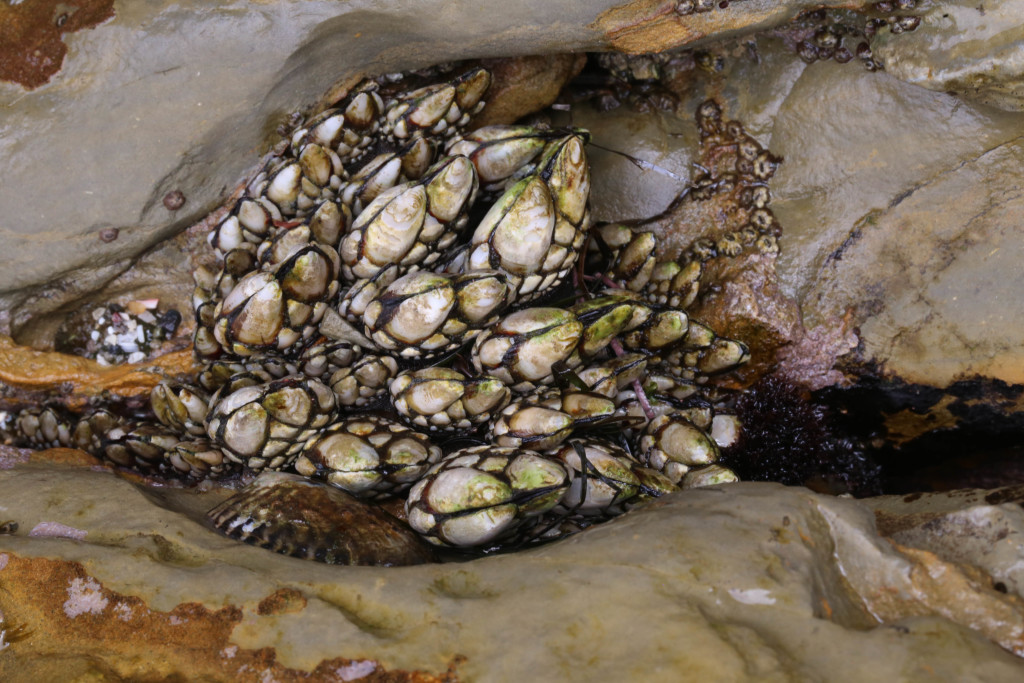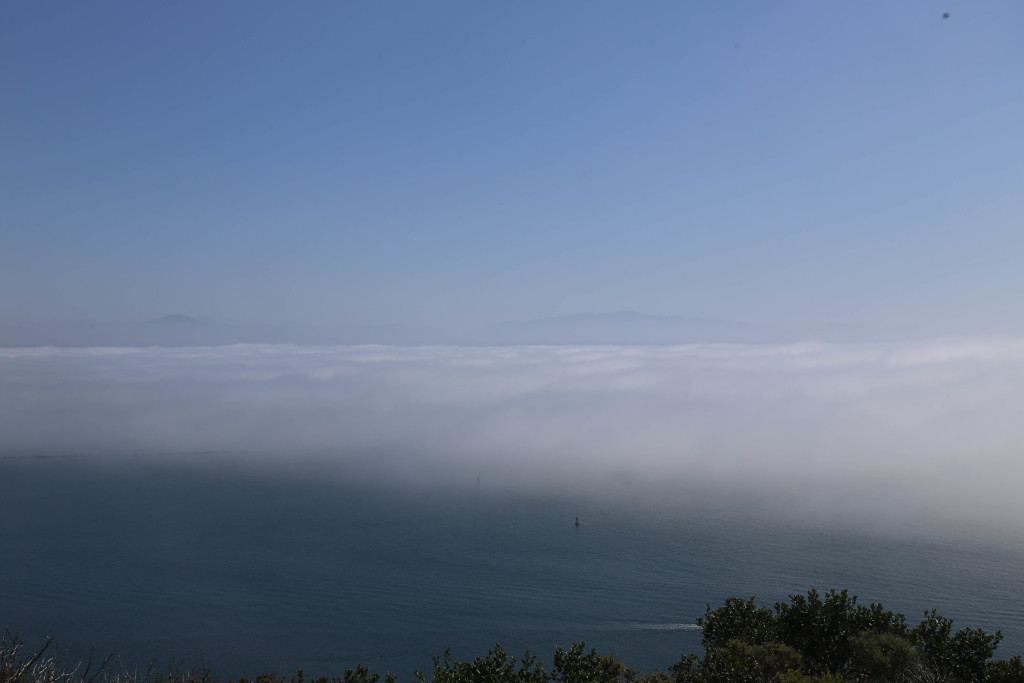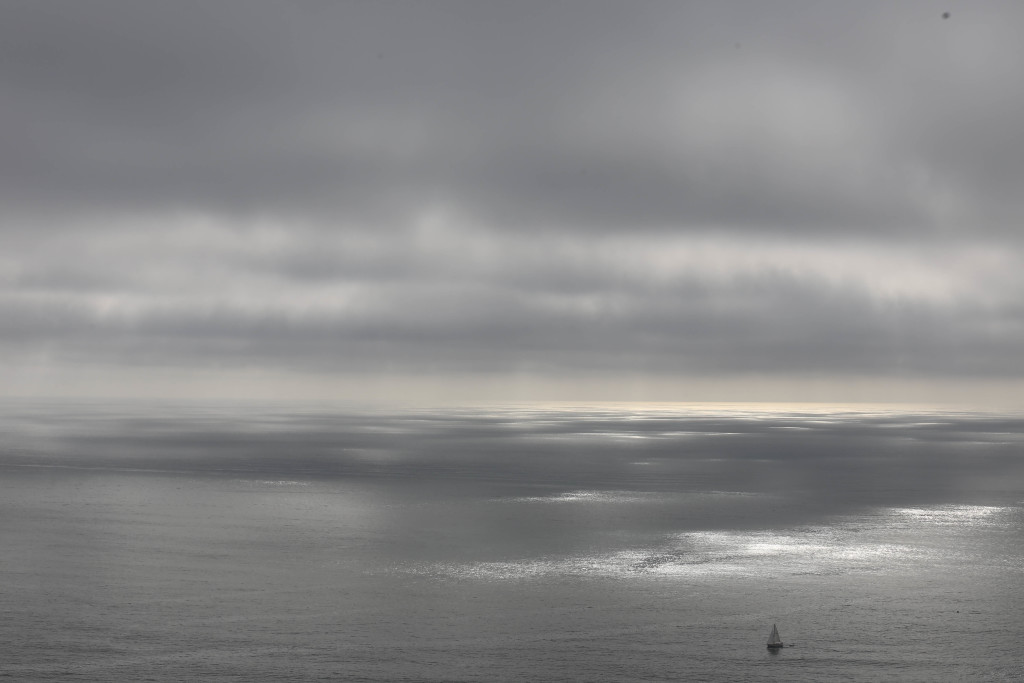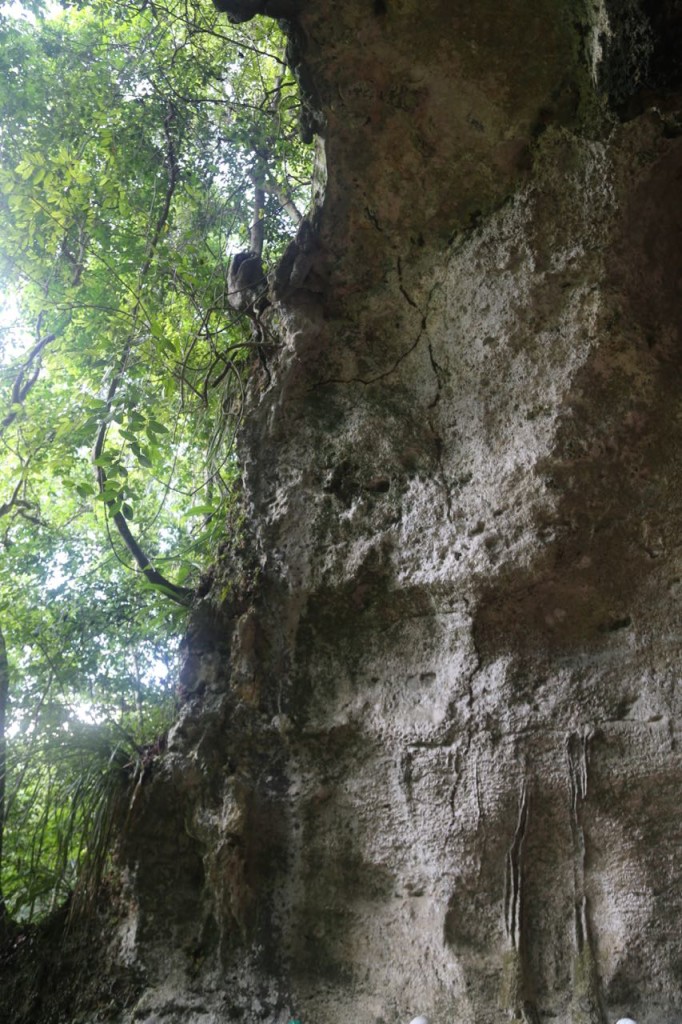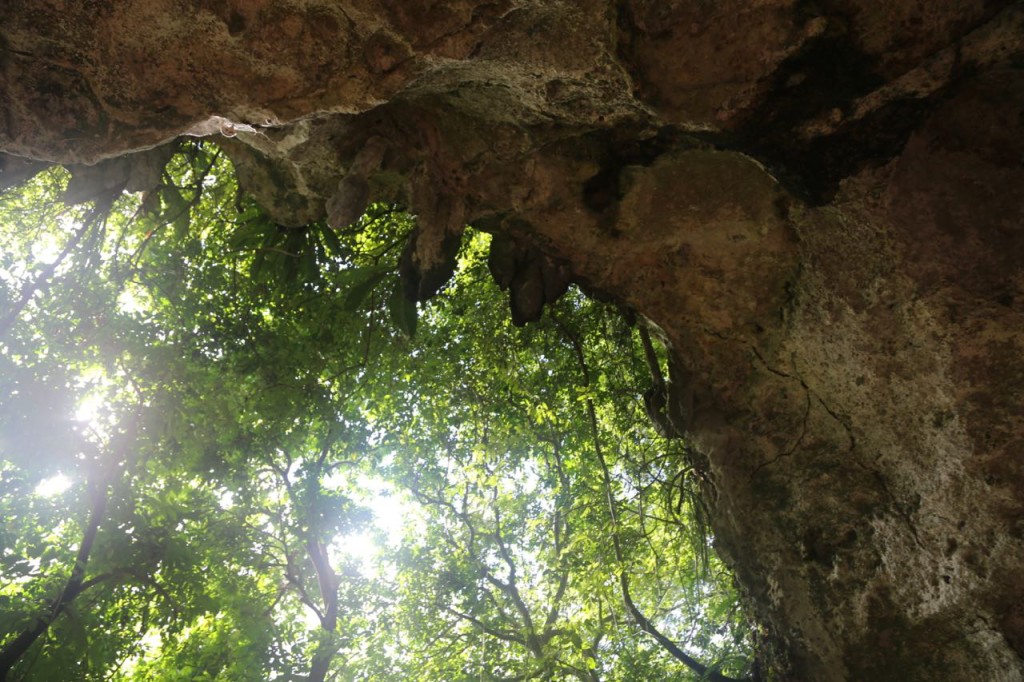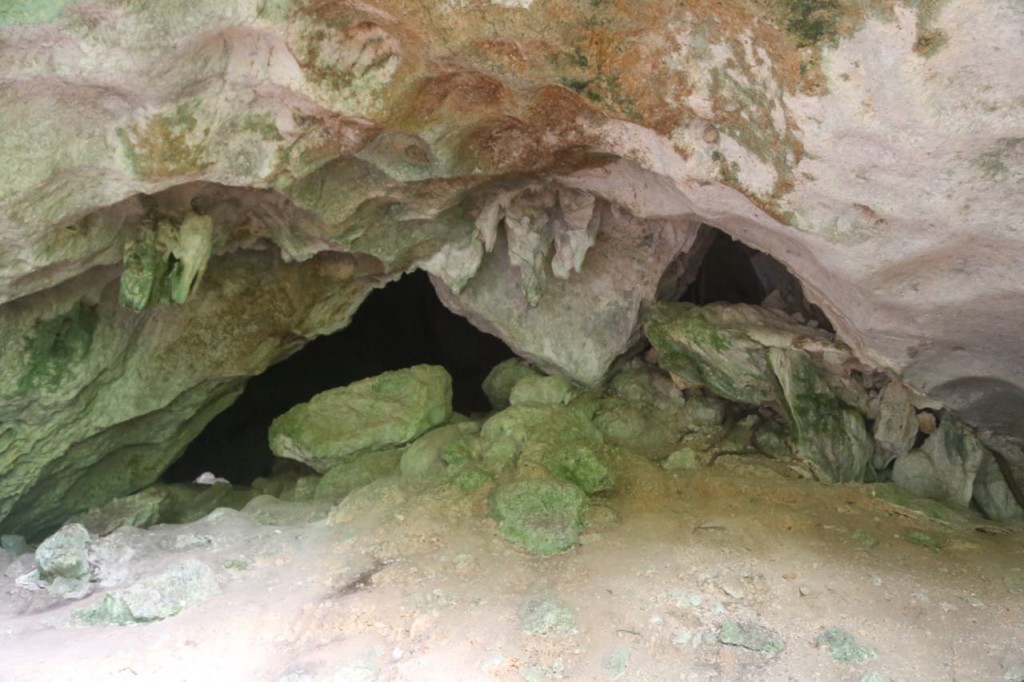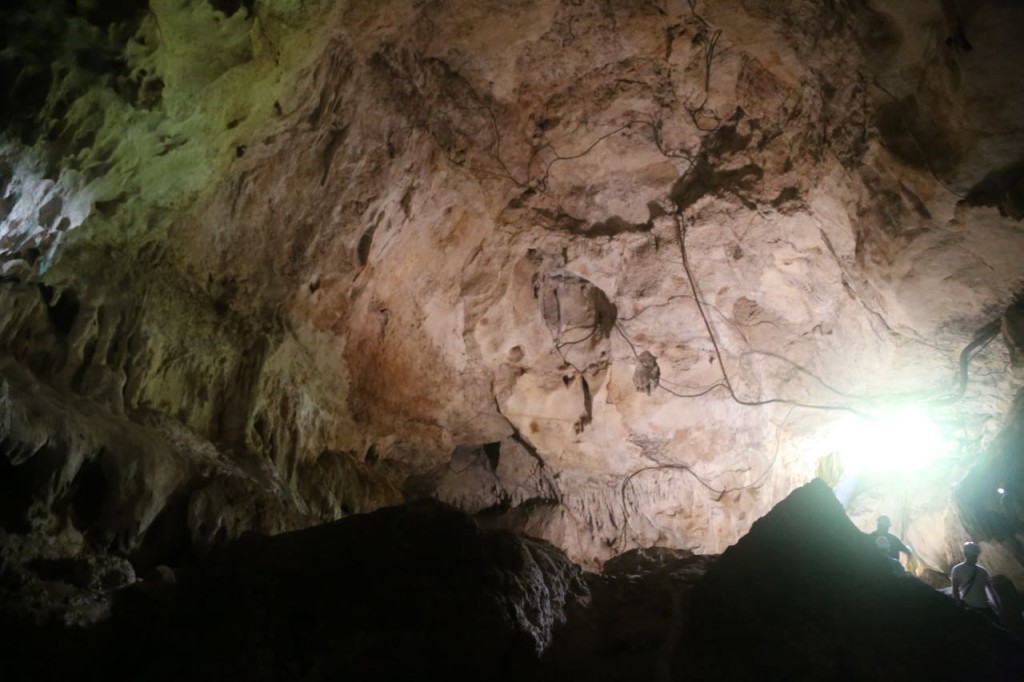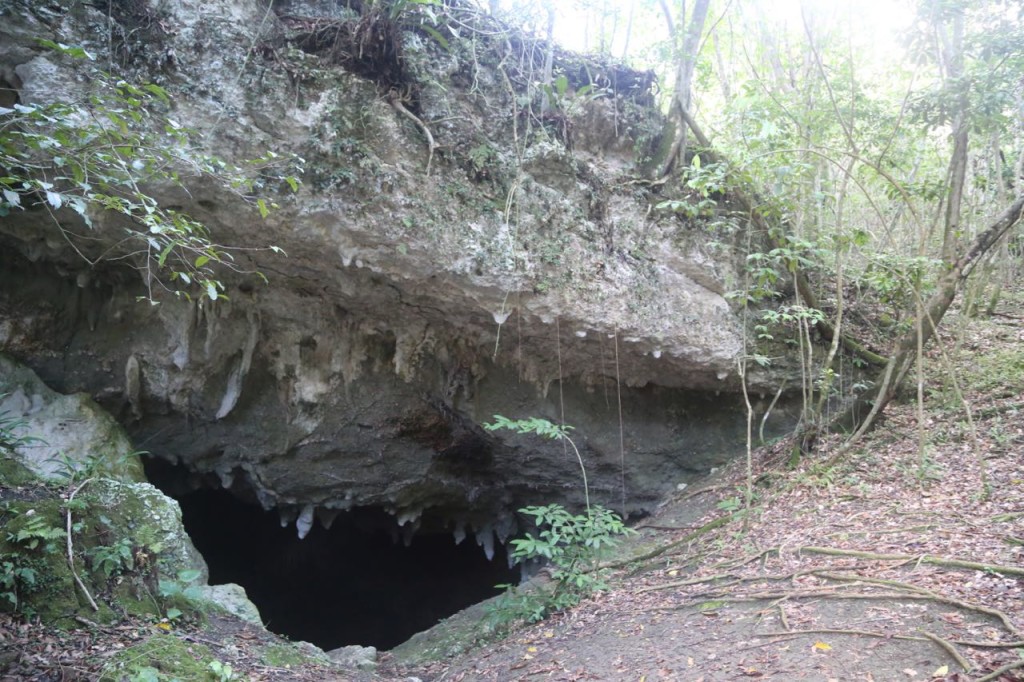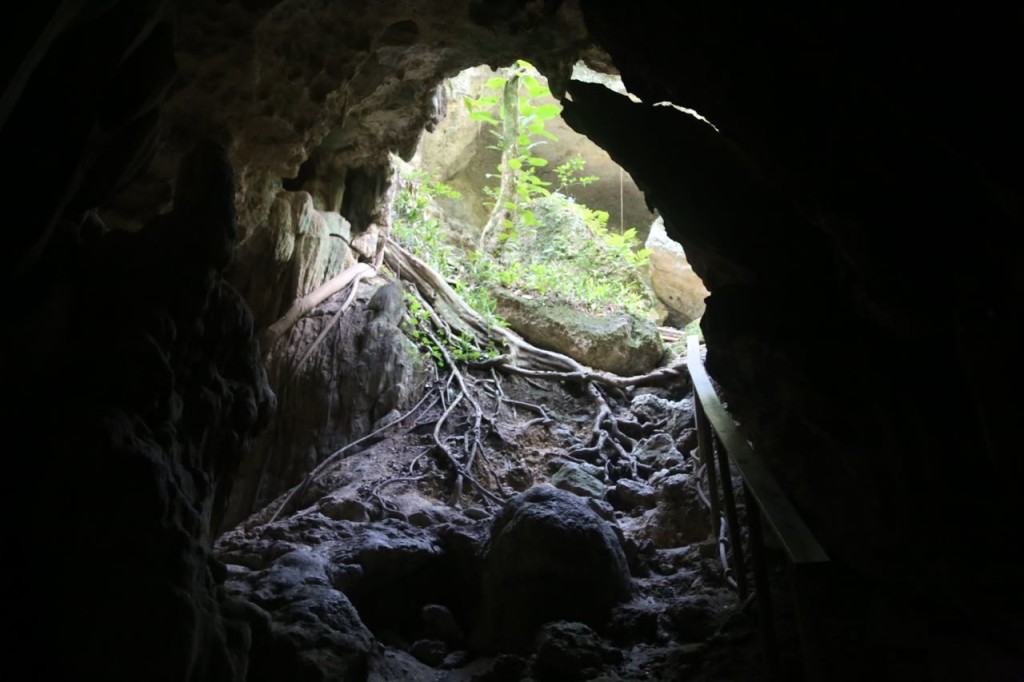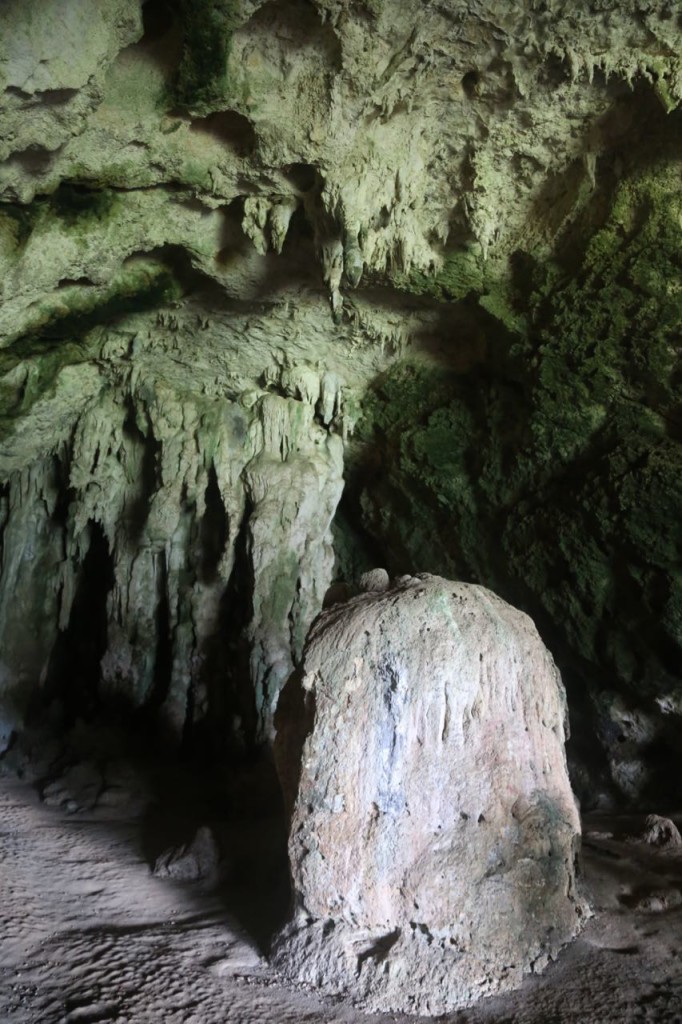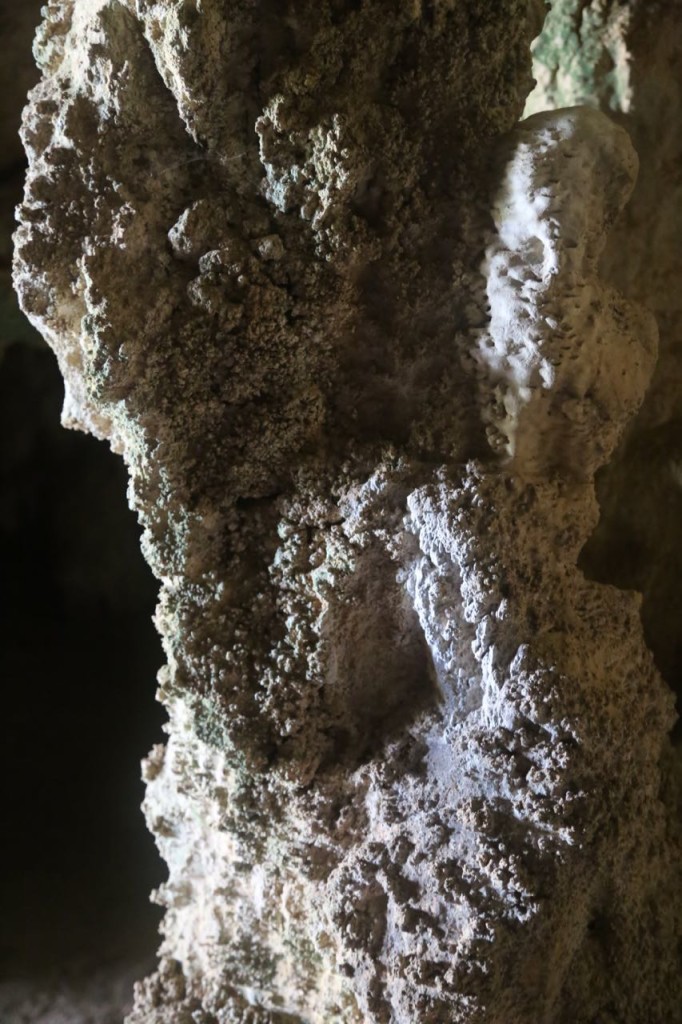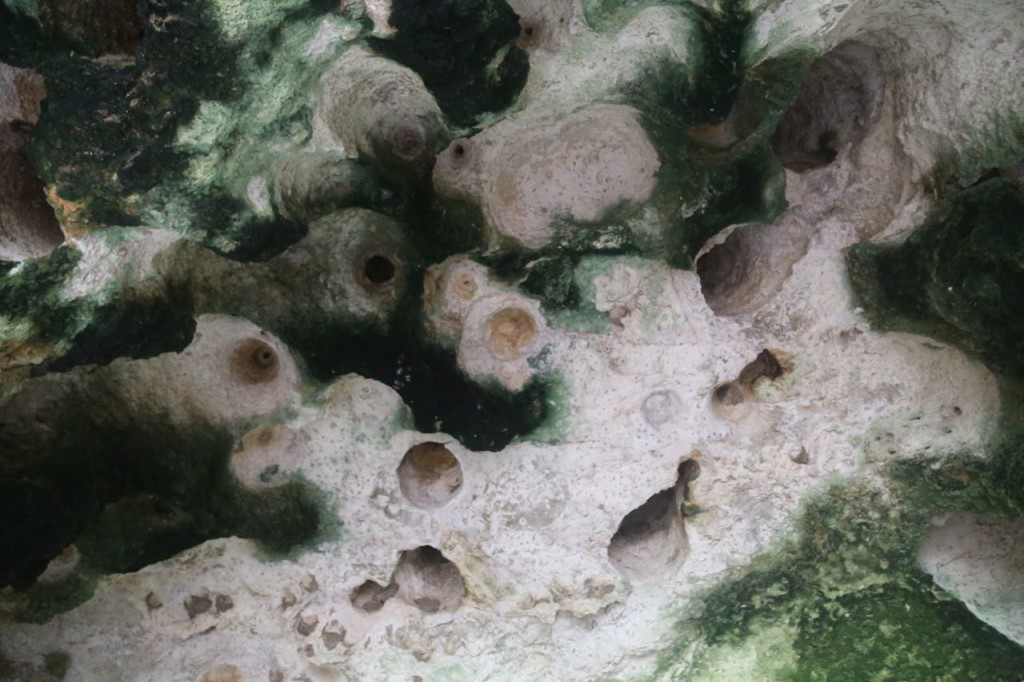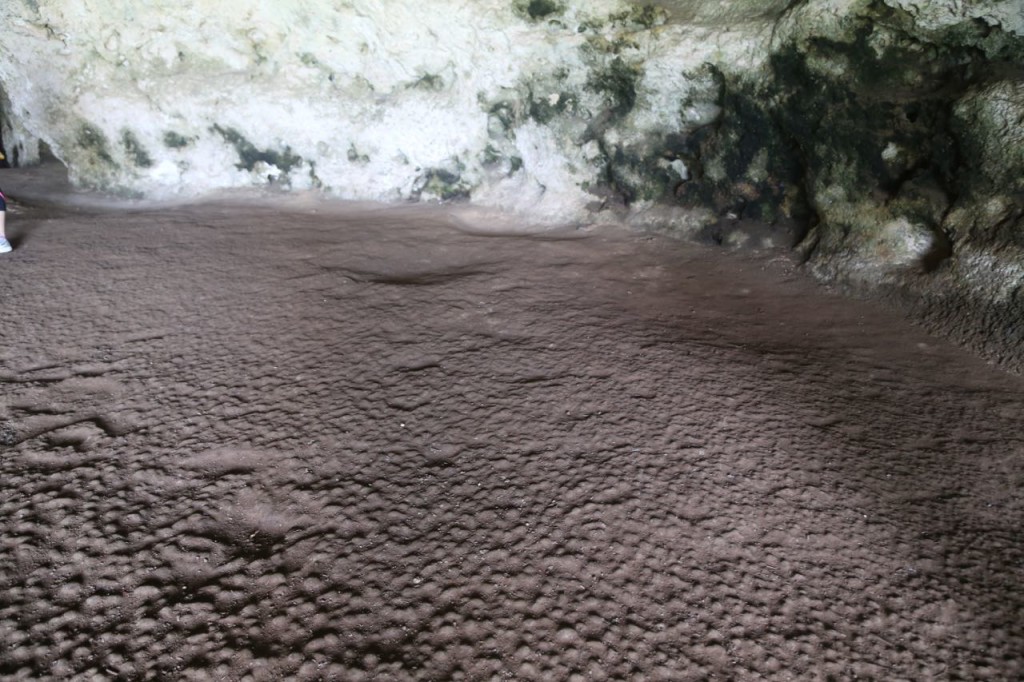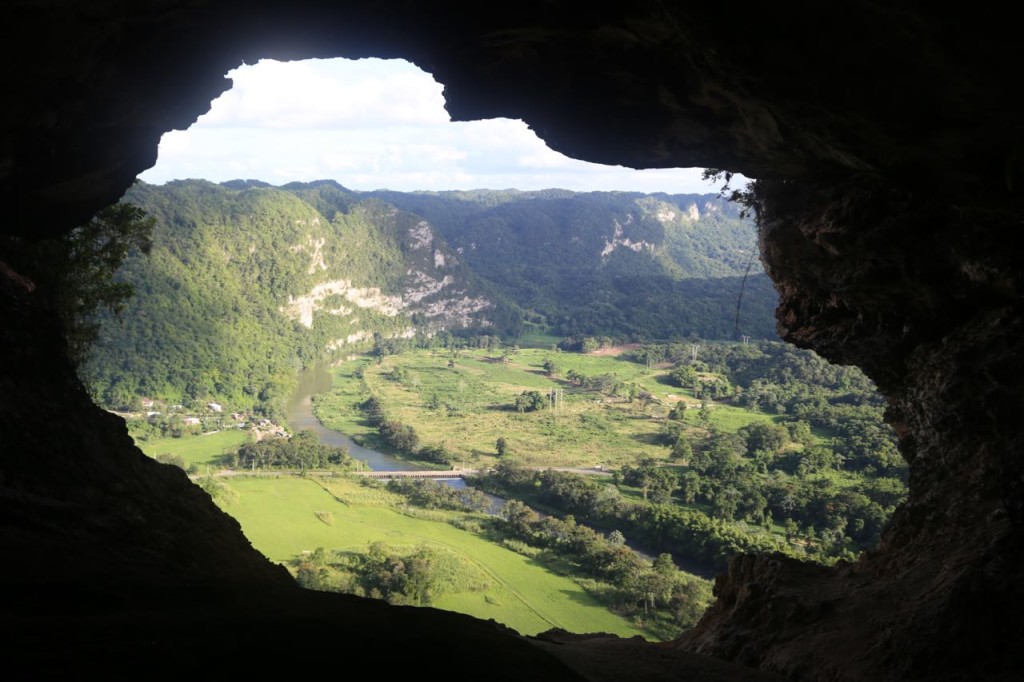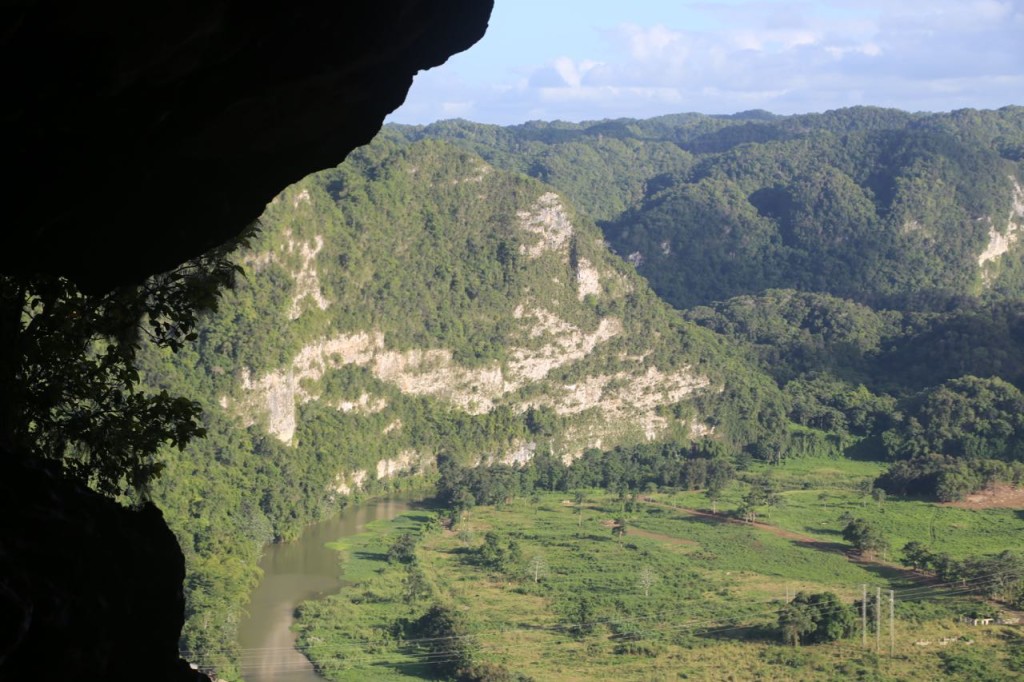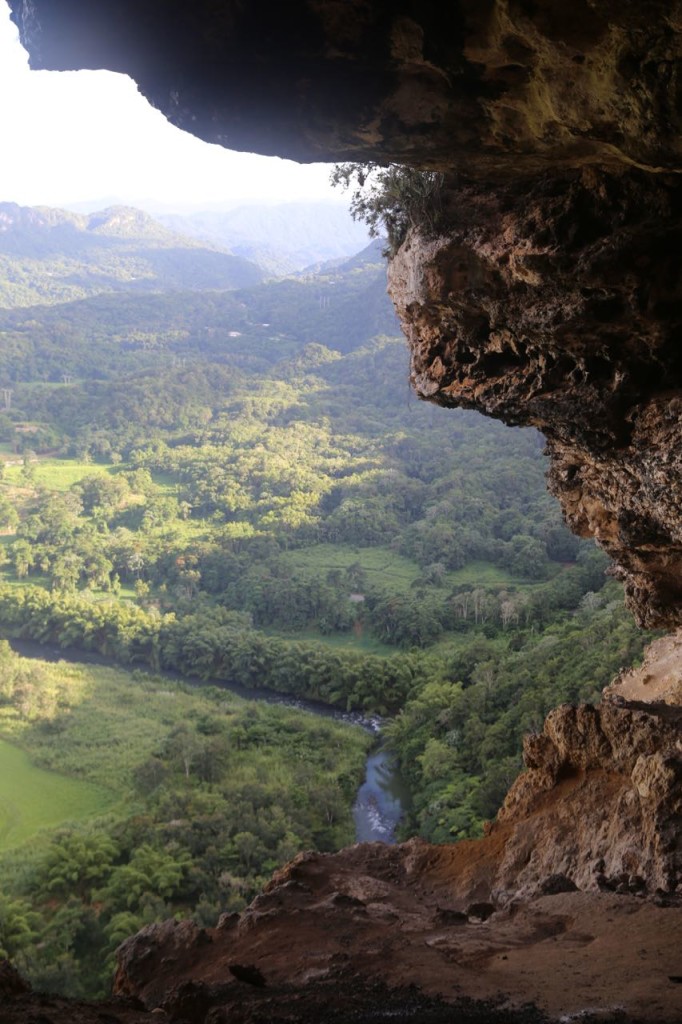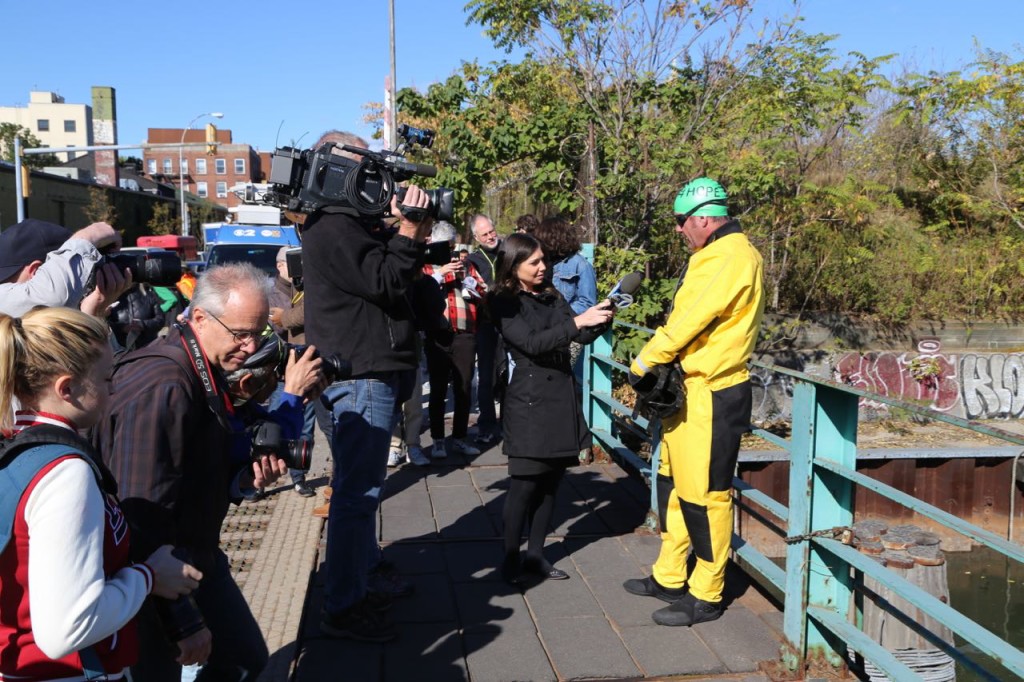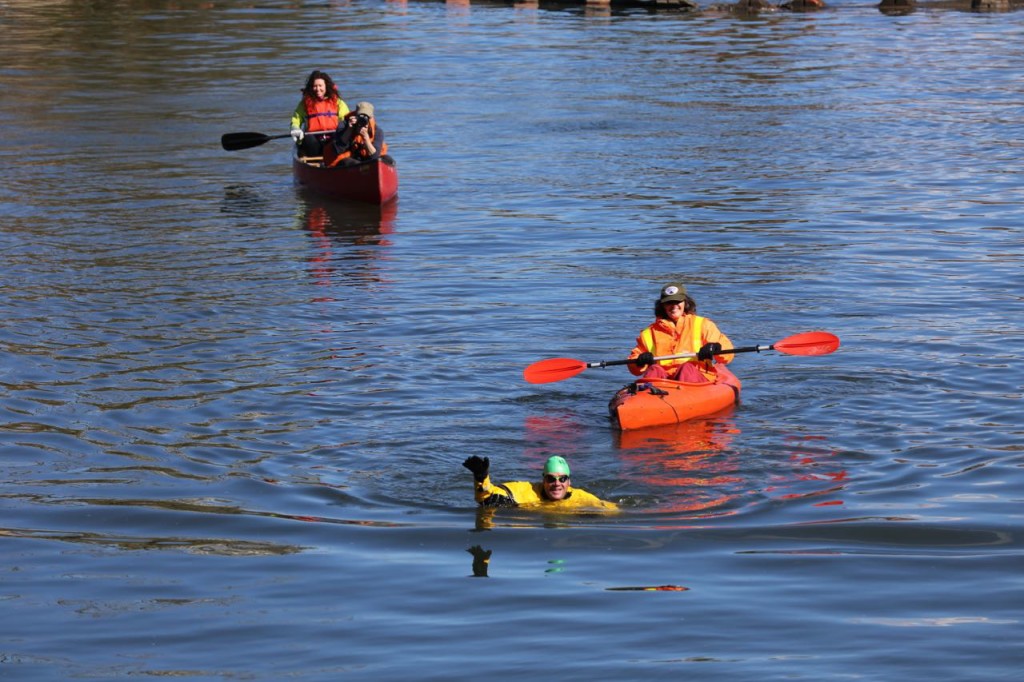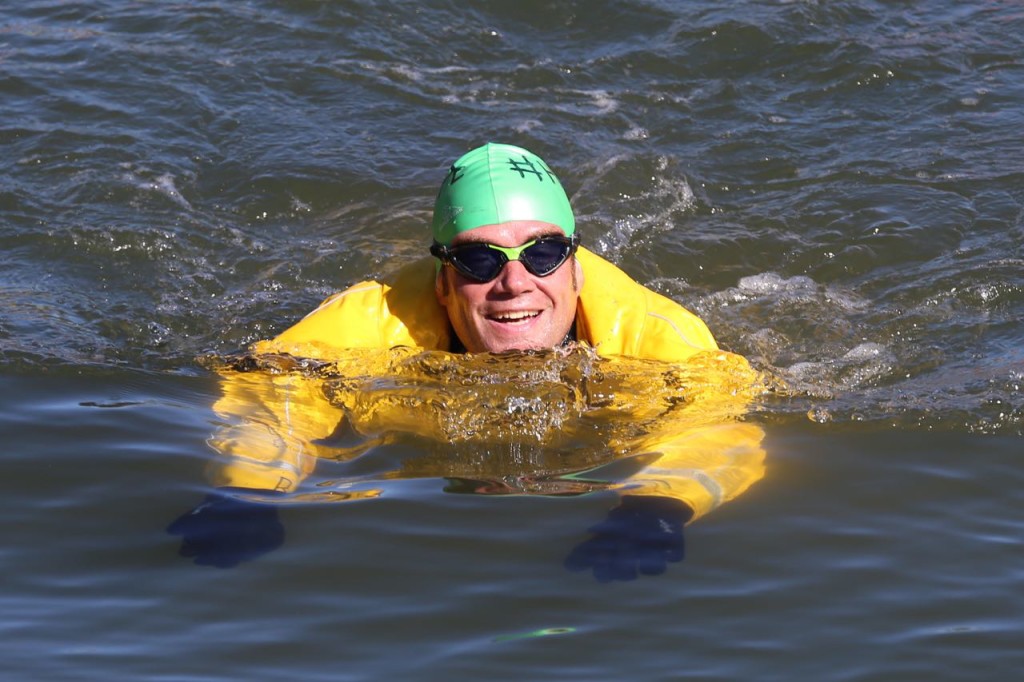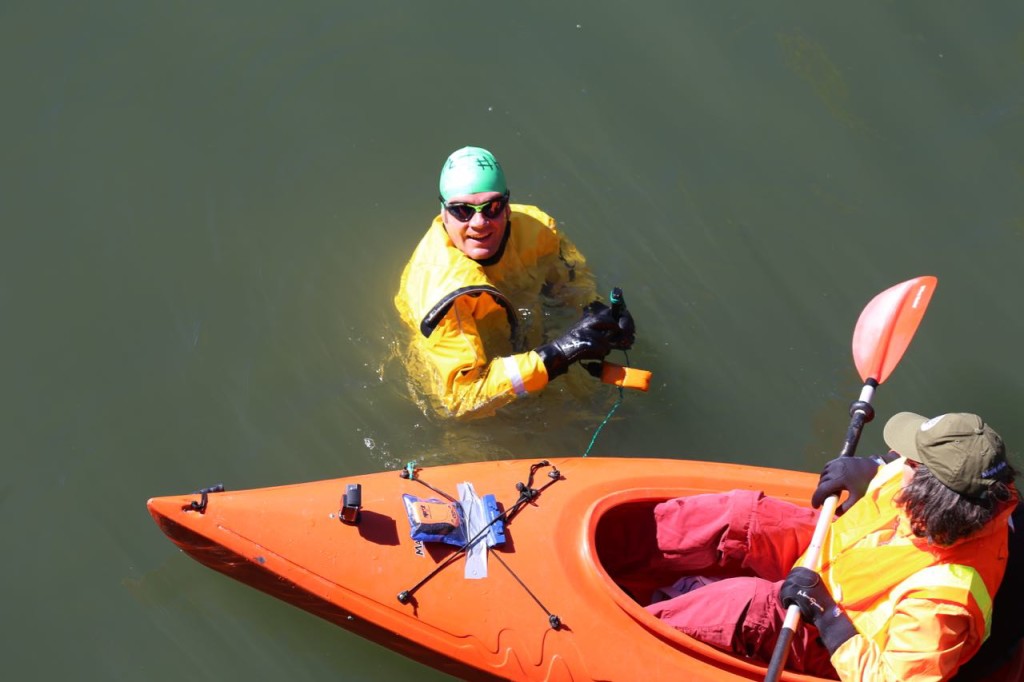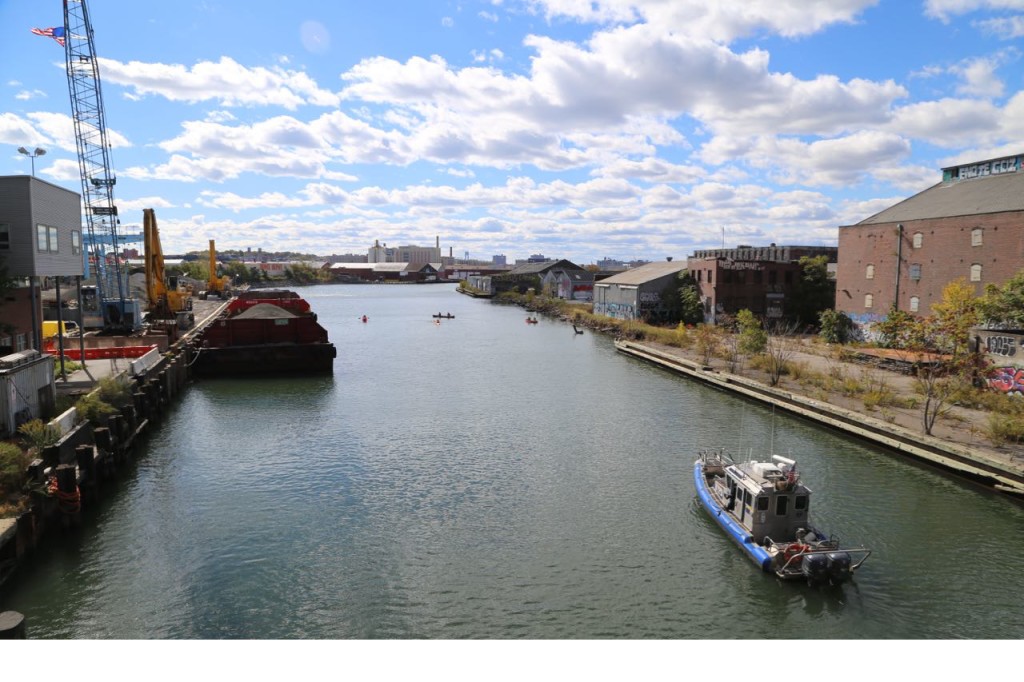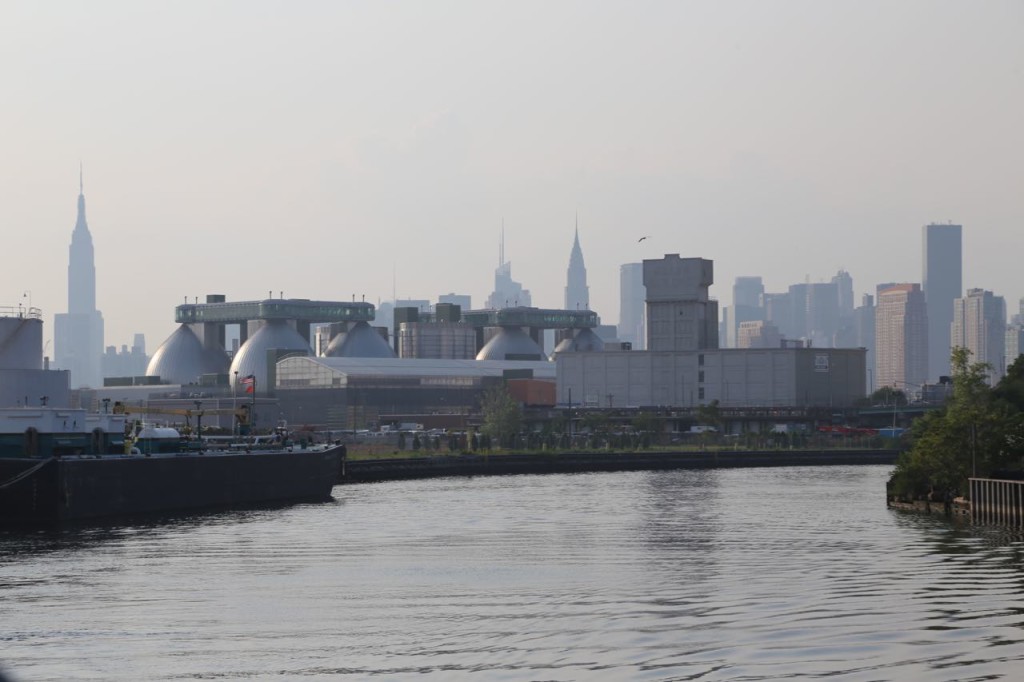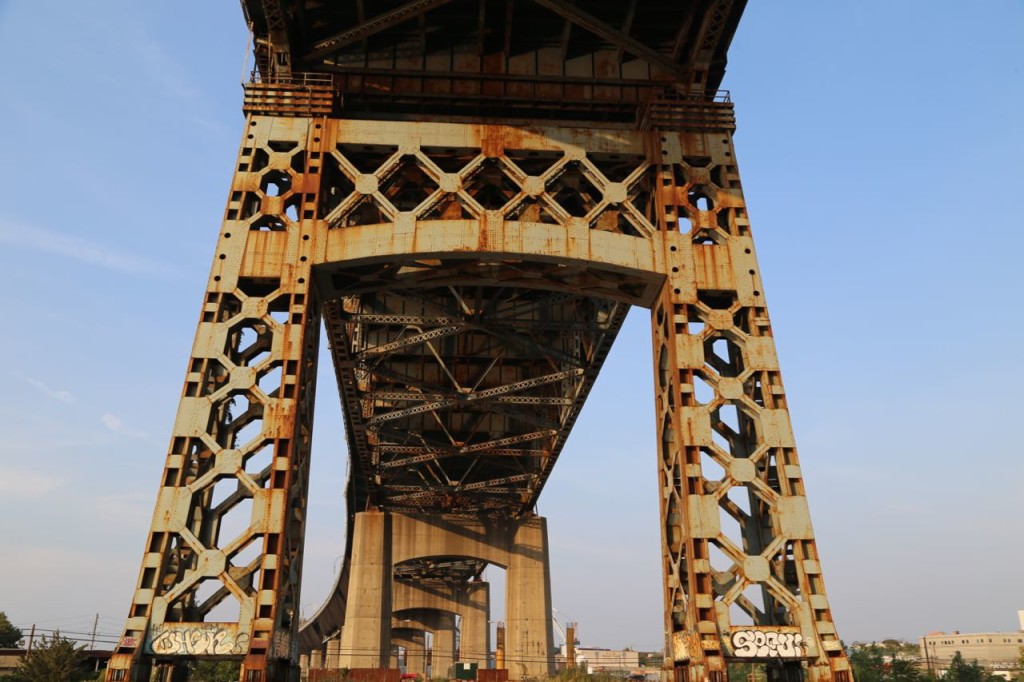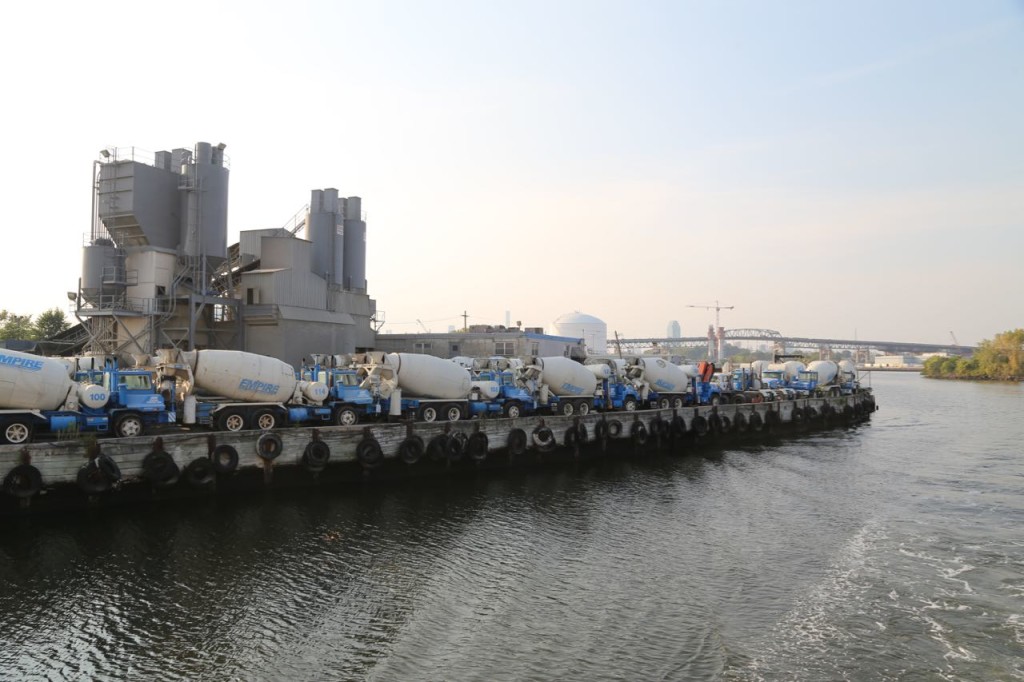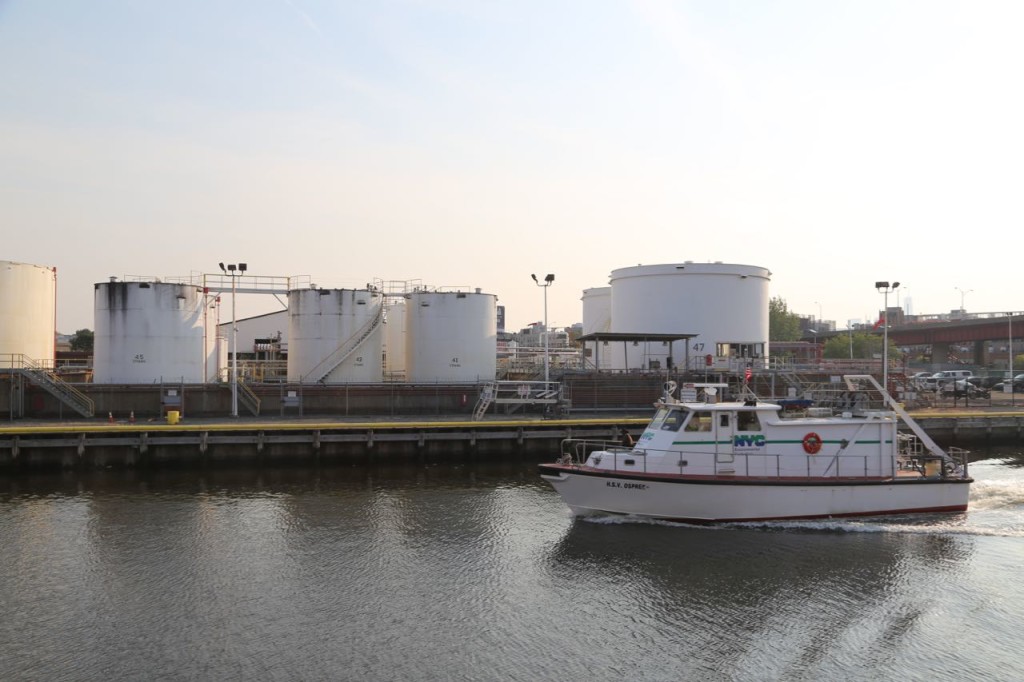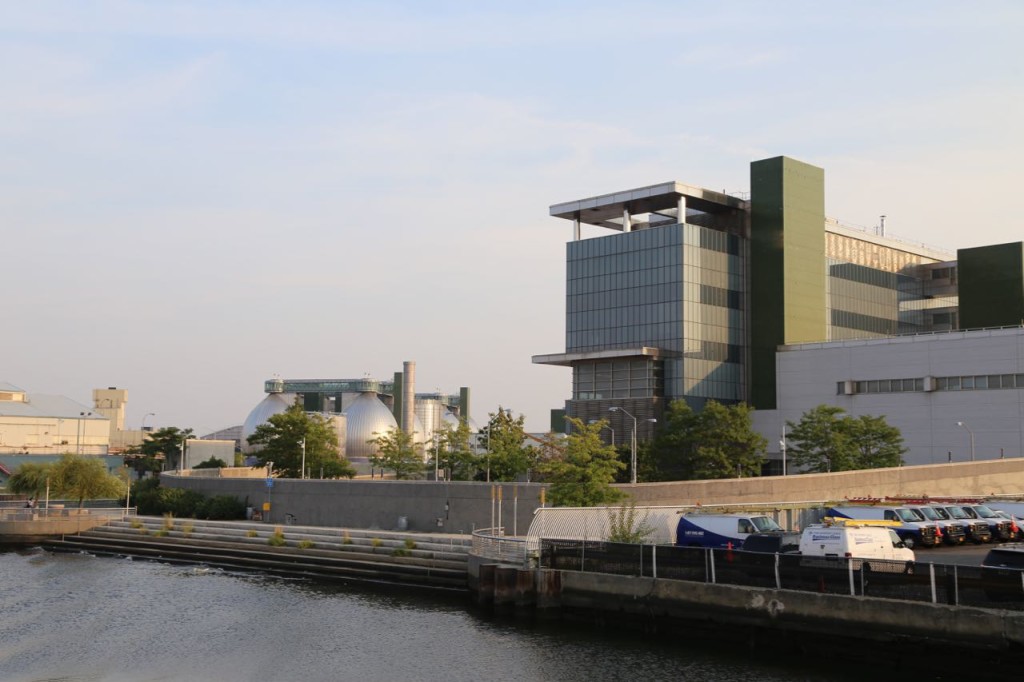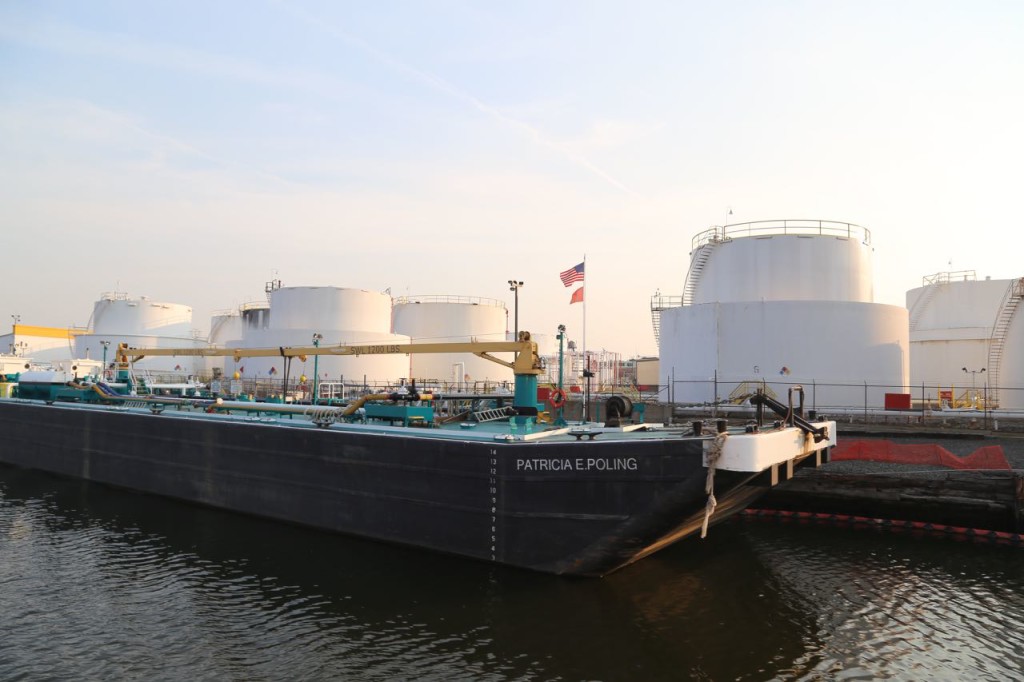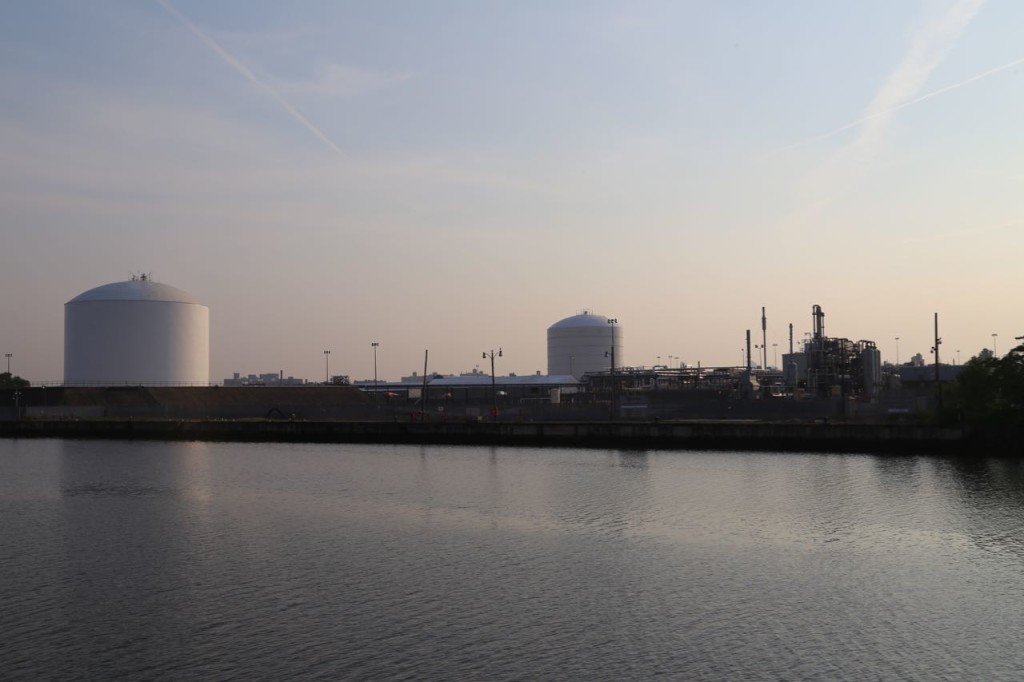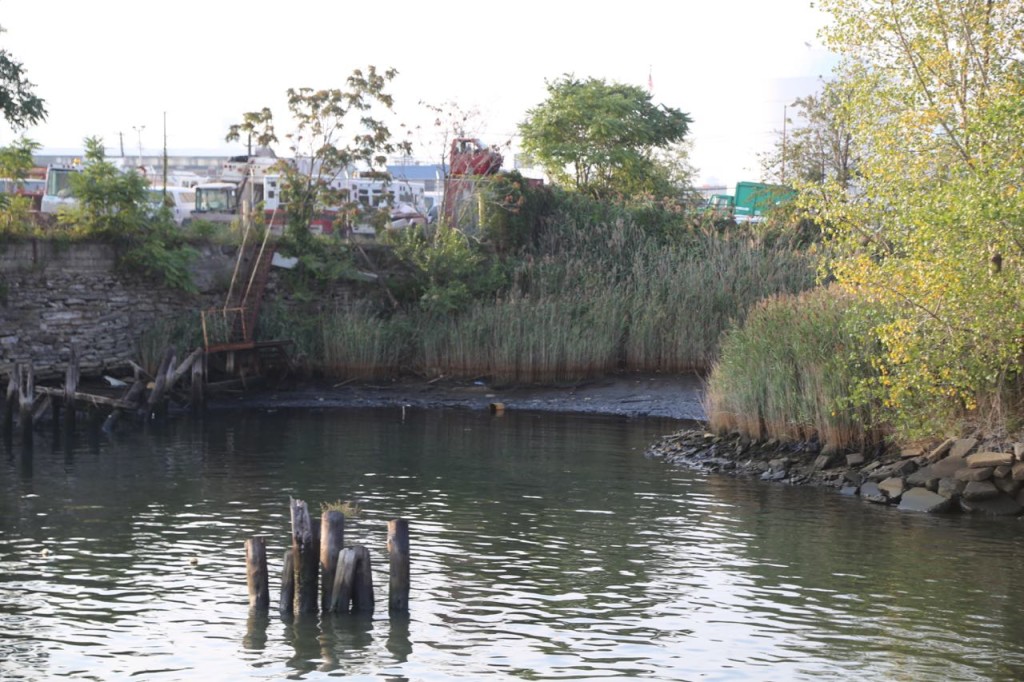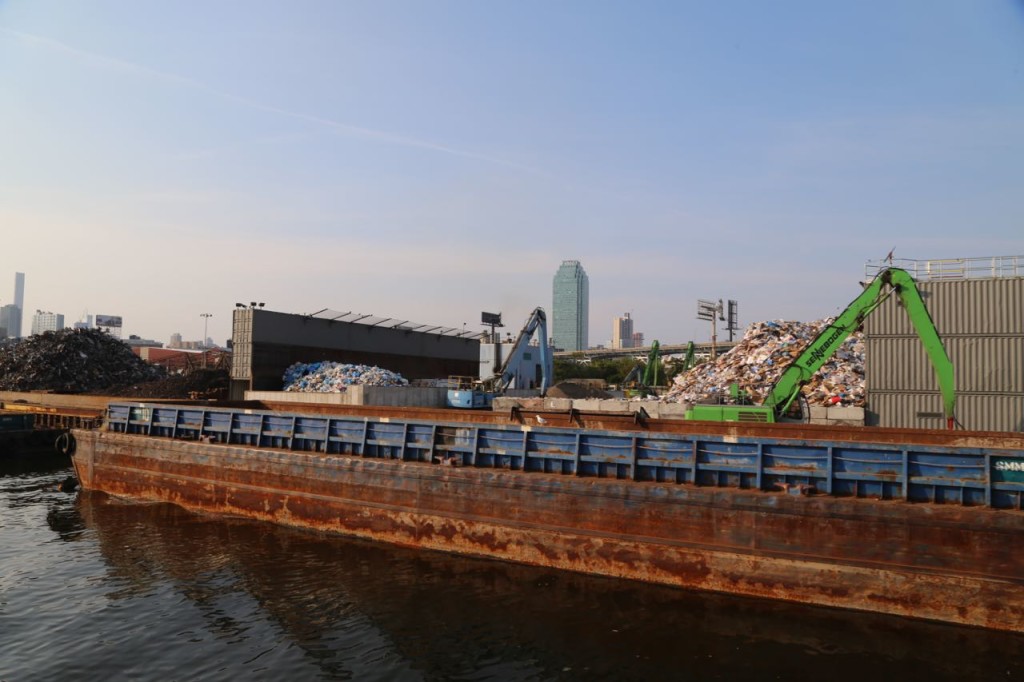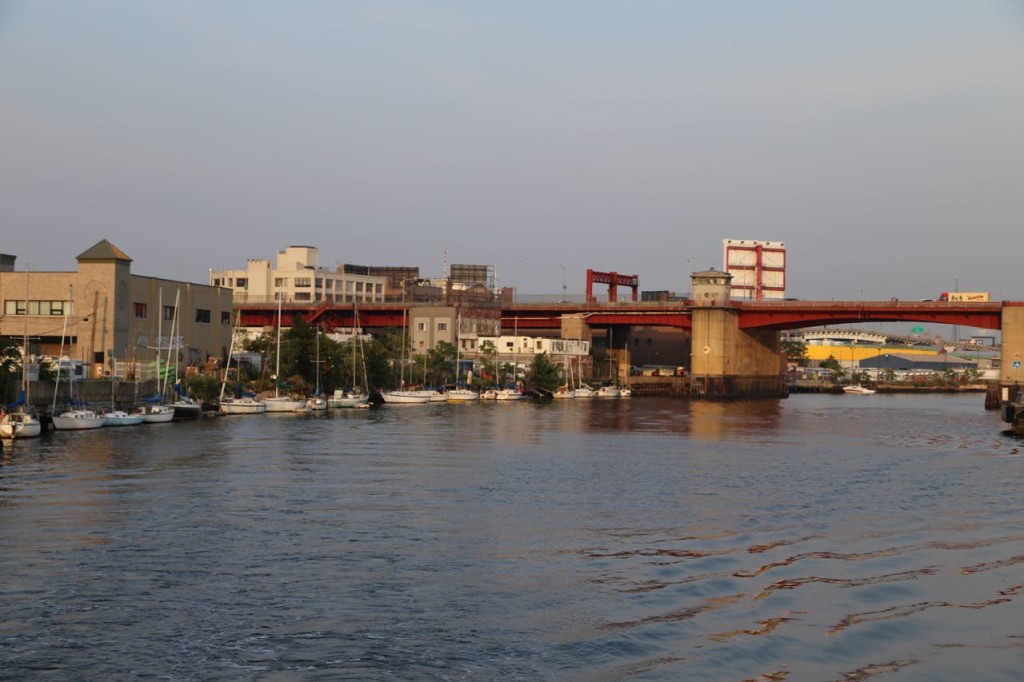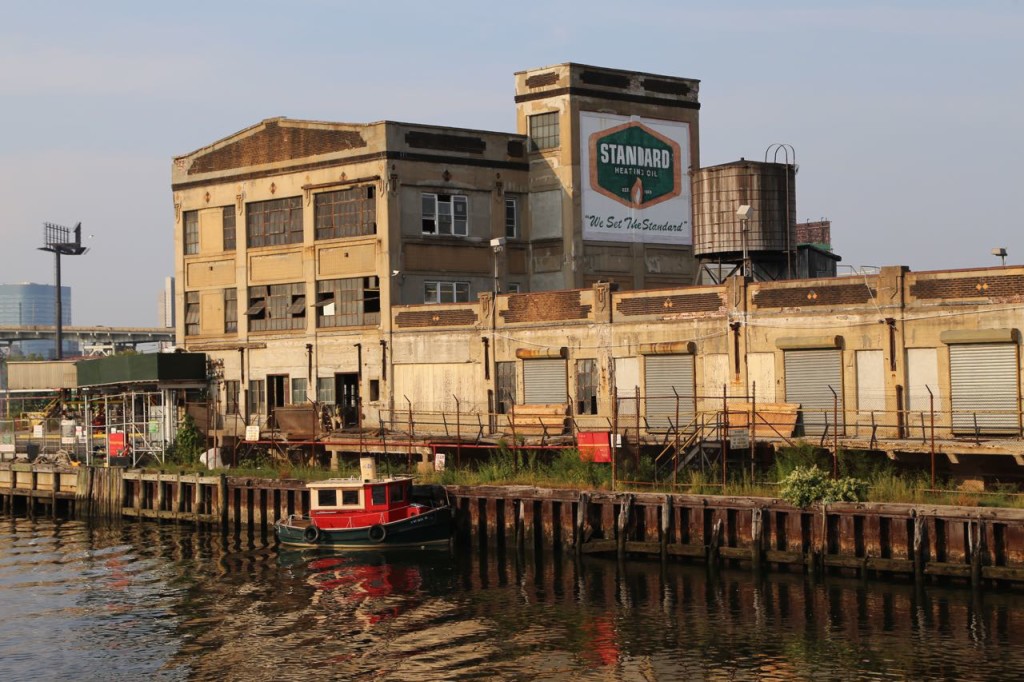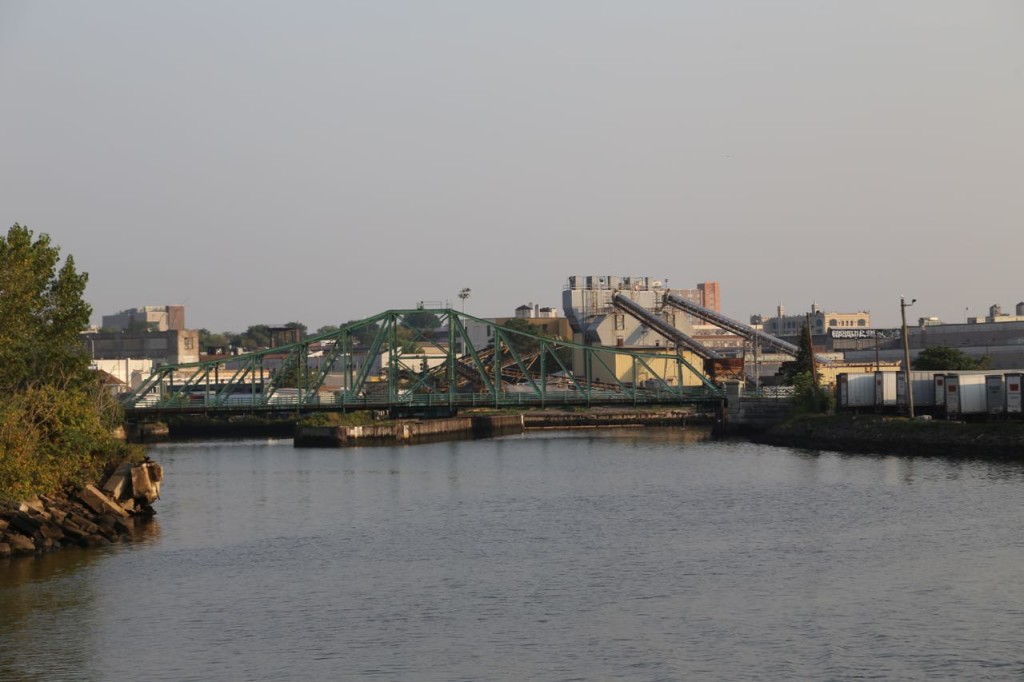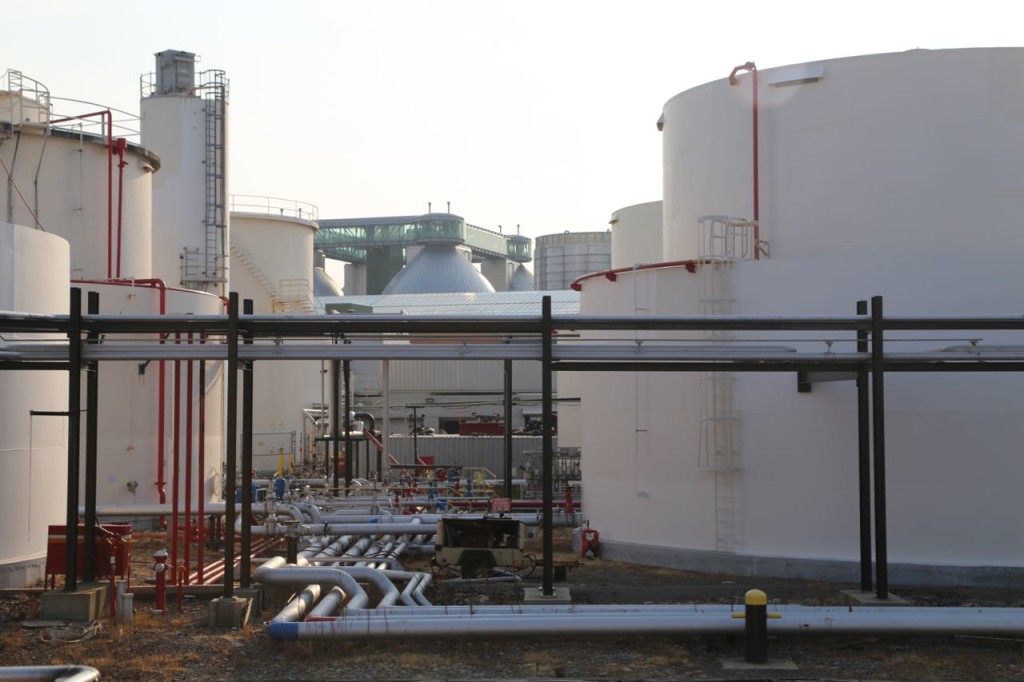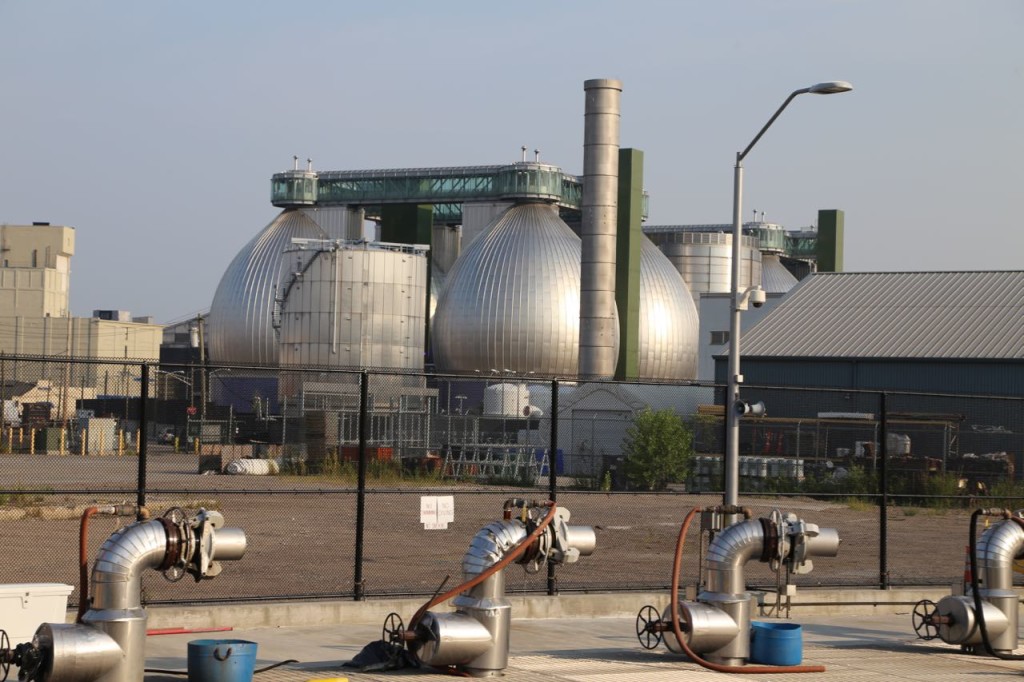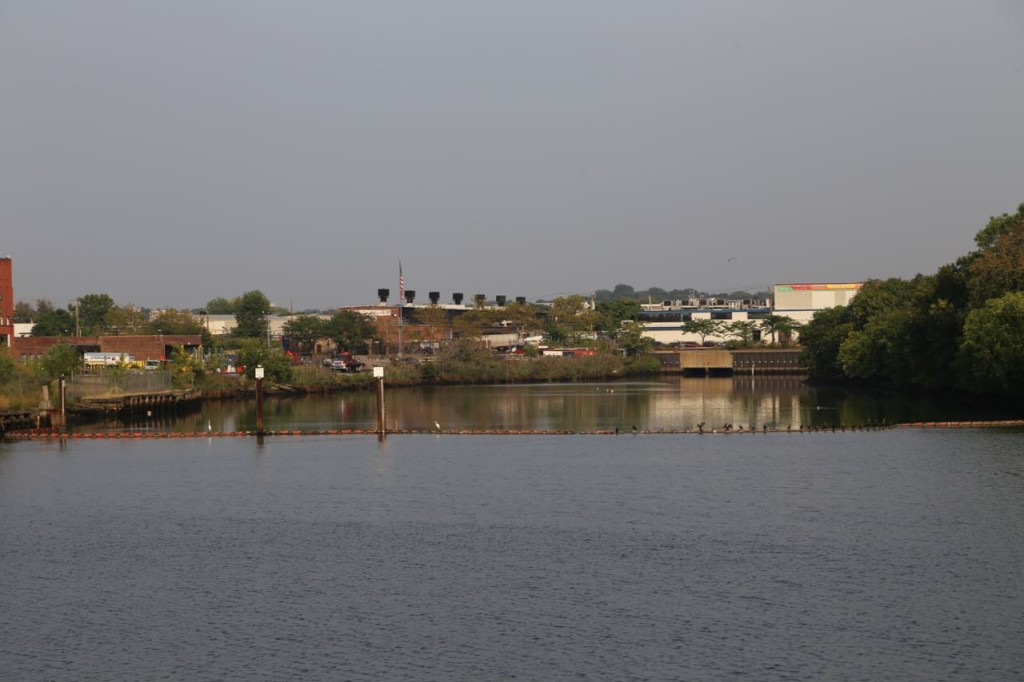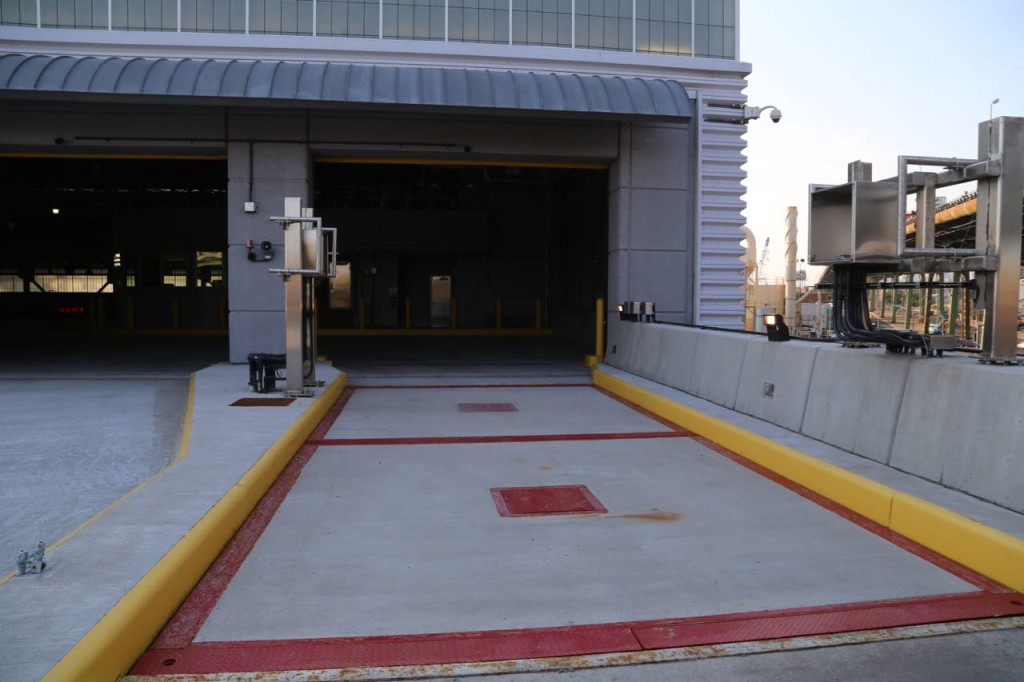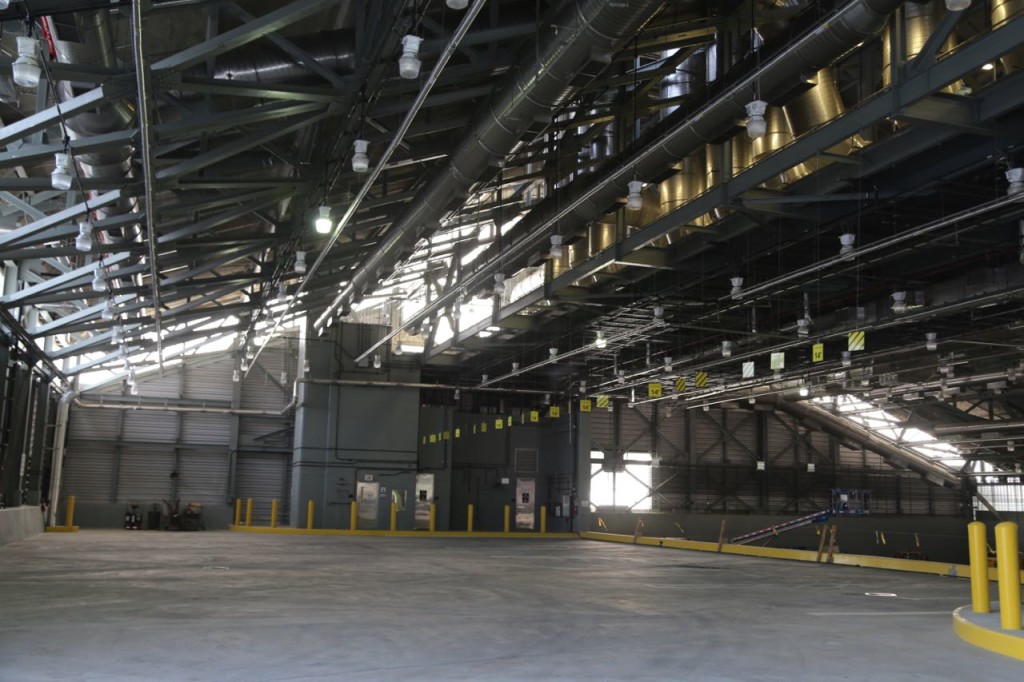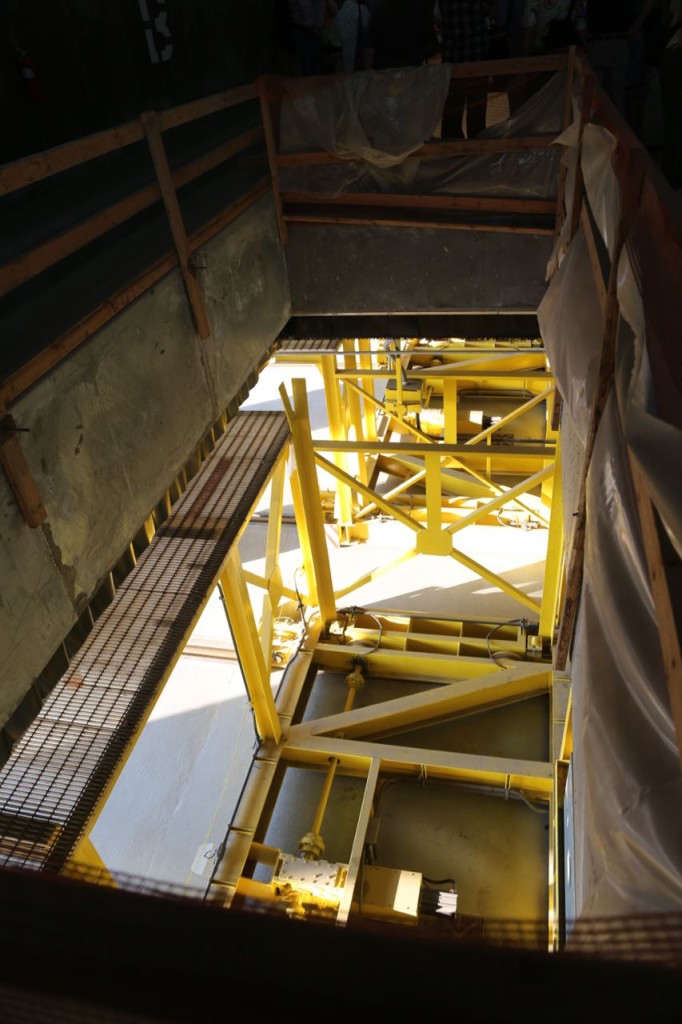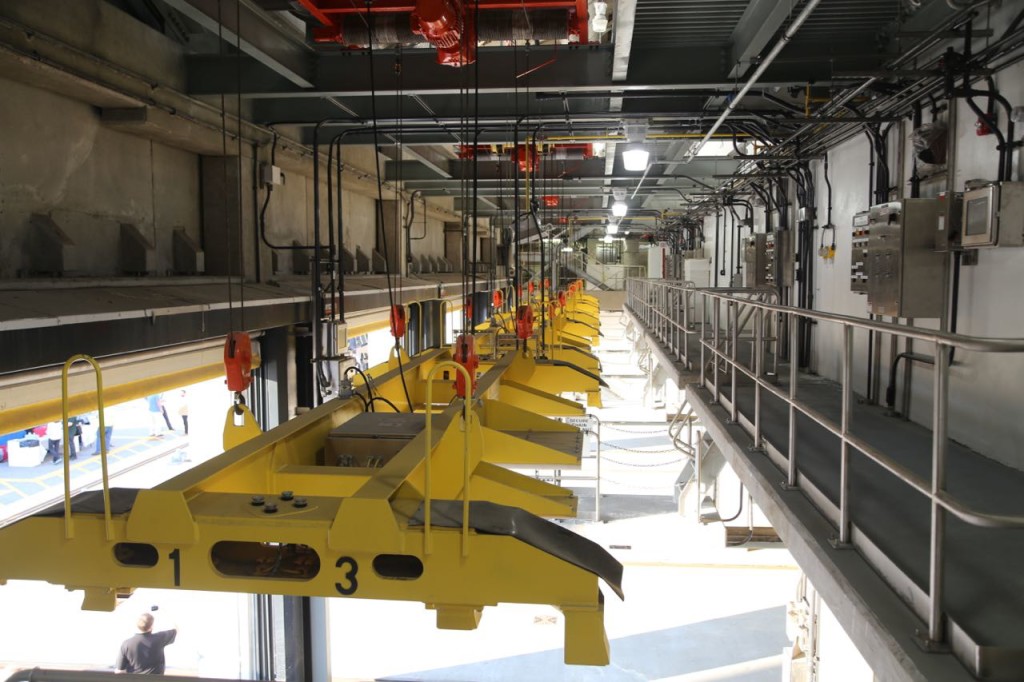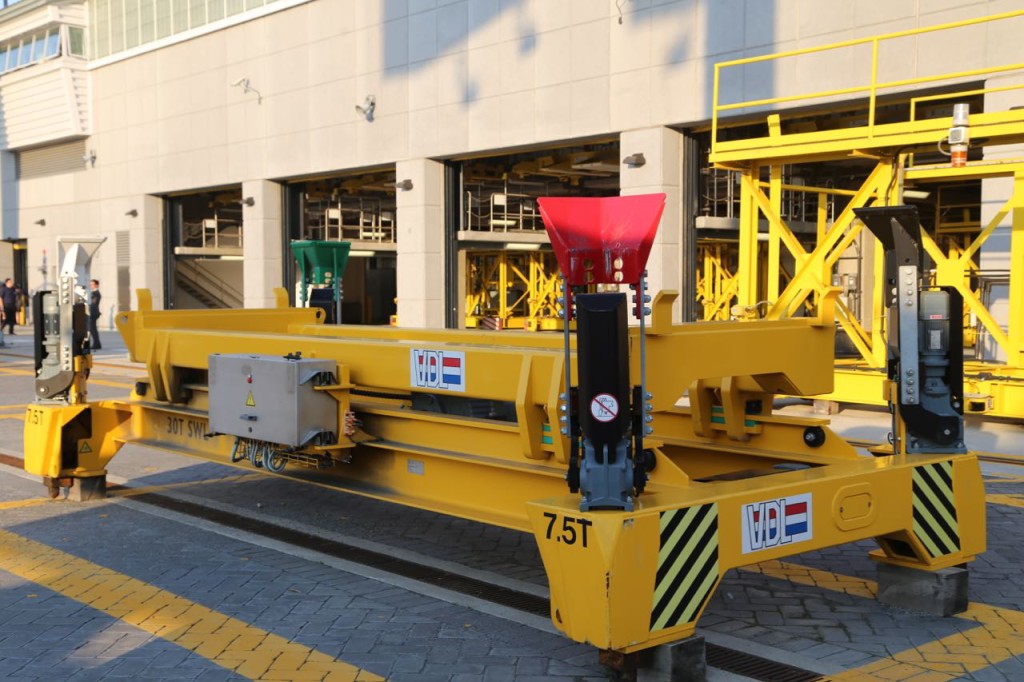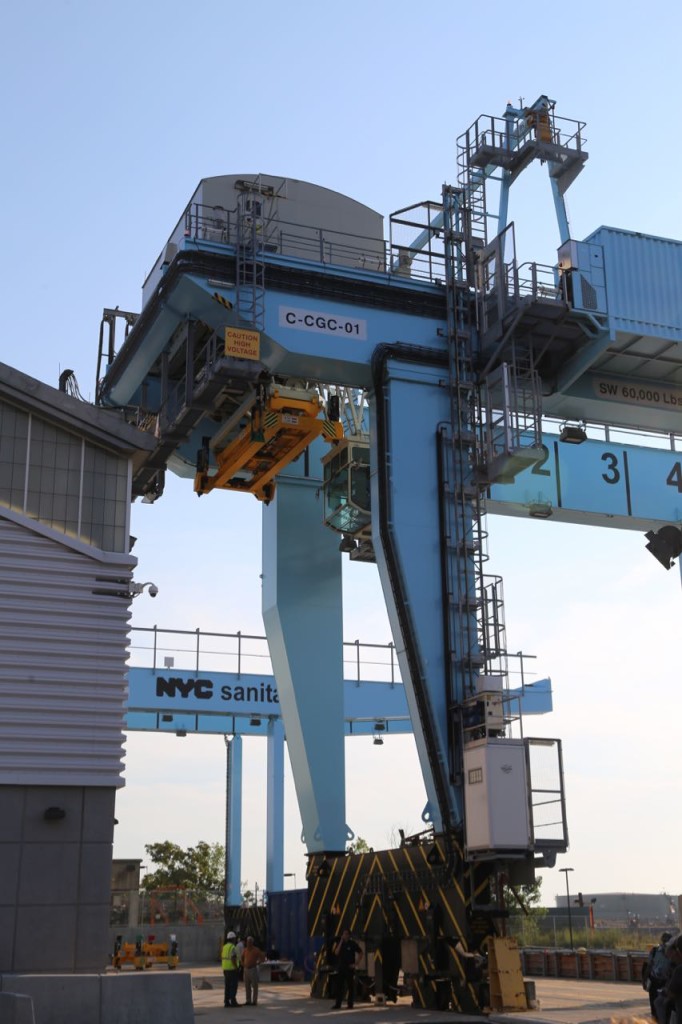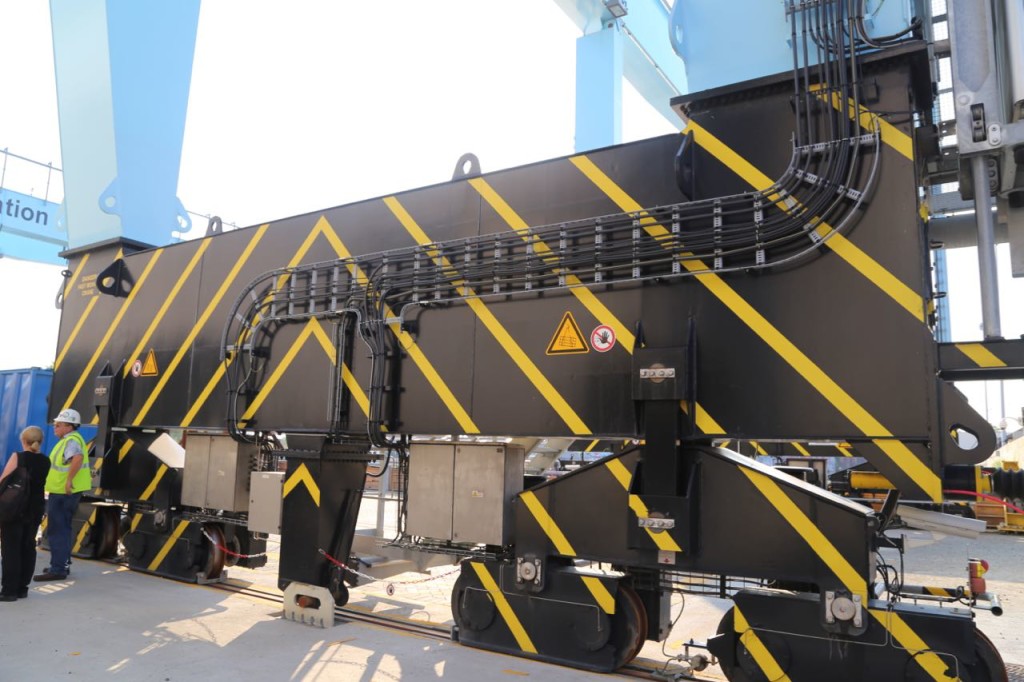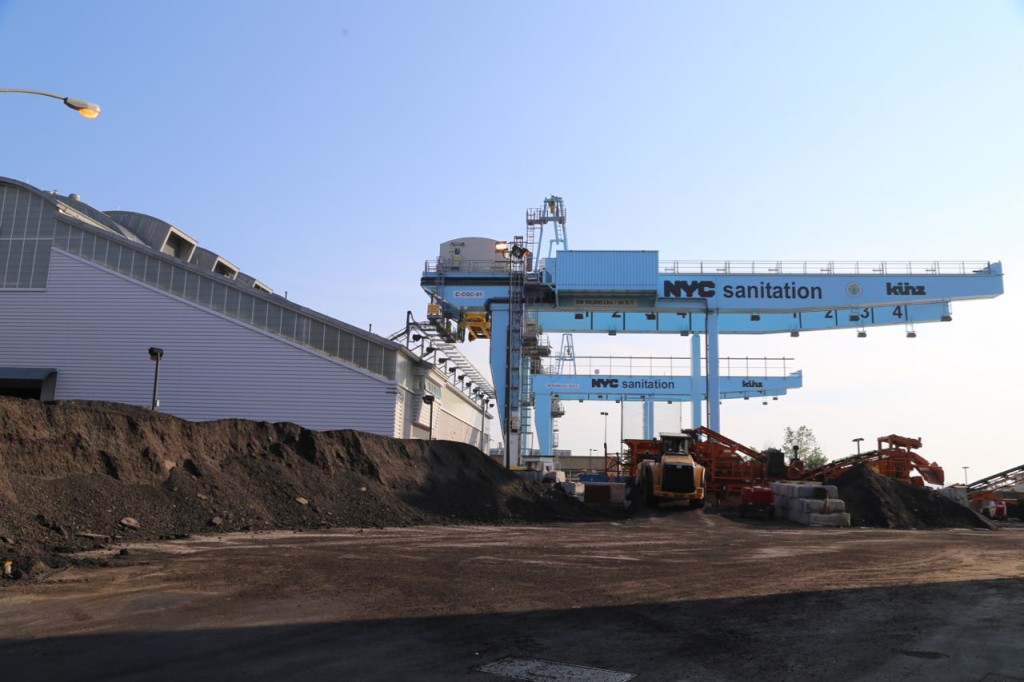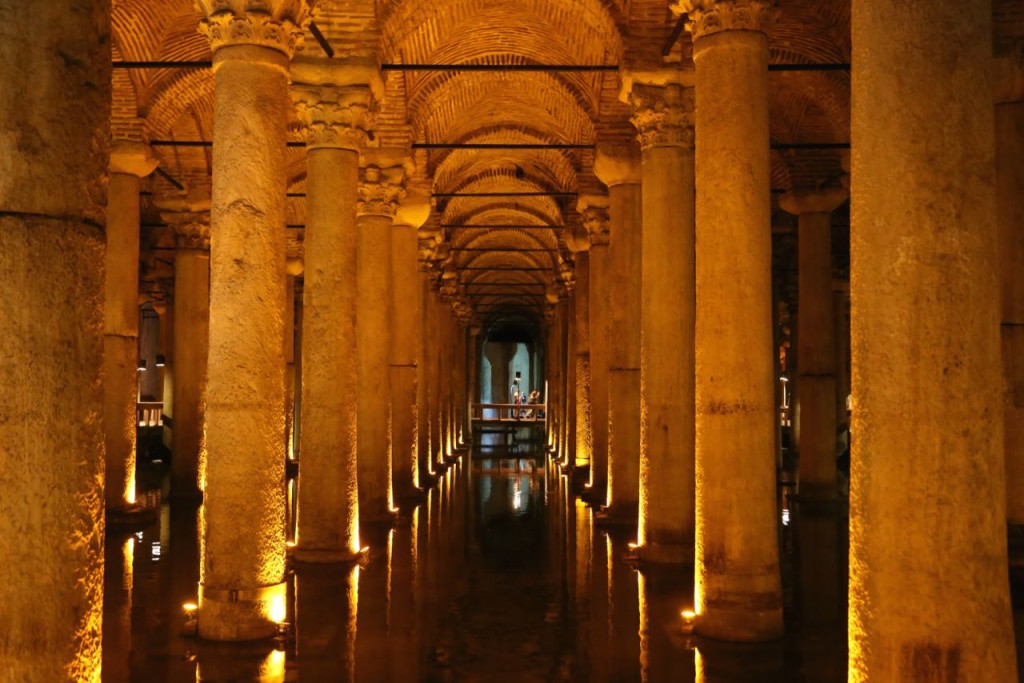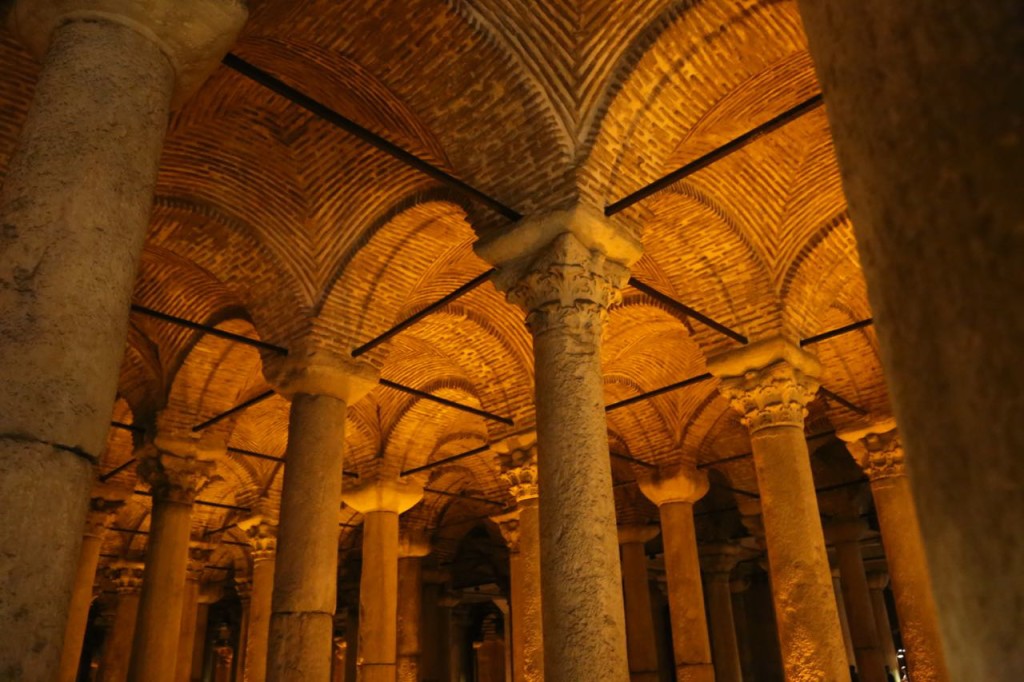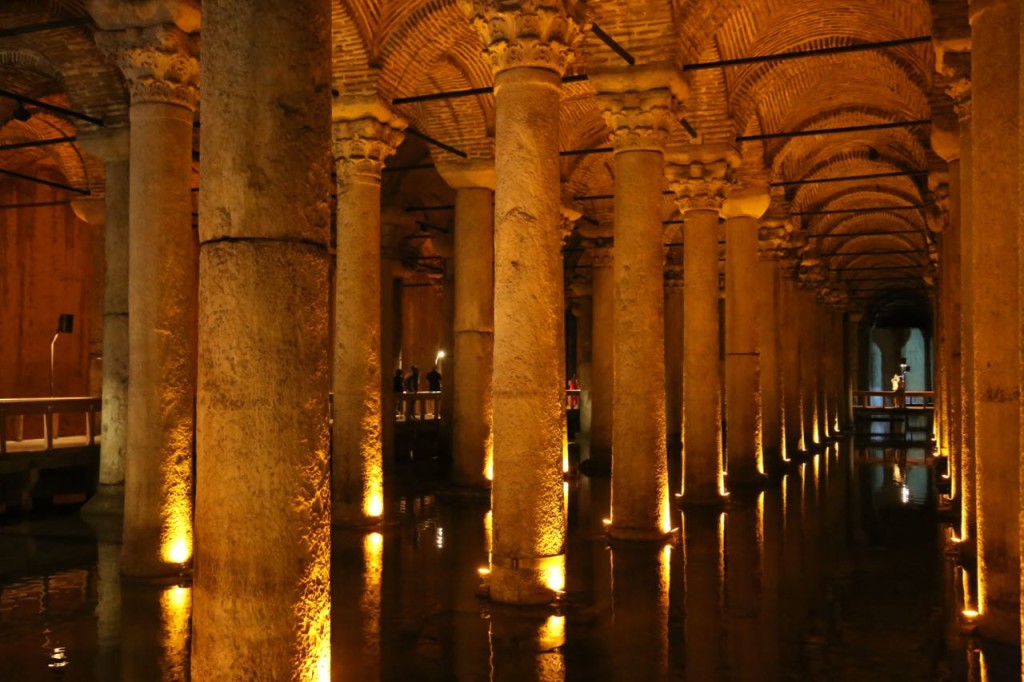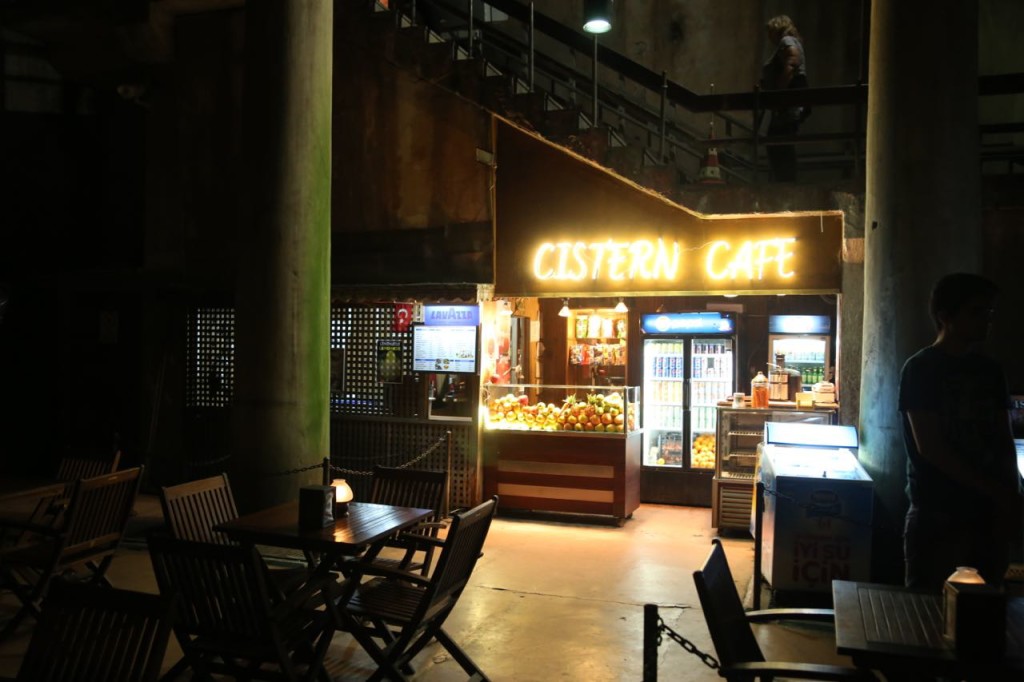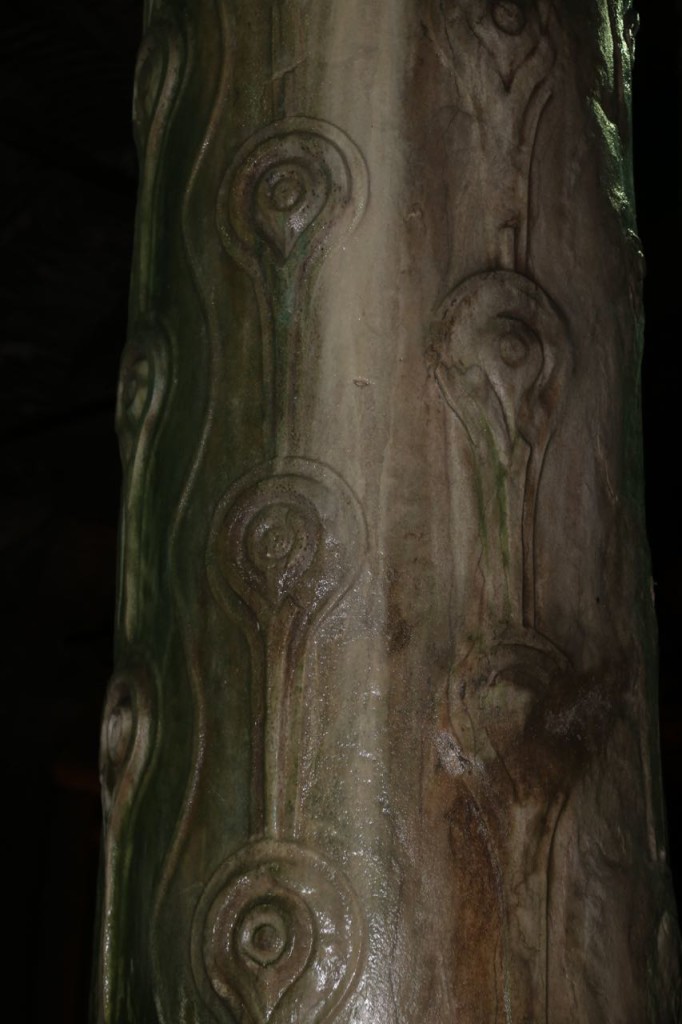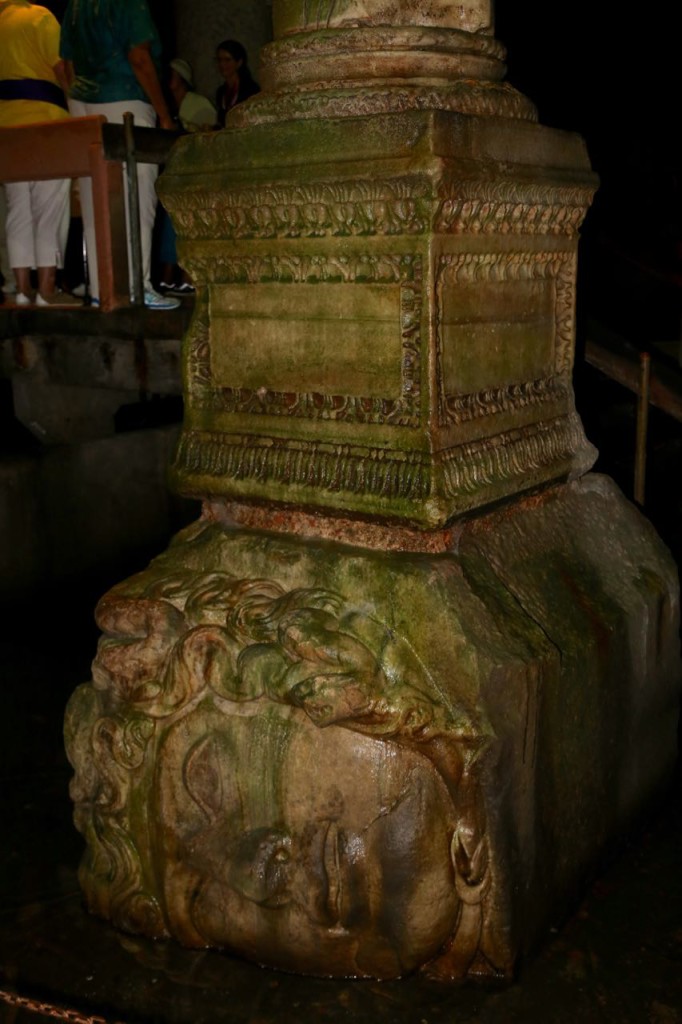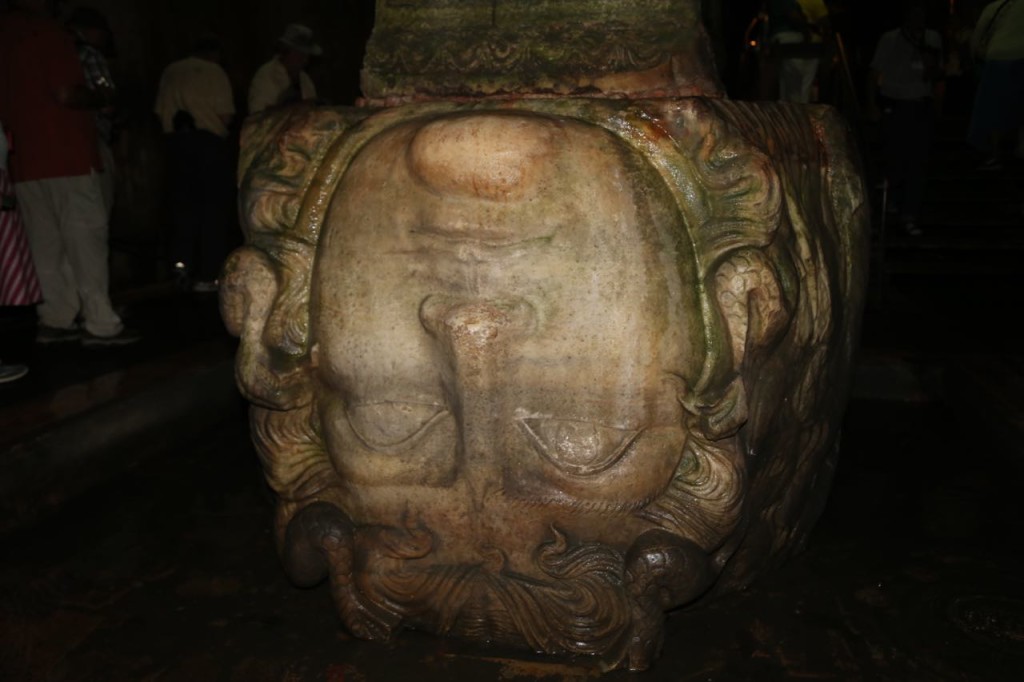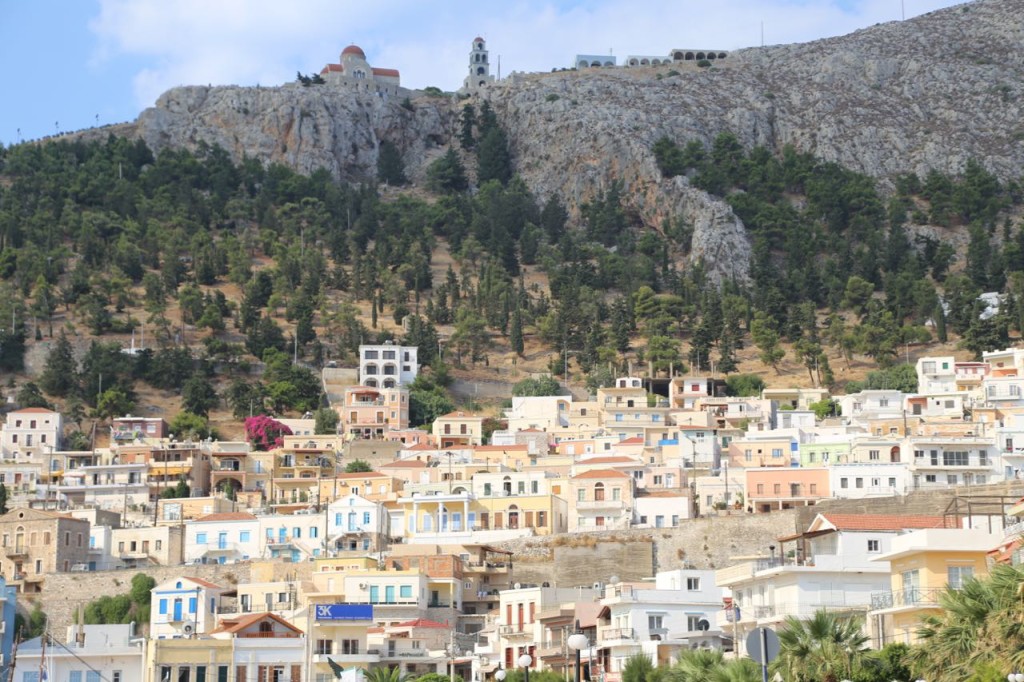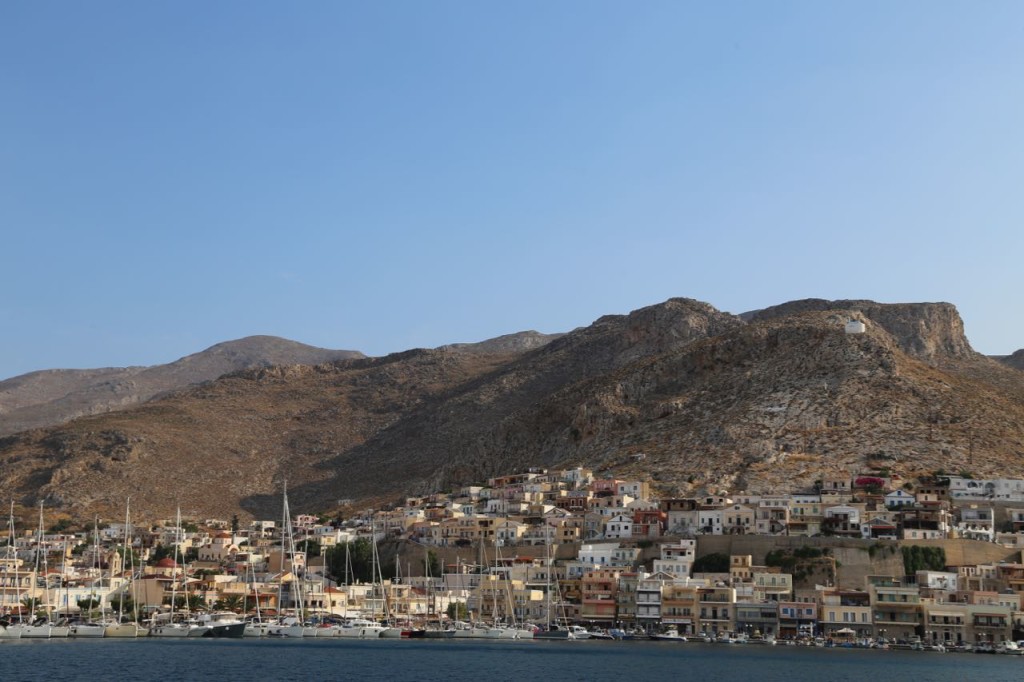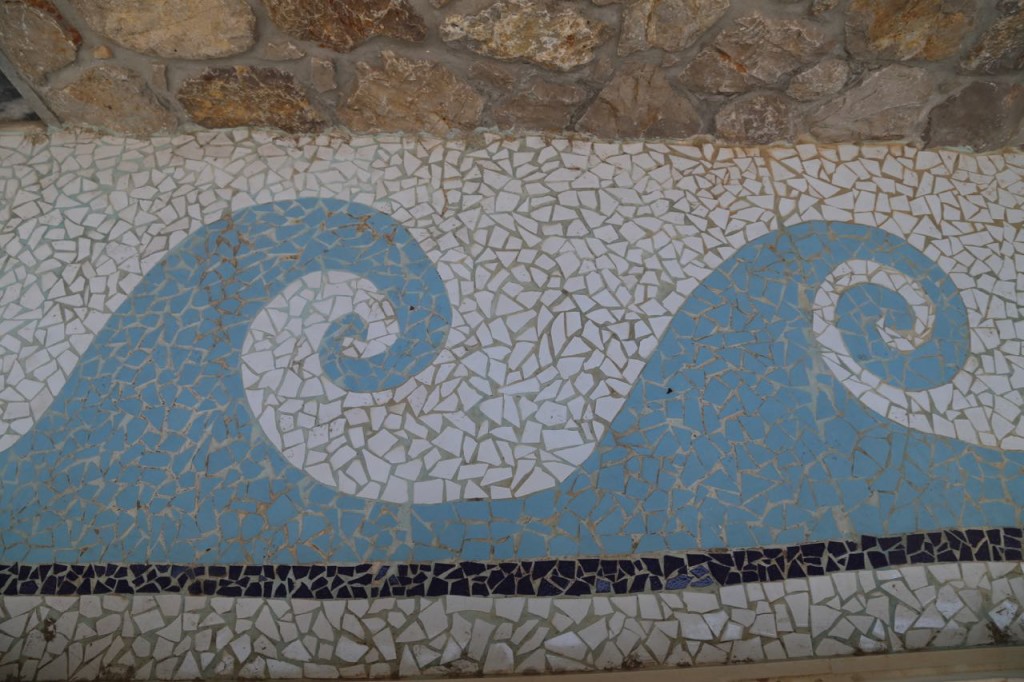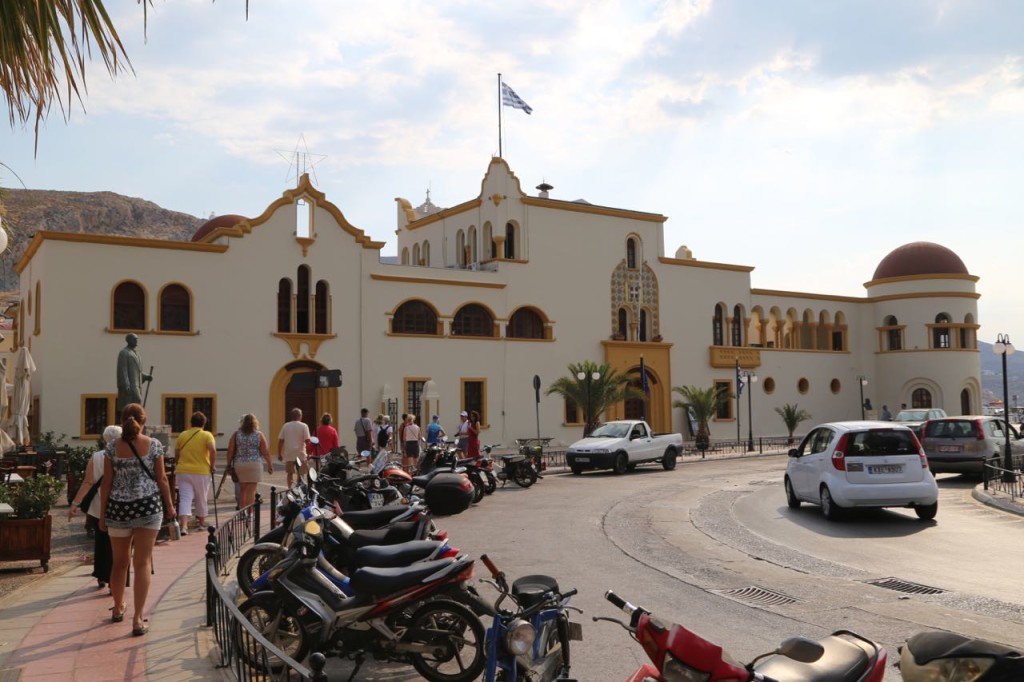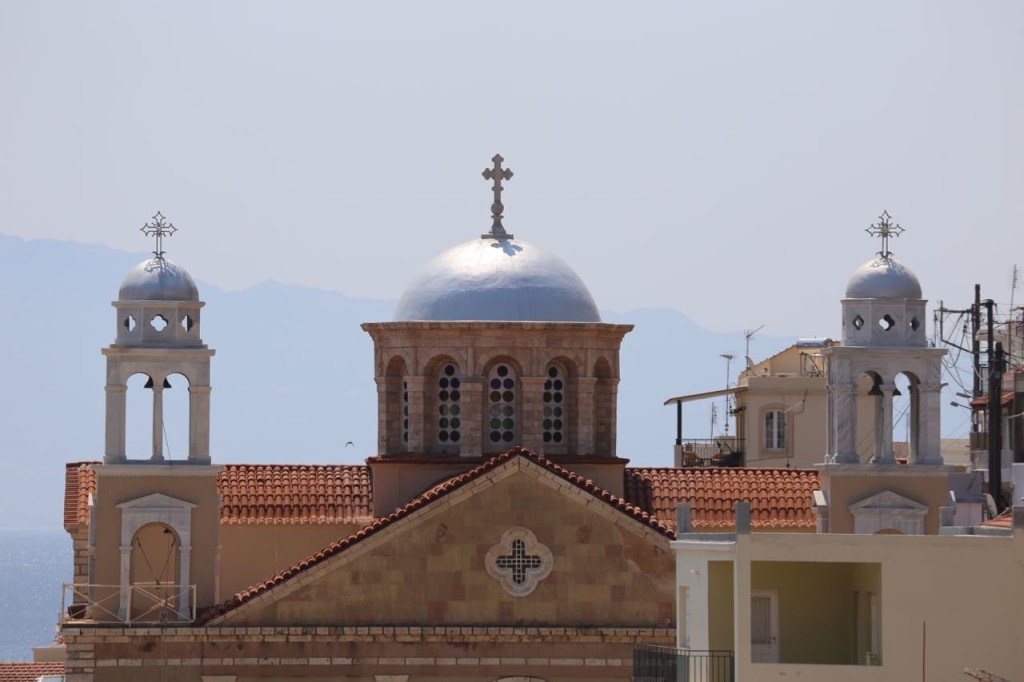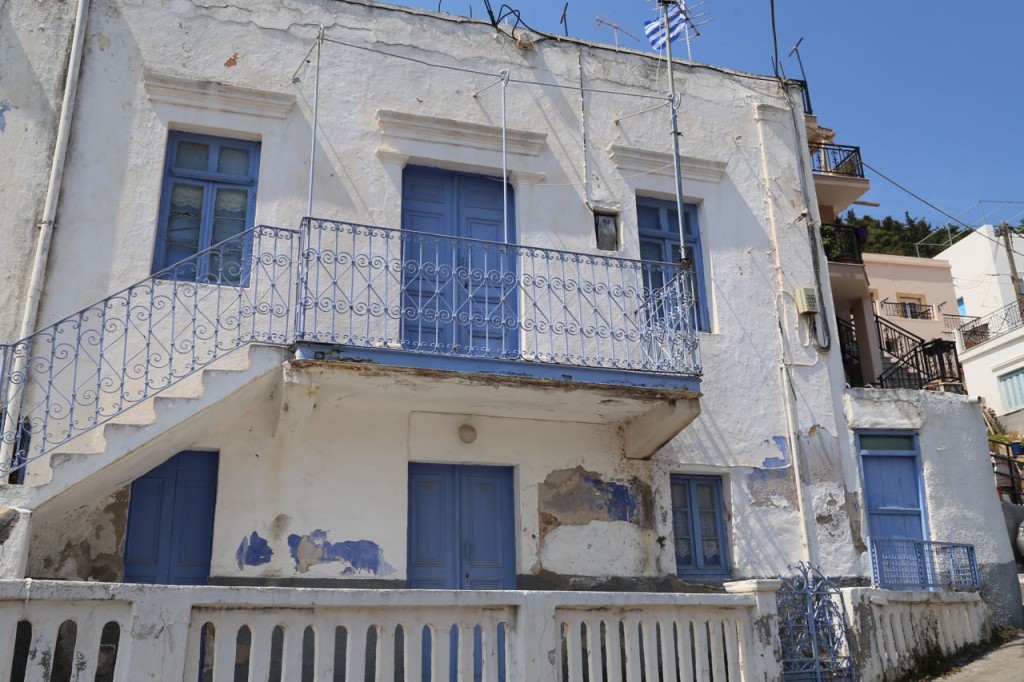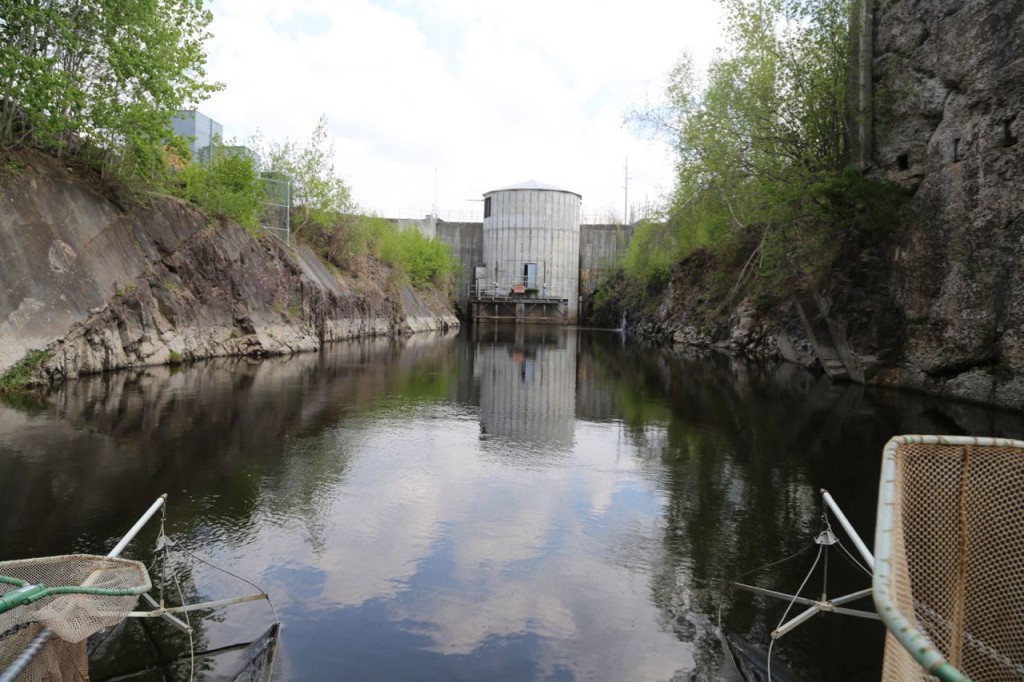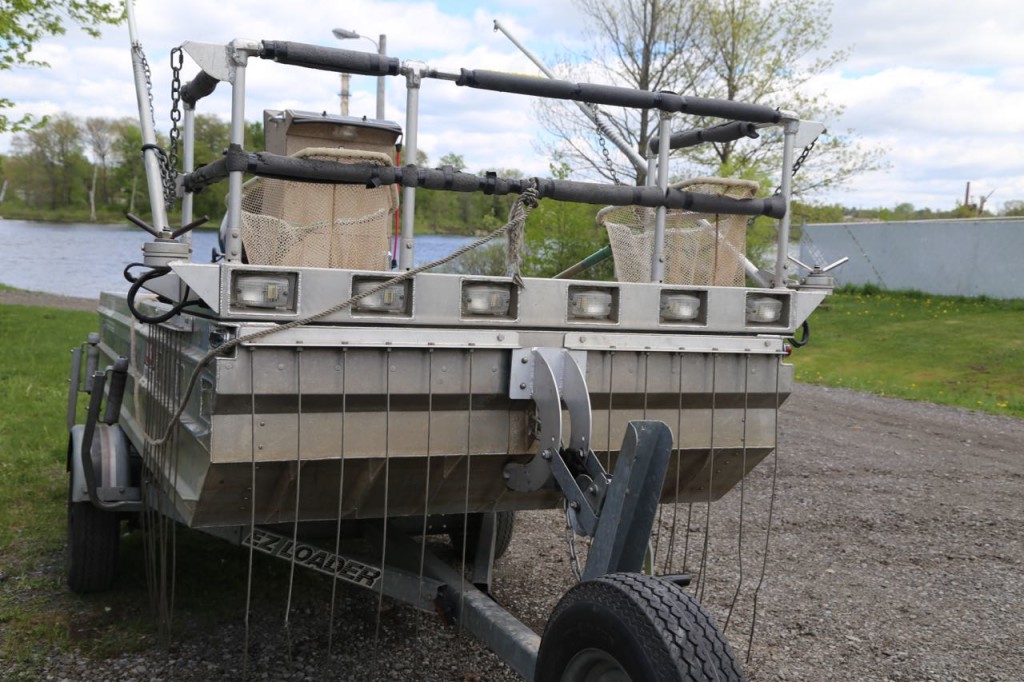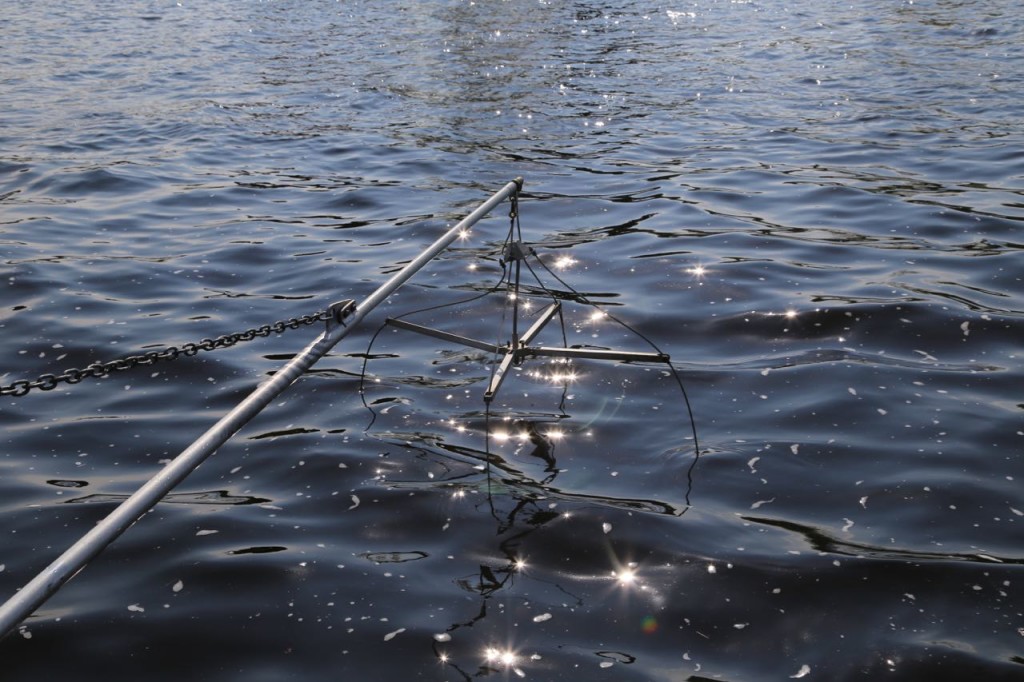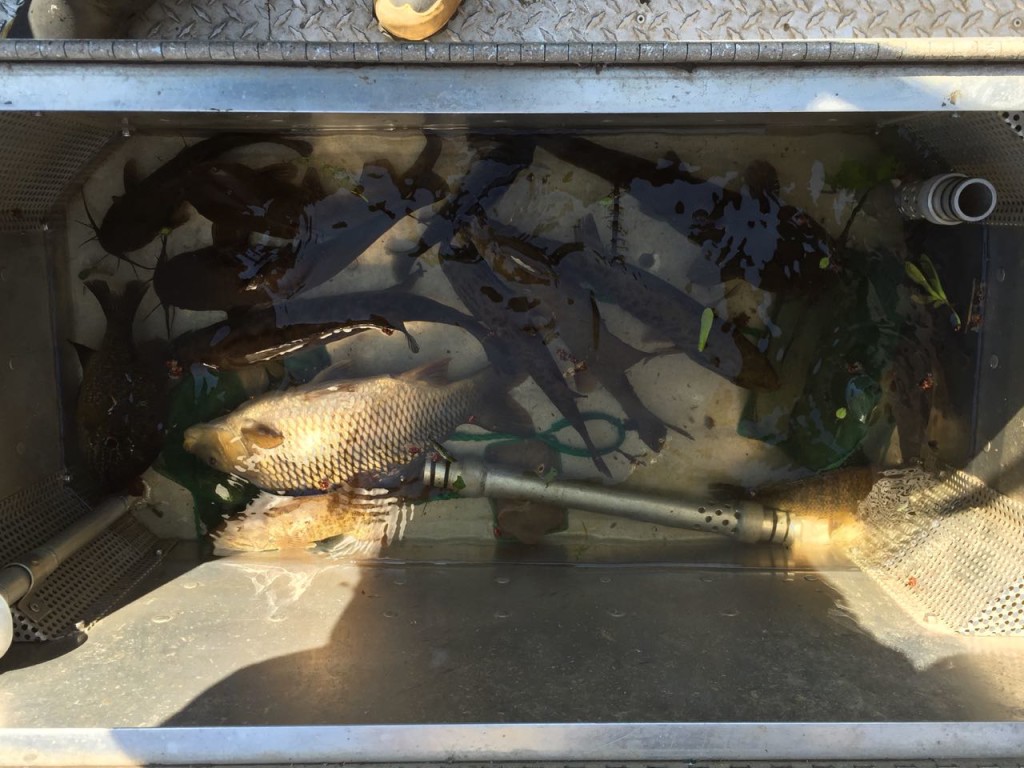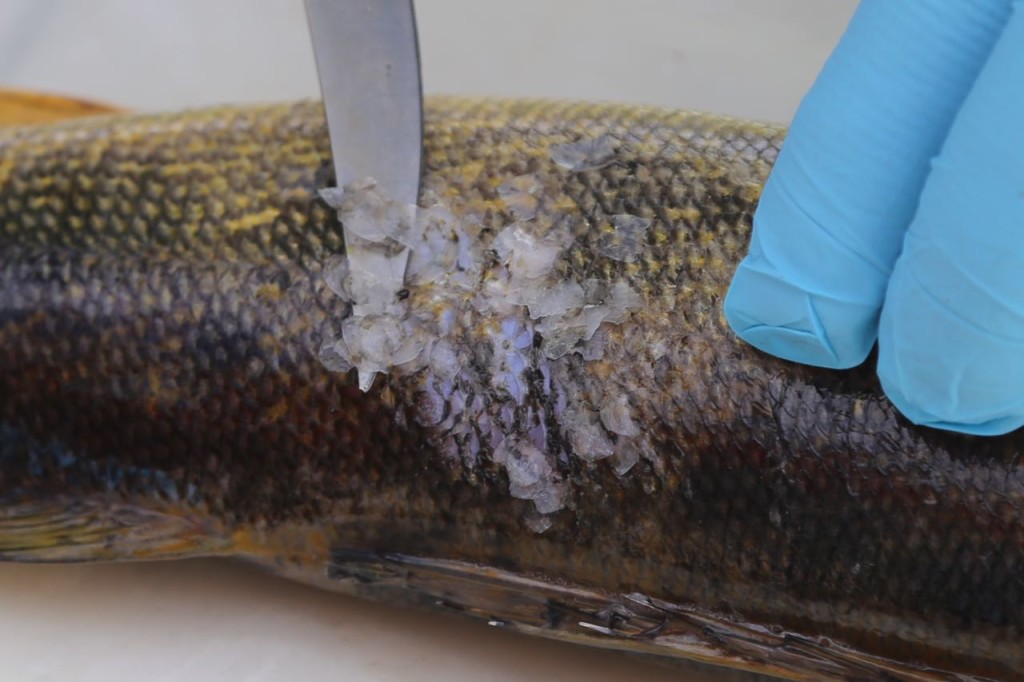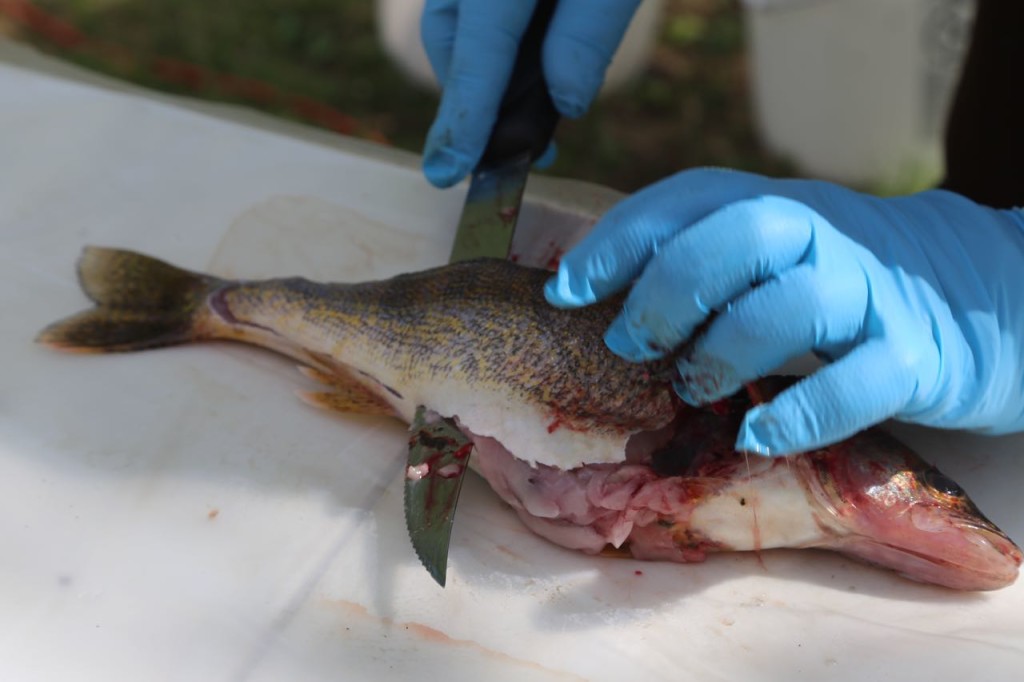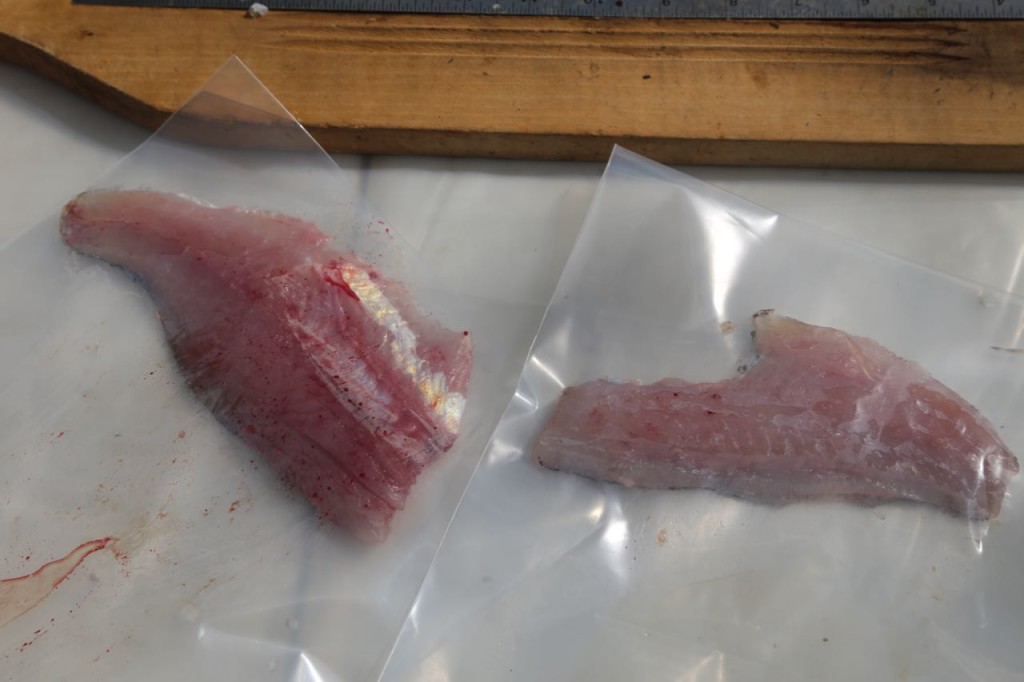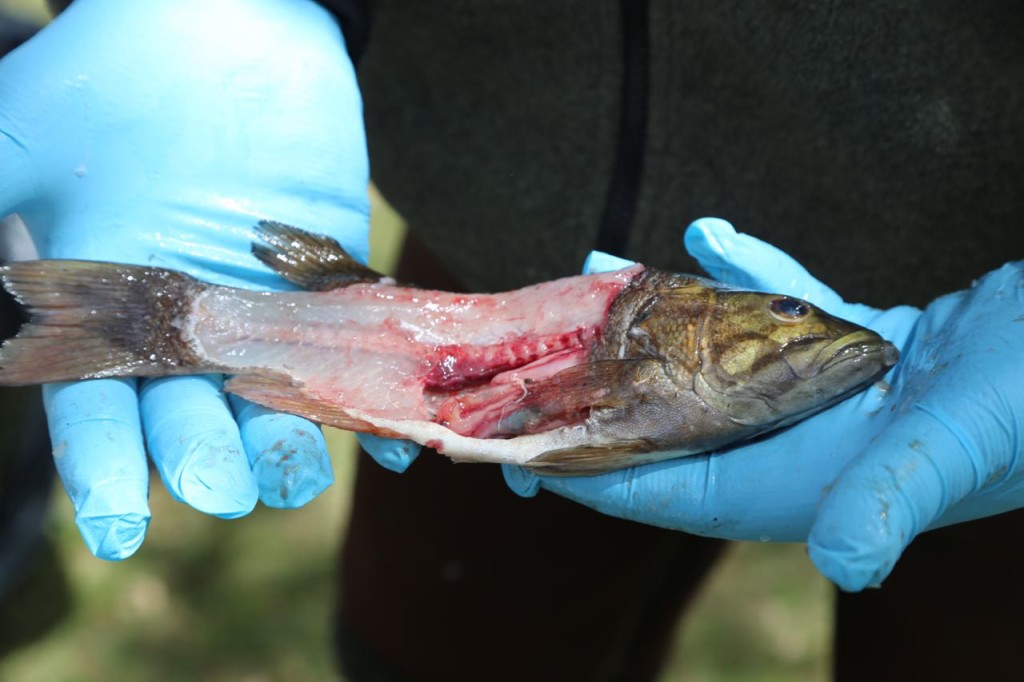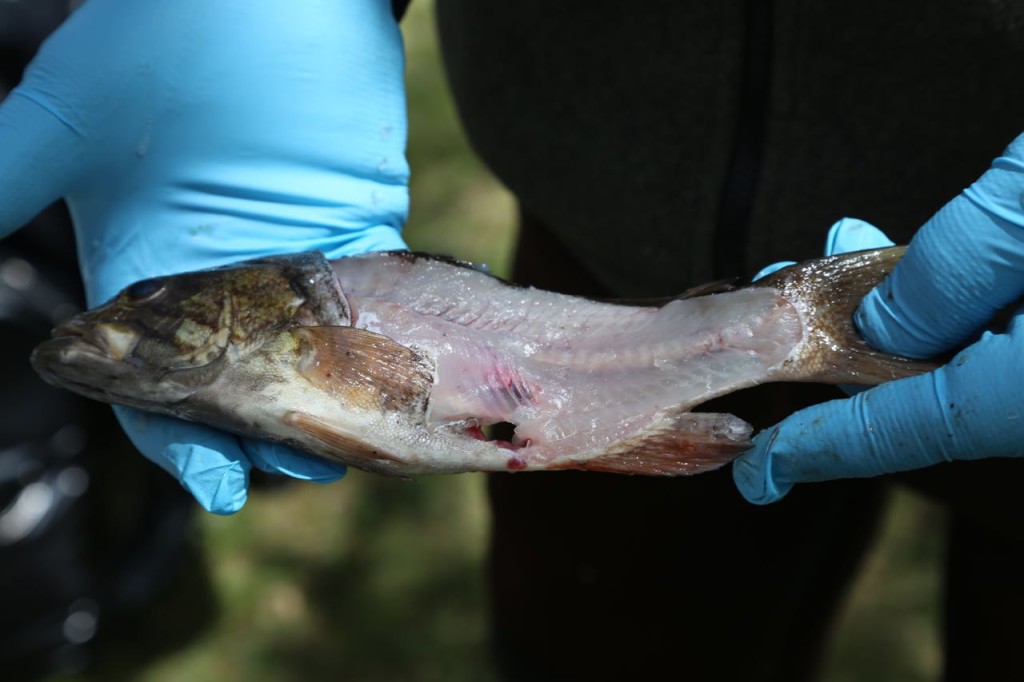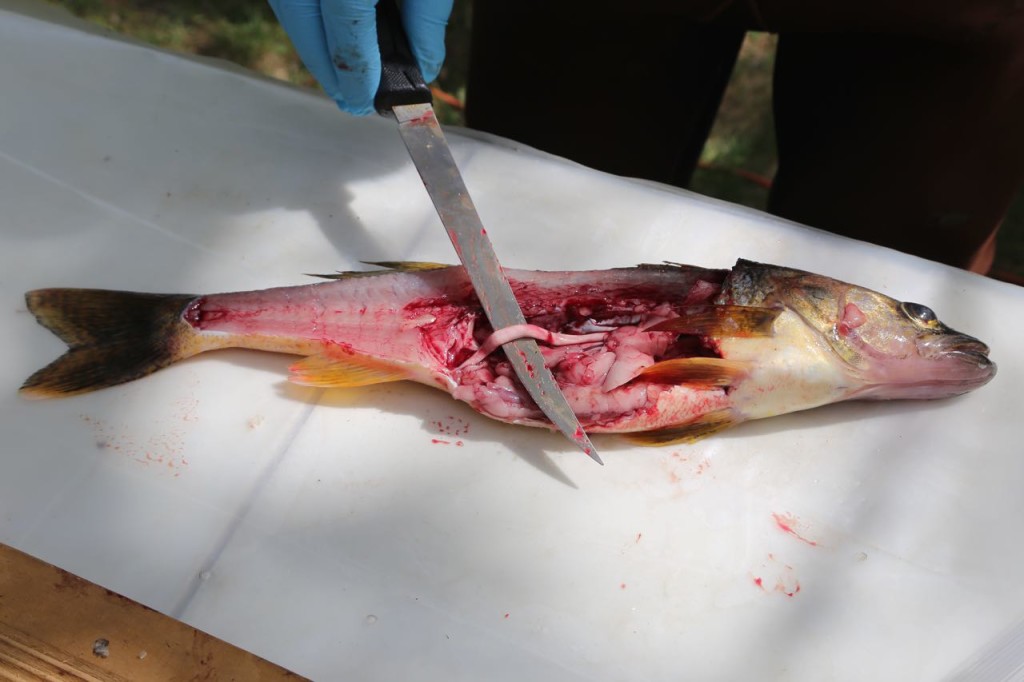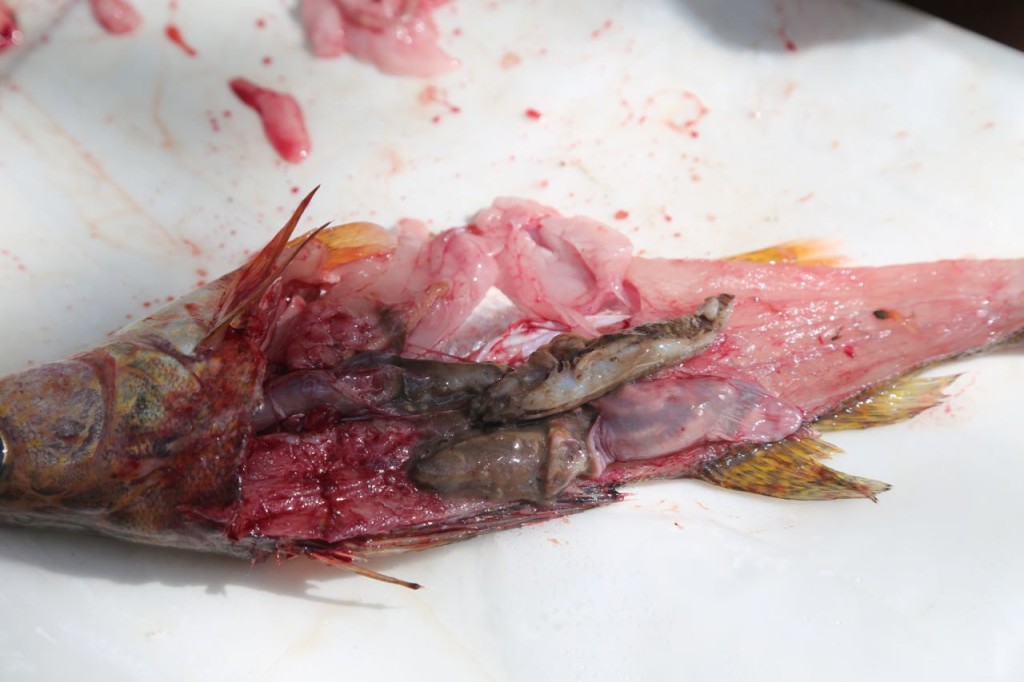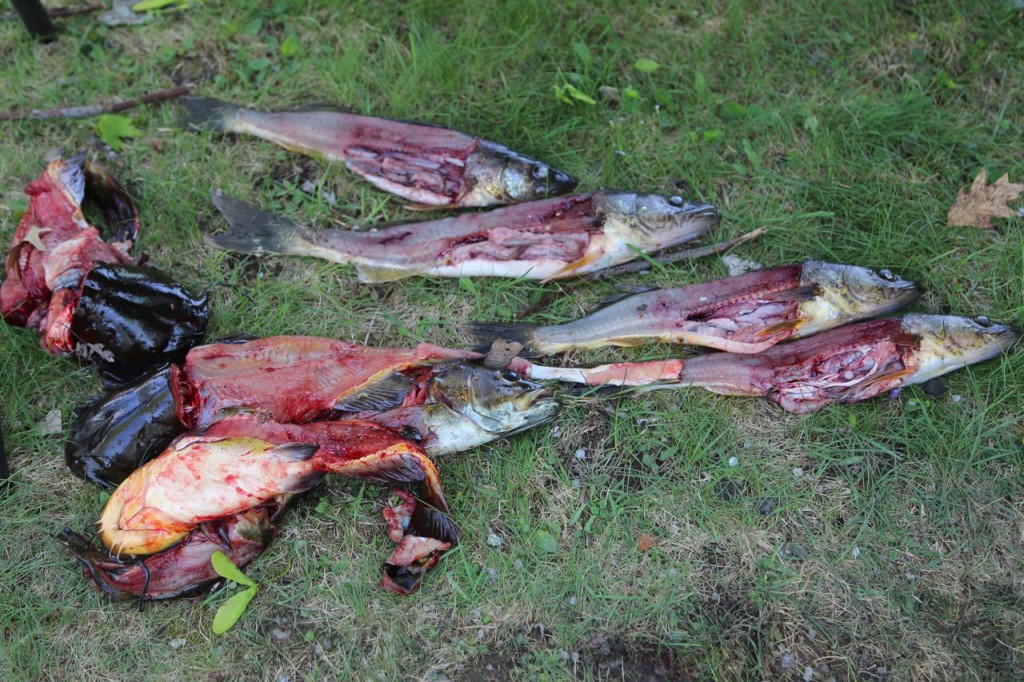As part of Doors Open Toronto, I visited the High Level Pumping Station. It is the oldest building in Toronto’s water supply system. The oldest part of the building dates back to 1906 with other additions added later until the final one in 1953. The building houses a vertical triple expansion steam engine from 1909 with a huge crank and flywheel, not to mention a lovely set of huge wrenches hanging next to it. The building also houses a steam-geared centrifugal pump. However neither of those are used anymore but instead have been replaced with nine electric motor-driven pumps to fulfill the pumping station’s objection of conveying drinking water to that area of Toronto.
Tag Archives: water
R.C. Harris Water Treatment Plant
As part of Doors Open Toronto, I toured the R.C. Harris Water Treatment Plant, which is not only the most beautiful water treatment plants I have ever visited, it is one of the beautiful buildings I have ever visited period. Colored stone and brass are everywhere. It was built in Arts Deco style, and in my opinion as an engineer, lays tribute to the importance of what the plant does, providing clean water to Toronto. It has two galleries with huge windows to allow viewing of the filtration chambers. In front of these windows are gorgeous stone tables with simple bronze control levers. The plant itself sits on hill overlooking Lake Ontario, where it gets its supply of water to clean.
Cabrillo National Monument
While in Sand Diego, I visited Cabrillo National Monument. Actually I visited it twice. I went in the morning, and the entire area was covered with thick fog. I explored the tidal pool area and met some cute crabs, limpets, and snails. I then went to the peak area and tried to view San Diego underneath the clouds. It was kind of amazing to be on a peak about 400 feet above the ocean and look at a giant fog encompassing almost everything below. I then came back in the afternoon and was finally able to get some good views.
Cueva Ventana
I got to visit Cueva Ventana (Window Cave) today in Arecibo, Puerto Rico. The tour starts by walking by Pee Wee Cave, which only meets the bare minimum requirements of a cave. You don’t go in. There is no point or room really. There is a short walk through the forest, which when I visited meant getting to see among other things a bunch of giant snails on the trees. Then you walk through cave number two, which I don’t think they actually named. The middle portion of this cave is, well, cavernous, with huge ceilings and wide walls. However the walk through it is fairly short. Then you walk down an extremely steep path to get to the actual Cueva Ventana. There are bats living in there among the limestone columns. At the end of the cave is the Ventana. It has amazing views of the Arecibo River valley. The valley is gorgeous, and you can see the mountains beyond. The tour is worth the view alone. However the caves are really neat to see also, and I love bats, so getting to hear and see them was also a highlight. Sadly while there, you can see vandalism from years past, but tourism is now helping to support security and clean up for the site.
Man Swims the Gowanus Canal
I was planning to come to New York for the weekend, and by pure chance this was the weekend Christopher Swain announced he was going to attempt to swim the Gowanus Canal again. He tried in April but the threat of rain and then actual lightning, which caused the New York Police Department (NYPD) to order him out of the canal, prevented him from swimming the entire length. This time he was successful. He said he did it to raise awareness of the pollution of the Gowanus Canal. When being interviewed by reporters, he said he was concerned this would be perceived as a stunt. He said they would actually be collecting data that would be given to school kids, so they could help solve the problems affecting the Gowanus.
As an environmentalist, I appreciate him bringing awareness to the plight of the Gowanus. I even appreciate him wanting to bring awareness to school kids. Honestly though, as an environmental engineer, who works in the field of cleaning up hazardous waste sites, I can’t see what he is doing as anything other than a stunt. I seriously can’t think of any information he could gather that couldn’t be gathered from a person in a boat, a person who would not be exposing herself or himself to the risk that Mr. Swain is. At one point, Mr. Swain stopped swimming to collect data and told anyone listening that the water had a temperature of 64ºF and had a pH of 7.5. He started by saying “for the scientists out there” and then said he wished he had studied science harder or something to that effect. First, both those two pieces of data could easily be collected from a boat. Second, neither of those pieces of data tell me anything about the state of the Gowanus. The temperature just reflects that it is fall, and a pH of 7.5 is close to neutral and what is expected for a body of water. [Yes, thermal pollution, where water that is too hot is released into a body of water, is a thing that can affect water bodies because hot water has less oxygen, and the reduced oxygen would affect any wildlife in the water, but it is not a concern for the Gownaus.]
Also, I fail to see what school kids are going to do to help solve the problem. I completely agree in bringing awareness of environmental issues to children, but it is environmental professionals and perhaps community organizers who are going to solve the pollution problem with the Gowanus. The Gowanus has two main issues. First, it has hazardous pollution from years past that needs to be cleaned up. This is where the US EPA and Superfund comes in. Hazardous waste includes PCBs, heavy metals, and whatever other fun chemicals might be polluting the canal. Second, it has wastewater pollution from the past and current that needs to be cleaned up. New York City, like many old cites, has a combined wastewater system. This means that wastewater, the stuff that flows from your toilet and sink drain, and stormwater, the stuff from street drains, flows to the same destination. When it is not raining, it is not an issue. The wastewater all flows to various wastewater treatment plants where it is treated before being released to a river or ocean. During rain events, there can be a problem because the wastewater treatment plant may not be able to handle all the water flowing to it. In this case, untreated wastewater is generally directed to some location (technical term is outfall) where it enters a body of water, like the Gowanus. This is actually the main immediate risk to Mr. Swain. Most of the hazardous pollution is in the sediment at the bottom of the canal, and drinking one mouthful of the Gowanus water probably will not kill you, in terms of the hazardous chemicals, or at least not immediately. [DO NOT TRY THIS. THIS IS AN EDUCATED GUESS.] However, because of the untreated wastewater that flows into the Gowanus, the canal has a lovely concoction of viruses, bacteria, and who knows what other pathogens having their own little party. This would be my more immediate concern for him or anyone else who might accidentally ingest Gowanus Canal water, getting an infection of who knows what pathogen. [According to news reports I’ve seen, after the swim, he stated that he swallowed three mouthfuls. My advice is to go see a medical doctor.] It is also not clear to me if there is other pollution concerns to Gowanus, like outfalls from nearby business or stormwater from the nearby area that may contain things they shouldn’t.
The Gowanus Canal absolutely needs to be cleaned up, and regulatory authorities and the community are already working on it. It may not be proceeding at the speed Mr. Swain and the community would like. I completely understand that. Cleanups, such as the Gowanus Canal, take time and money. It takes professionals, the regulatory authorities, the groups being regulated, and the community to determine the best path forward. Unfortunately, it generally takes patience also. My completely biased opinion is that not enough money is dedicated by politicians to cleaning up all the different pollution in this country. Hence even more patience is needed. One final note, in all the news reports, Mr. Swain and the reporters keep making reference to the Gowanus Canal being a Superfund site. It is, but the issue of untreated wastewater being released into the canal and causing, in my opinion, the more immediate risk to him or anyone else who wants to go for a dip, does not normally fall under Superfund regulation. Superfund (aka CERCLA) regulates hazardous waste, and pathogens are not hazardous waste. However, when the U.S. EPA finalized the Record of Decision for the Gowanus Canal Superfund site, they did require the City to build two very large tunnels to capture combined sewer overflow during rain events. [Edited to correct my statements regarding Superfund and the untreated wastewater contamination.]
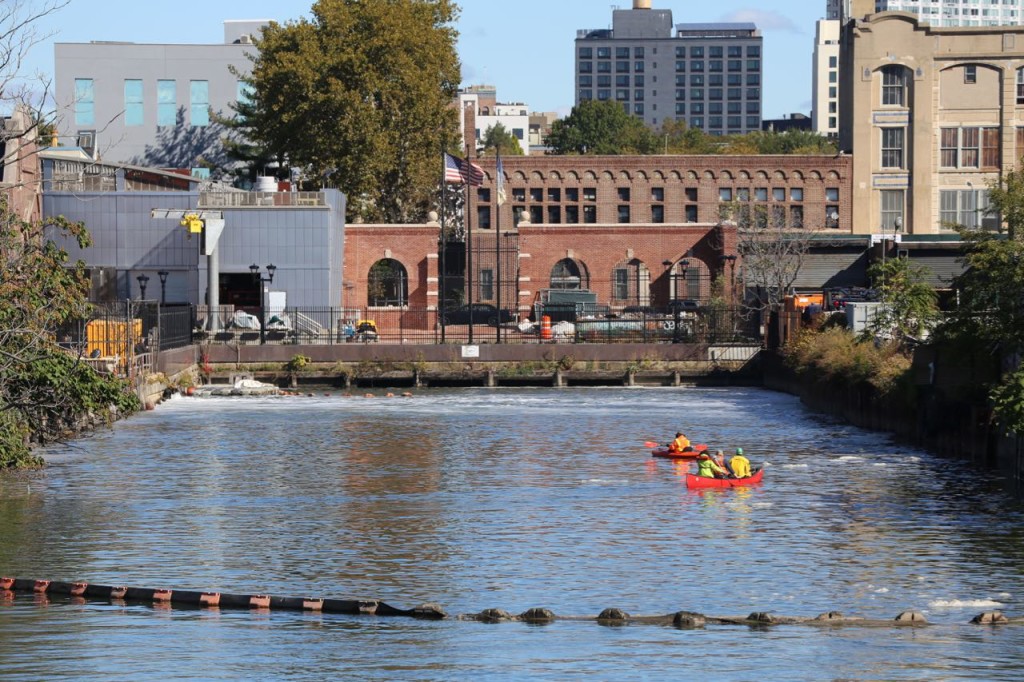
Mr. Swain and his support crew paddled to the start of the Gowanus Canal before he entered the water.
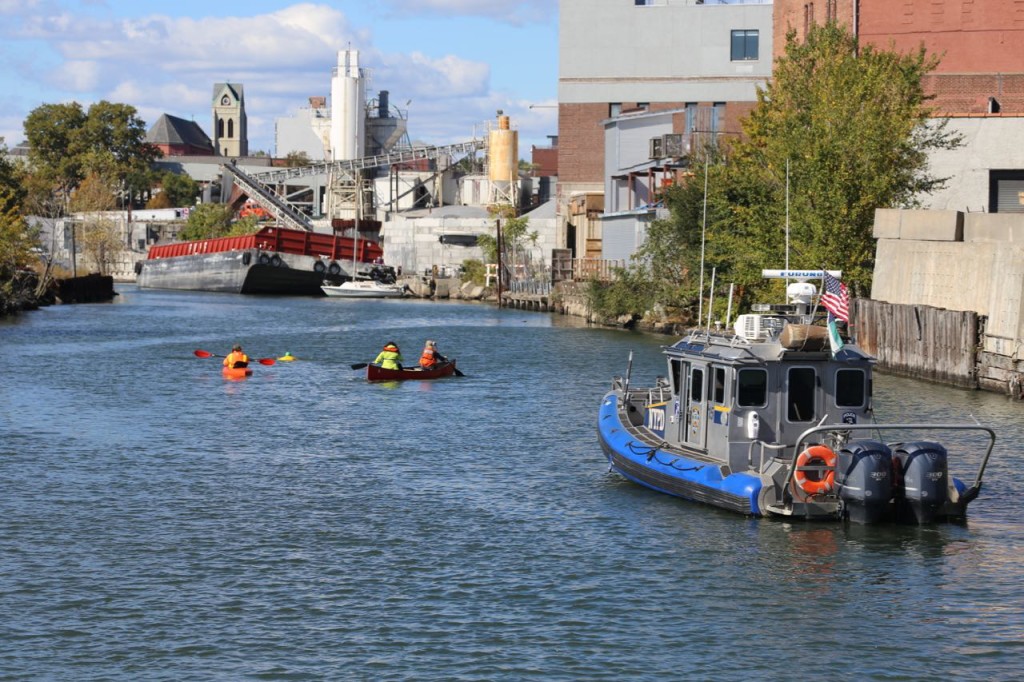
After he reached the 3rd Street bridge, the NYPD provided an escort (either the water wasn’t deep enough or the bridges prevented it before).
Newtown Creek
Newtown Creek is a natural creek that now resembles more of an industrial waterway and serves as a divider between Brooklyn and Queens in New York. I recently got a boat tour of it through Open House NY with superb guides from Newtown Creek Alliance and was able to see all the industrial facilities that are on it as well as a few places where its natural state is peaking through. Newtown Creek is heavily polluted because of New York City’s combined sanitary wastewater and stormwater system, which has led to untreated wastewater flowing into the creek during heavy rain events, and also industrial pollution, which has led to it being a Superfund site. A trip down Newtown Creek is almost history lesson down NYC’s past with some historic sites still visible like an old Standard Oil building. More modern parts of NYC also lie on the creek, most famously the newly redesigned and rebuilt Newtown Creek Wastewater Treatment Plant and its eight stainless steel digester eggs.
Marine Waste Transfer Station
I got the chance to tour New York City’s brand new Hamilton Avenue Marine Transfer Station. It is scheduled to open next year and is located on the Gowanus Canal in Brooklyn. It will be the transfer point for household waste from ten Brooklyn community boards. It is the first marine transfer station there. All other waste is moved on trucks and rail. It is very impressive. Once operational, it will operate 24 hours a day and six days a week (no Sundays). Currently waste from the area goes to waste to energy incinerators. There will be 12 sanitation workers per shift plus one supervisor.
Trucks enter the building and are first weighed on a scale.
Once inside the building, the trucks back up to the edge of the floor and lower their trash onto the mixing floor below.
Front loaders and other equipment on the floor below are used to push the waste through openings in the floor into containers waiting below the mixing floor.
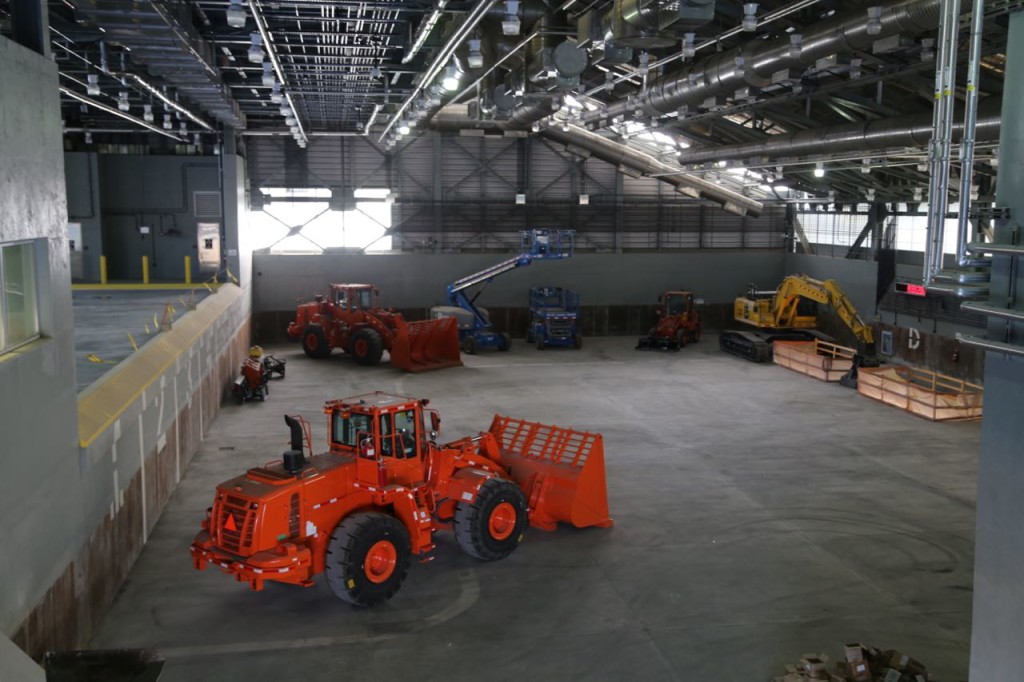
Waste mixing floor with equipment to push waste into containers, the elevated floor on the left is where the trucks will lower their loads
The openings in the mixing floor are only as big as the standard containers that will accept the waste. The station aims to put 20 tons of waste in each container.
Once the container is full, equipment is then used to place a top on the waste container.
The containers are moved the loading area to the topping area to the storage area on rails.
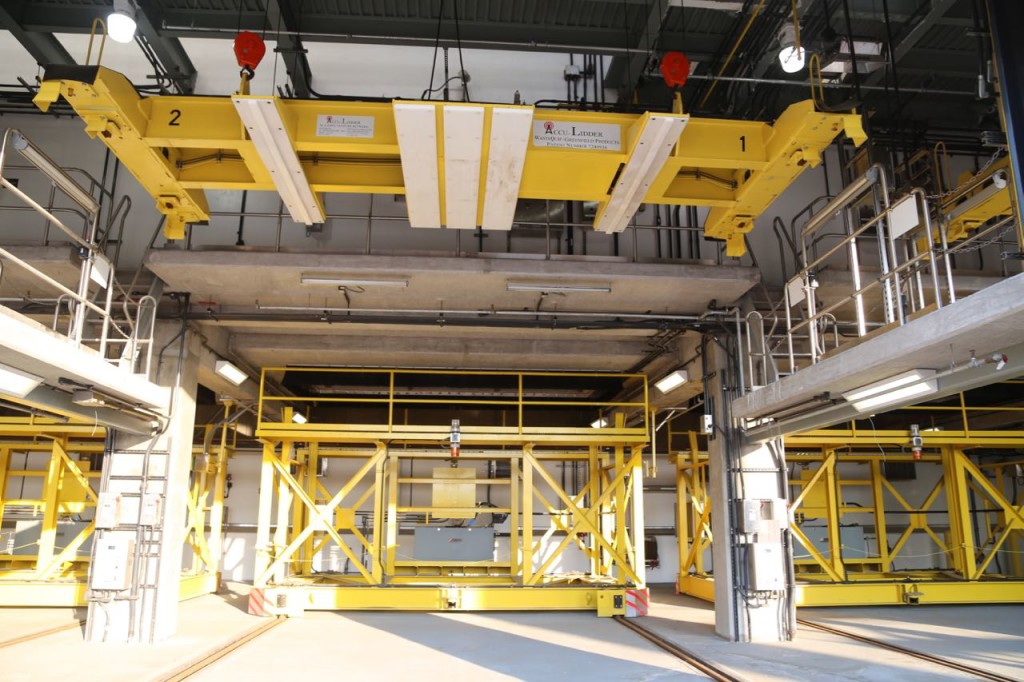
Loading bay, in foreground are toppers and behind, with yellow frames, are where containers will sit to receive waste
Cranes that are also on rails are used to move the containers from the building to stacking areas to finally the barge.
There are two cranes, but for safety, only one is used at a time. The other one is a backup during maintenance.
Istanbul: Basilica Cistern
The Basilica Cistern is without a doubt one of the coolest, human made places I have ever been. I don’t think you need to be an engineering nerd like myself to find the place to be really neat. It is an underground cistern built in 532 A.D. It is a wonderful example of engineering and was used to store water. Now it is a tourist attraction complete with a cafe. Yes, there is a cafe, and in my opinion, it would be only more perfect if it was a Starbucks simply because they are everywhere. The cistern was featured in the James Bond movie ‘From Russia With Love.’ Two of the columns have Medusa heads as bases, possibly because they fit and were available. There is still water in it below the walkways, and fish live there. They were introduced to keep the water clean.
Greece: Kalymnos
This morning we went to Kalymnos, the sponge divers’ island. The island is in Dodecanese island group and seems be known for the sponge divers and that is about it. We visited Nautical and Folklore Museum. It was tiny but had some nice exhibits on the sponge divers and the history of them. According to the museum curator, the death rate among sponge divers was near 25%, which is depressing to say the least.
Sampling Fish
Recently for work I got to help out in the field taking samples to quantify environmental contamination. Some of the samples we were taking were fish tissue to measure the levels of polychlorinated biphenyls (PCB) in them. The fish live in a river that was contaminated decades ago. The sampling results will be used for fish advisories and also to determine a clean up plan.
Sampling fish starts with the really fun part, which is cruising on a small electrofishing boat. Electroshocking the fish allows you to catch them alive and throw back any fish we didn’t want. We had target fish we were trying to catch to sample, and those were the only ones we kept, and we only the number of target fish we needed. The electroshock sort of stuns the fish but doesn’t kill them. The electrofishing boat has two long poles with anode wires hanging off of them protruding from the front of the boat. There were more wires hanging from the bow of the boat, and those are the cathodes. The electricity flows from the anodes to the cathodes. We stood at the front of the boat in rubber soled boots with nets extended waiting to catch any fish stunned by the electroshocking. Netting electroshocked fish is not actually as easy as it sounds. Some of the fish are more stunned than others, so some fish seem slightly confused but then swim away. Also, some were stunned but at a depth too low or cloudy for us to catch or see. According to the boat’s captain, the water had really low conductivity, which was making it difficult. Since we had target fish we were trying to catch, I, naturally, kept catching fish we didn’t want. I threw a lot of fish back. Still, a day on a boat catching or not catching fish was a wonderful change from the cubical I normally work in. Also, I learned that you really need polarized sunglasses when out on the water.
Once we got the fish to shore, the biologist took over. The fish were weighed and their length measured. He took a a sample of their scales from a standard location, and those scales were going to be used by a laboratory to determine their age. Evidently scales can be used to age fish in the same manner tree rings age trees. WARNING: If you are uncomfortable looking at the insides of fish, do not read any further. You should probably not eat fish also, if you can’t look at an uncooked one.
The rest of the scales were then scraped off. The fish were then cut. Only the fillets were used for sampling. The part of the fish used for sampling can differ depending on what the exposure pathway being examined is. We took two different parts: the filet, which represents what a human would normally eat, and also the fillet with rib meat. The rib meat is normally not eaten, but it would have more PCBs in it, so using it in the sample would represent a worse case scenario for a human consuming fish.
I also learned a bit of fish anatomy during the sampling. The biologist was also sexing the fish.
We weren’t necropsying the fish, but we still got a look inside, including sometimes as to what it had eaten recently.
We sampled quite a few fish, but it was for science and to benefit the community.

